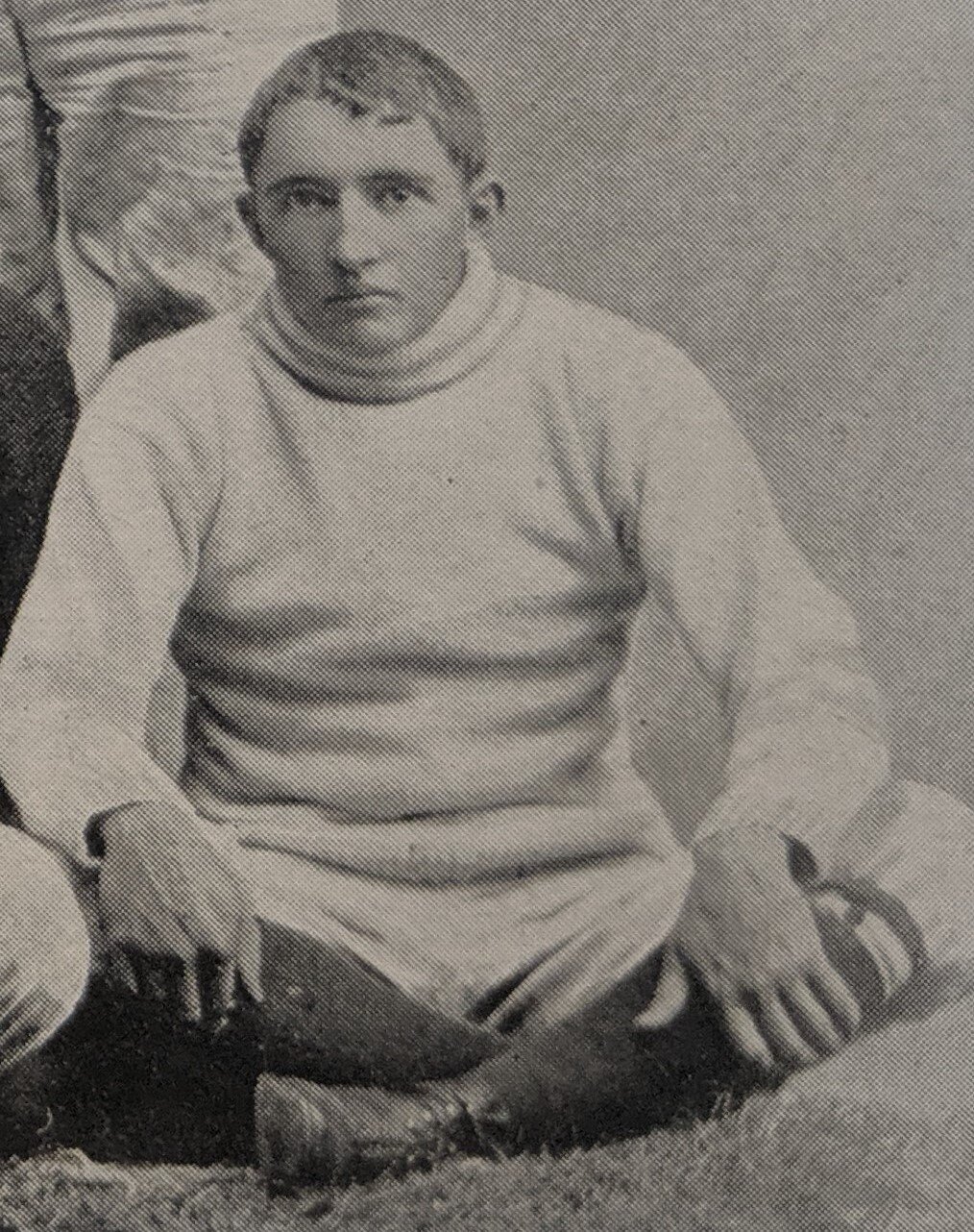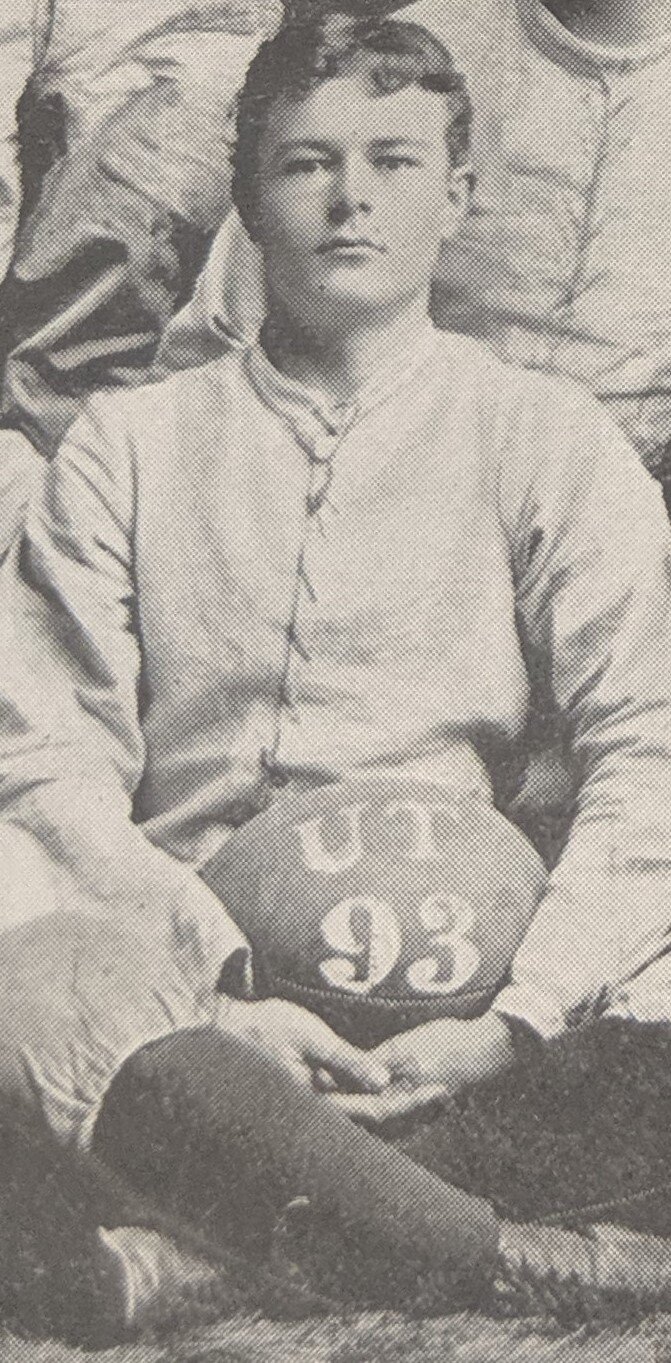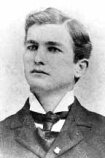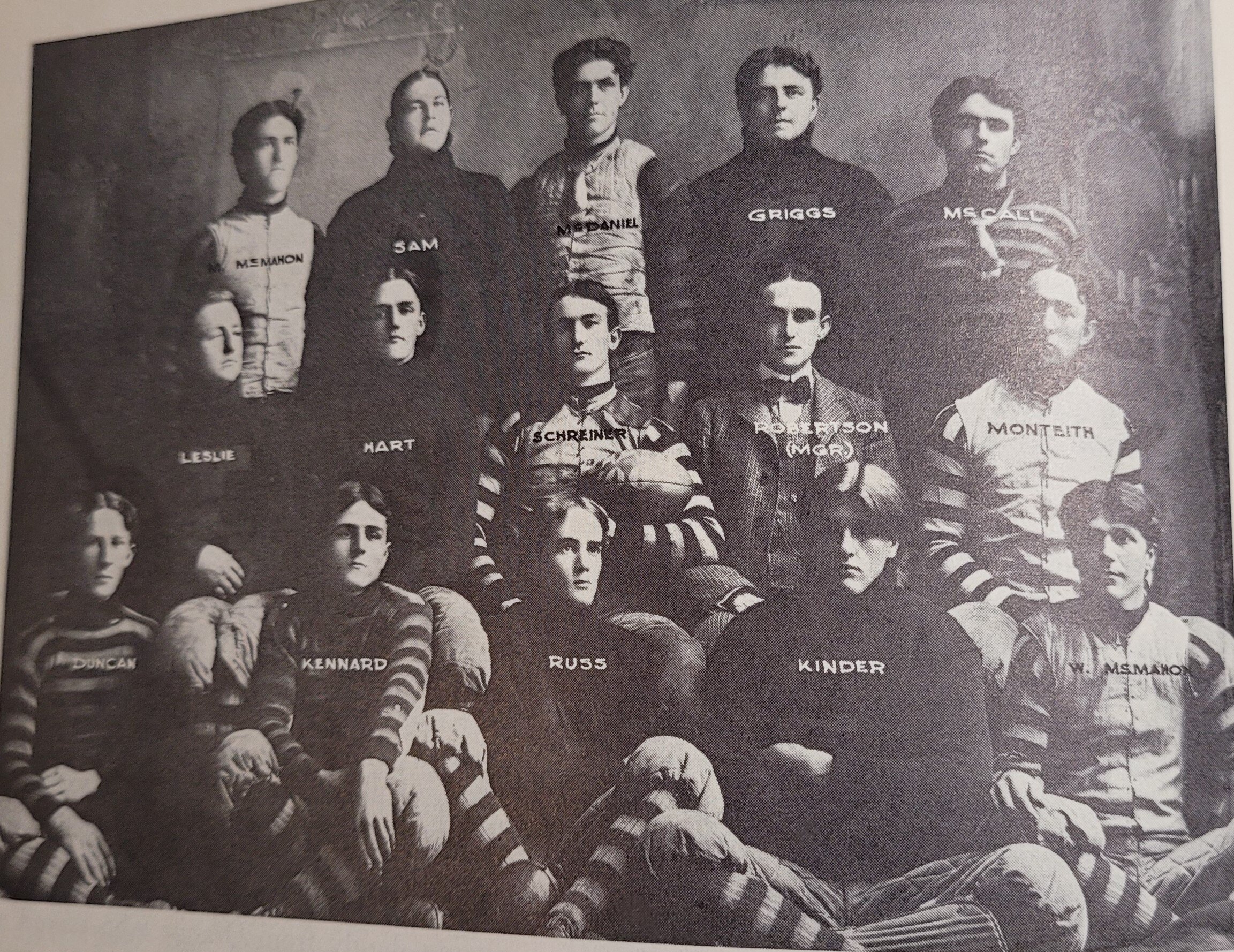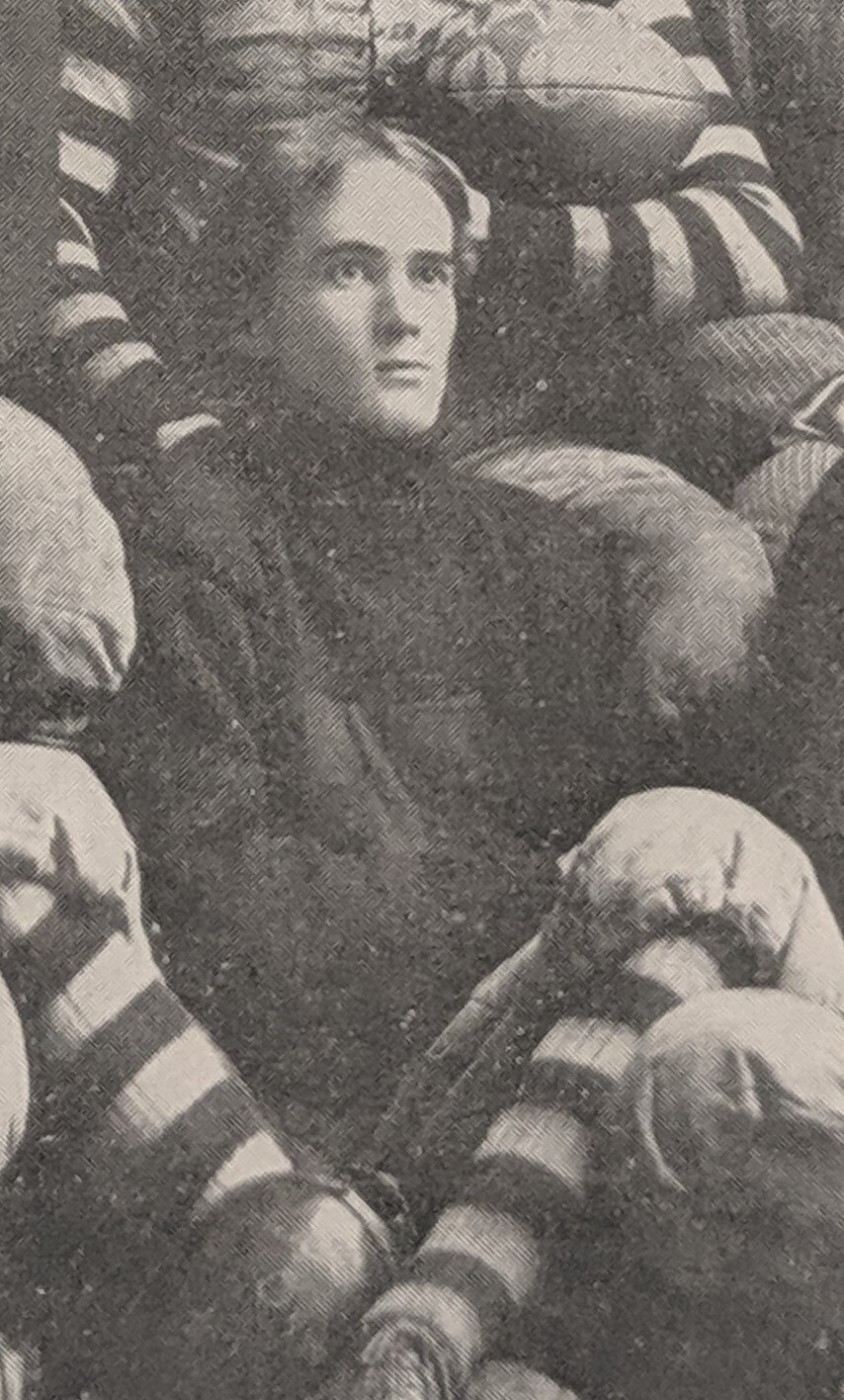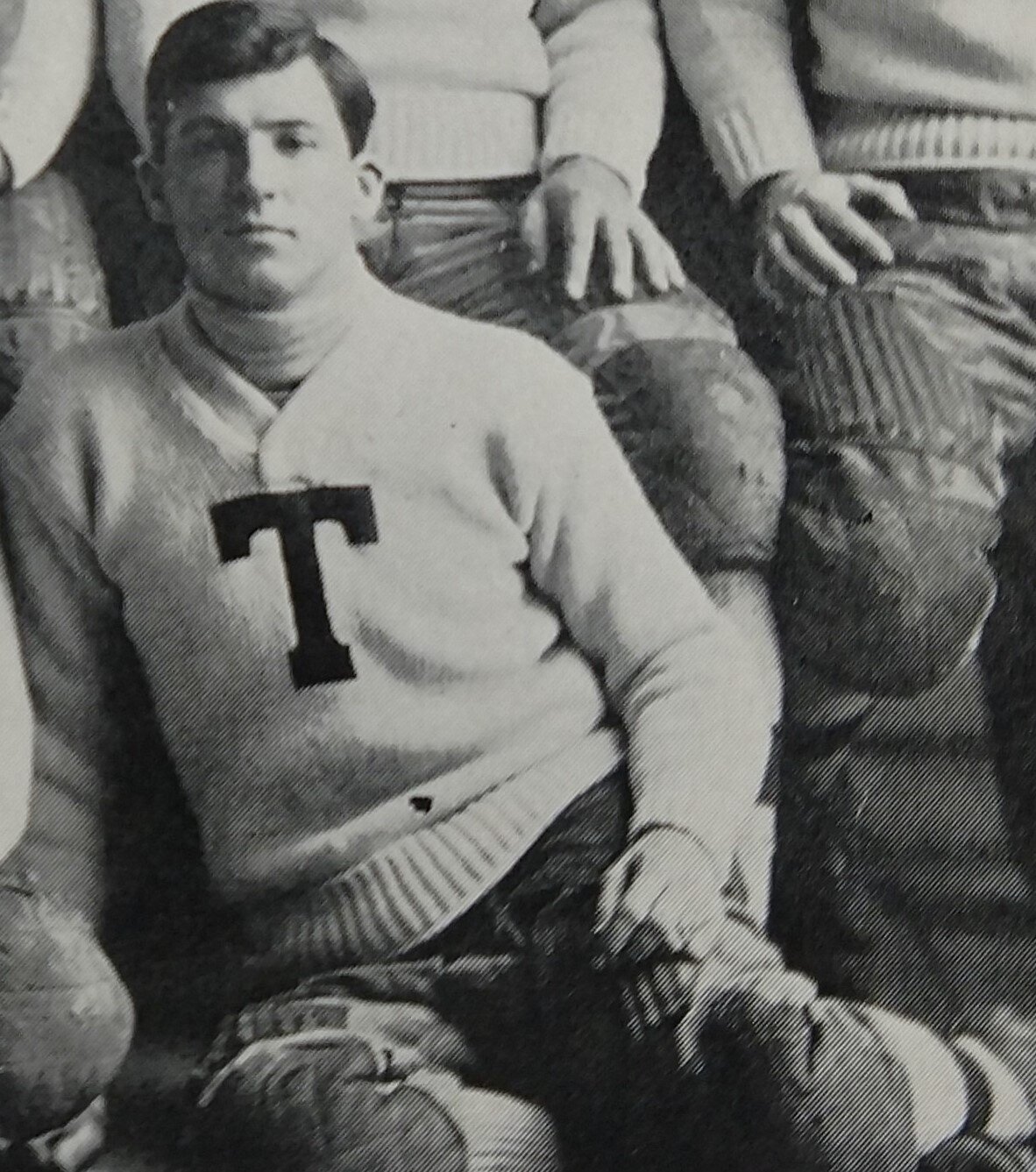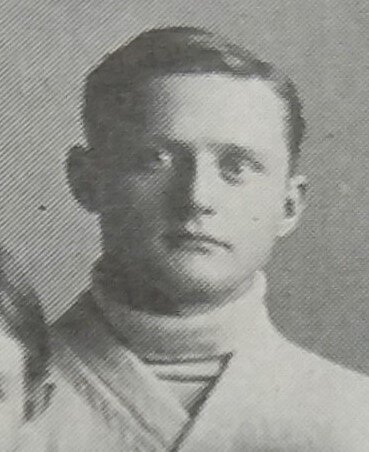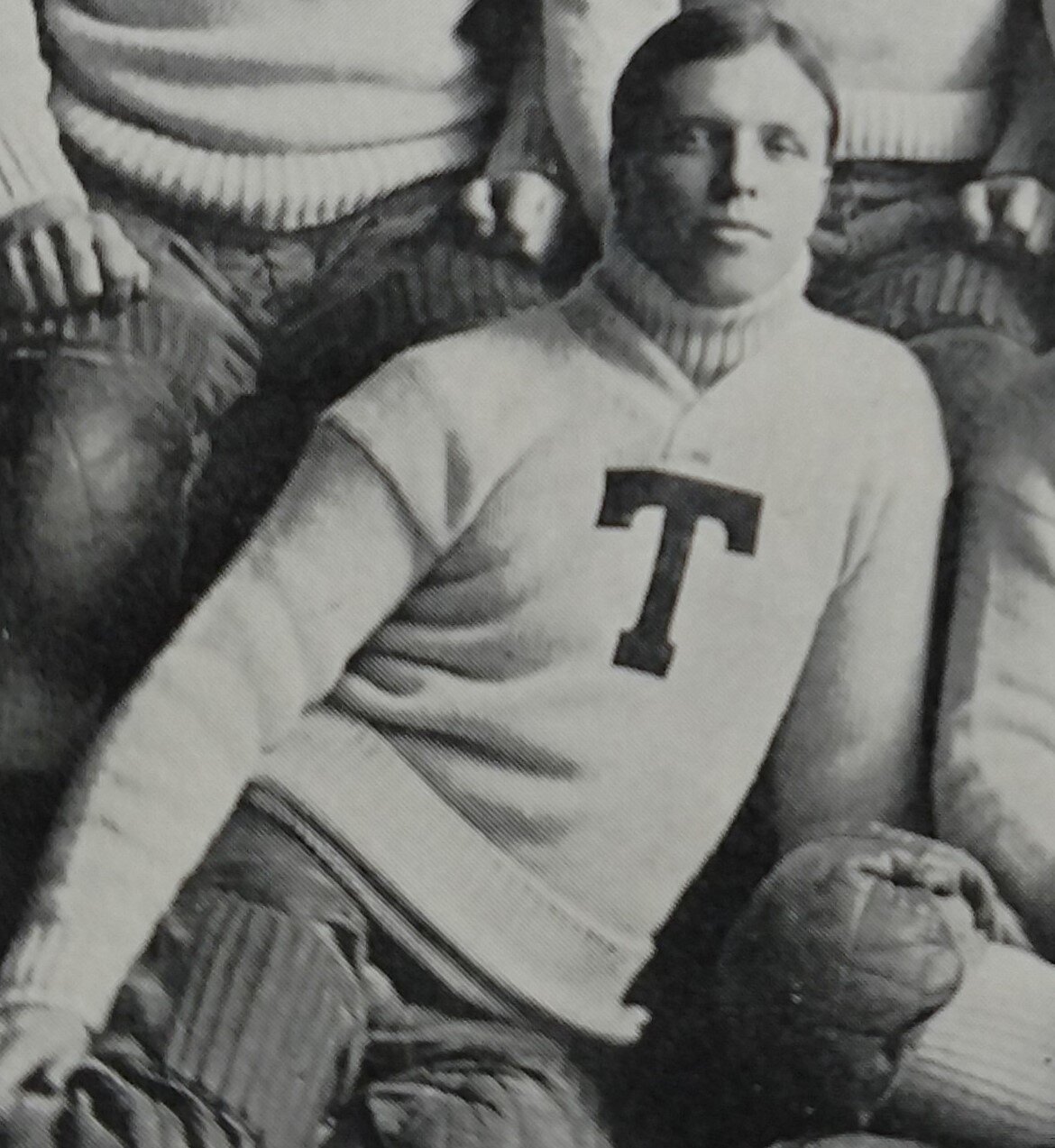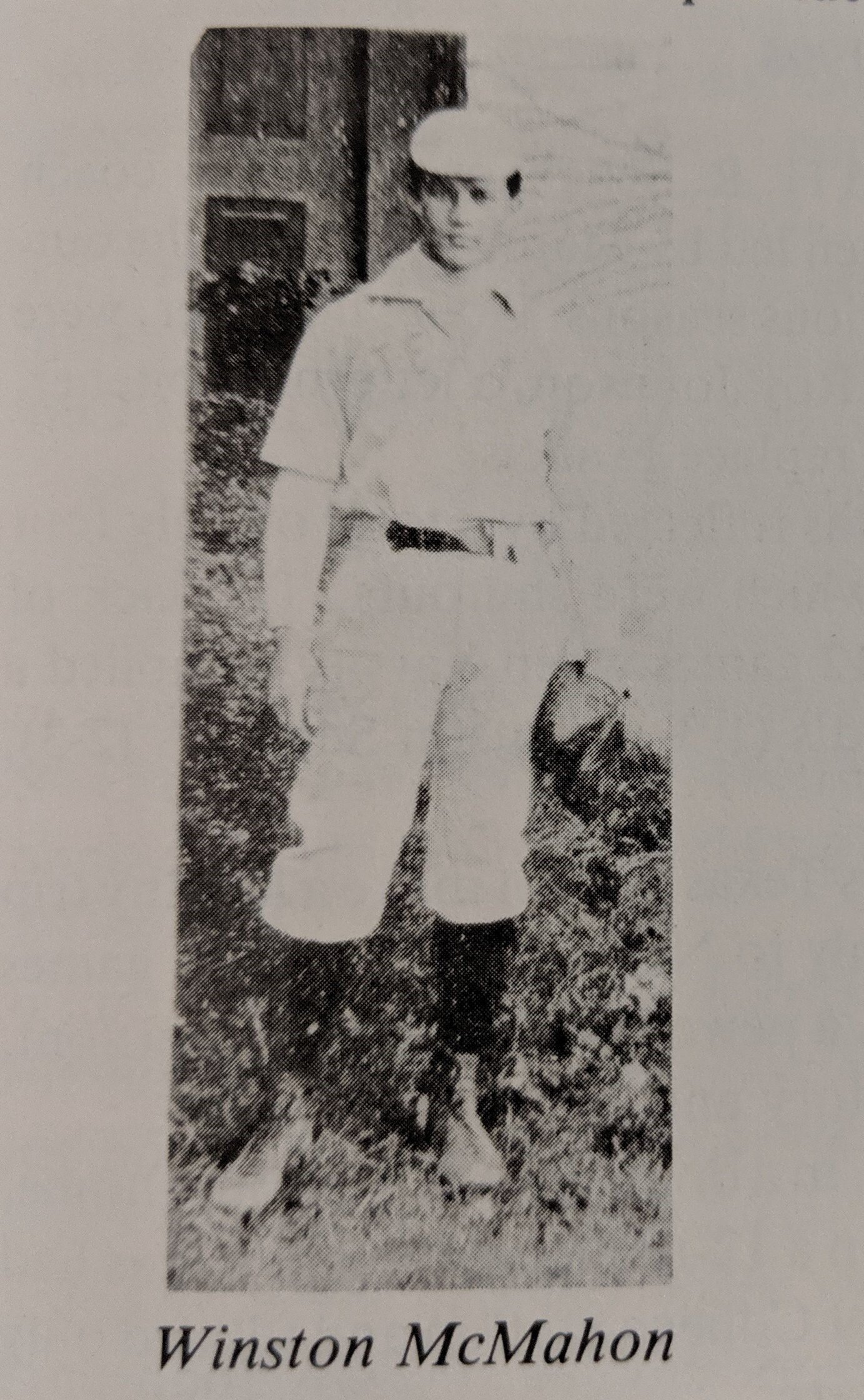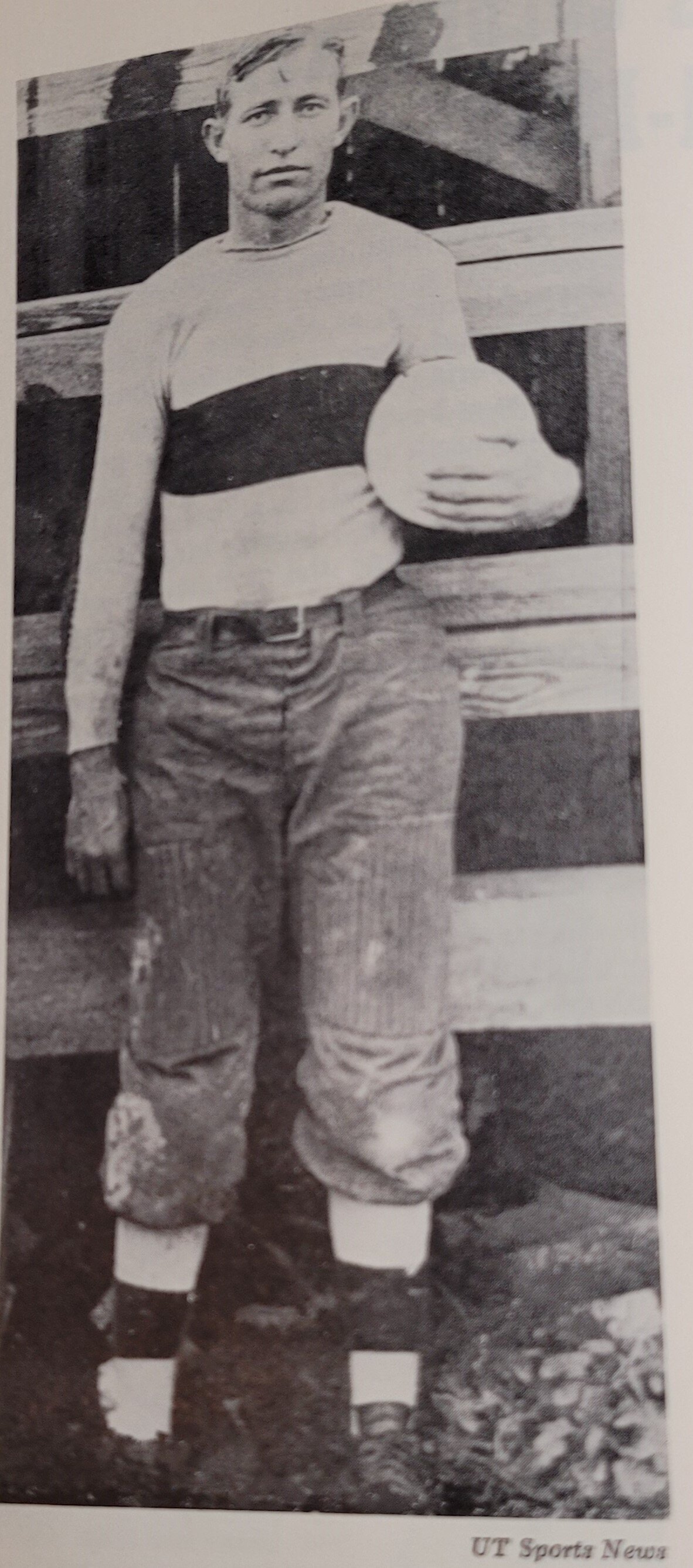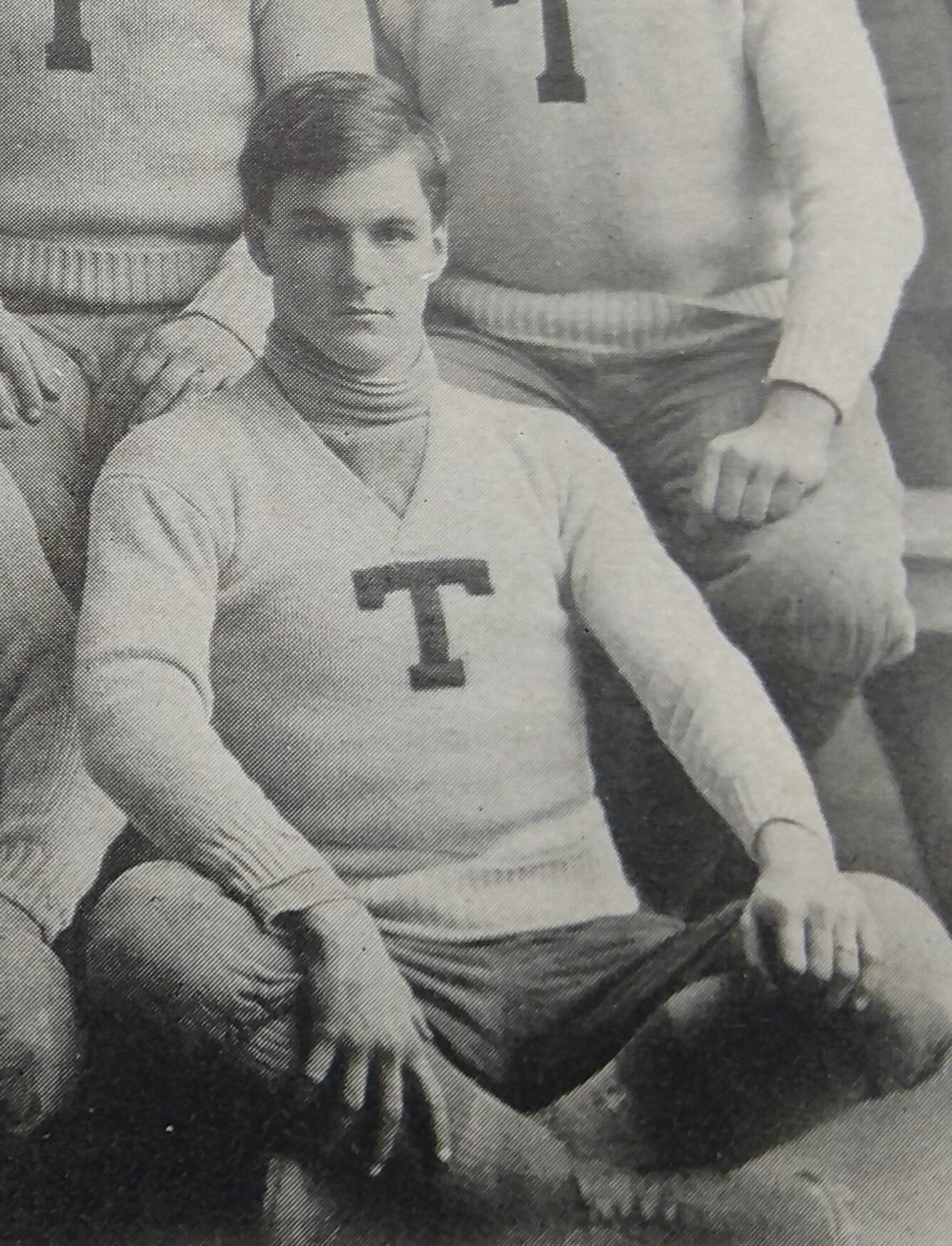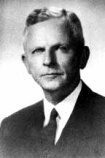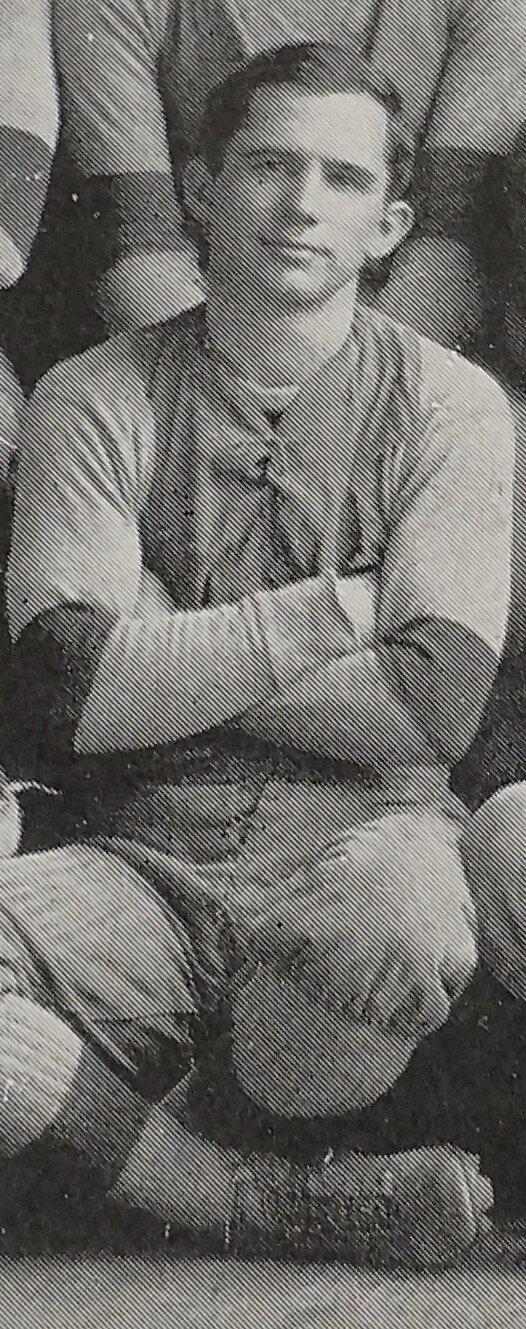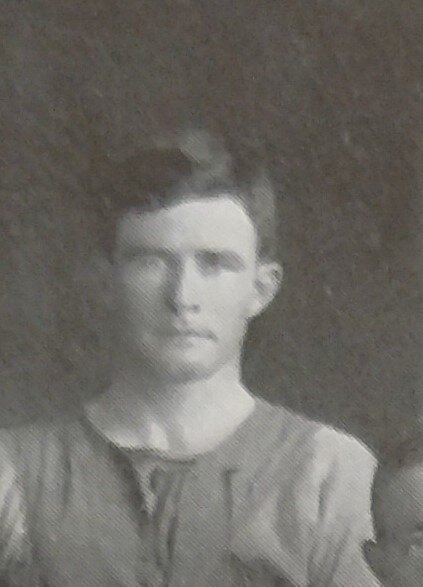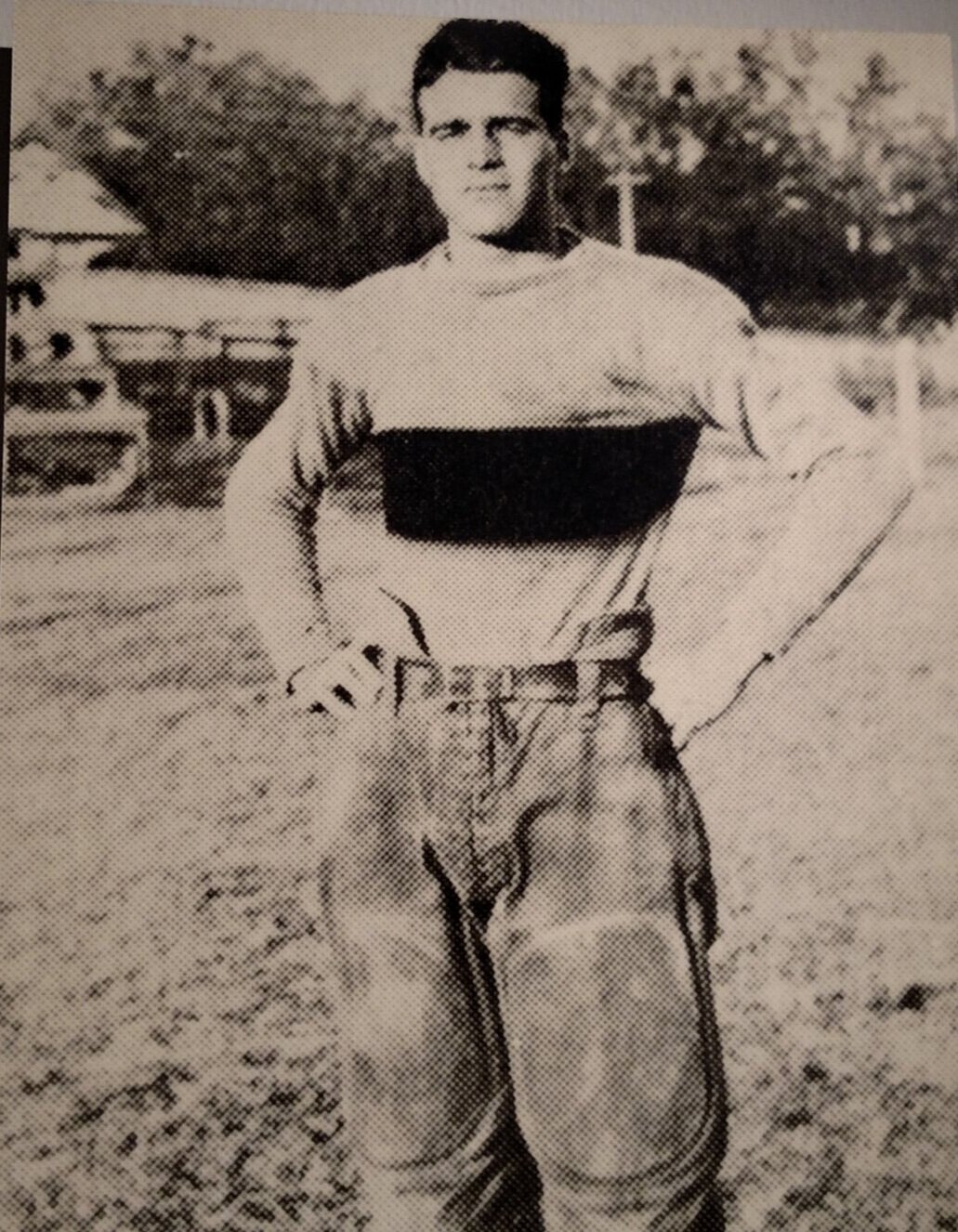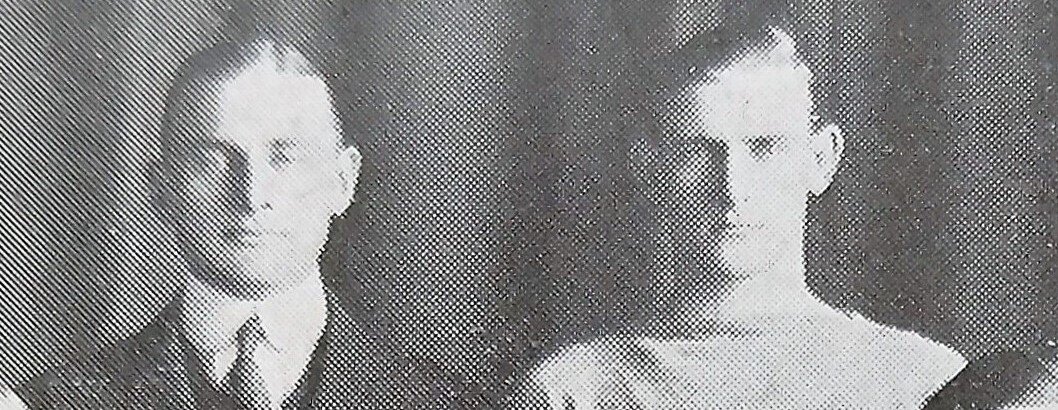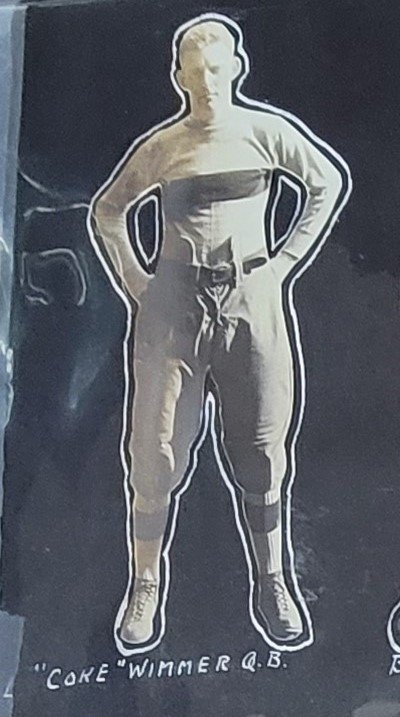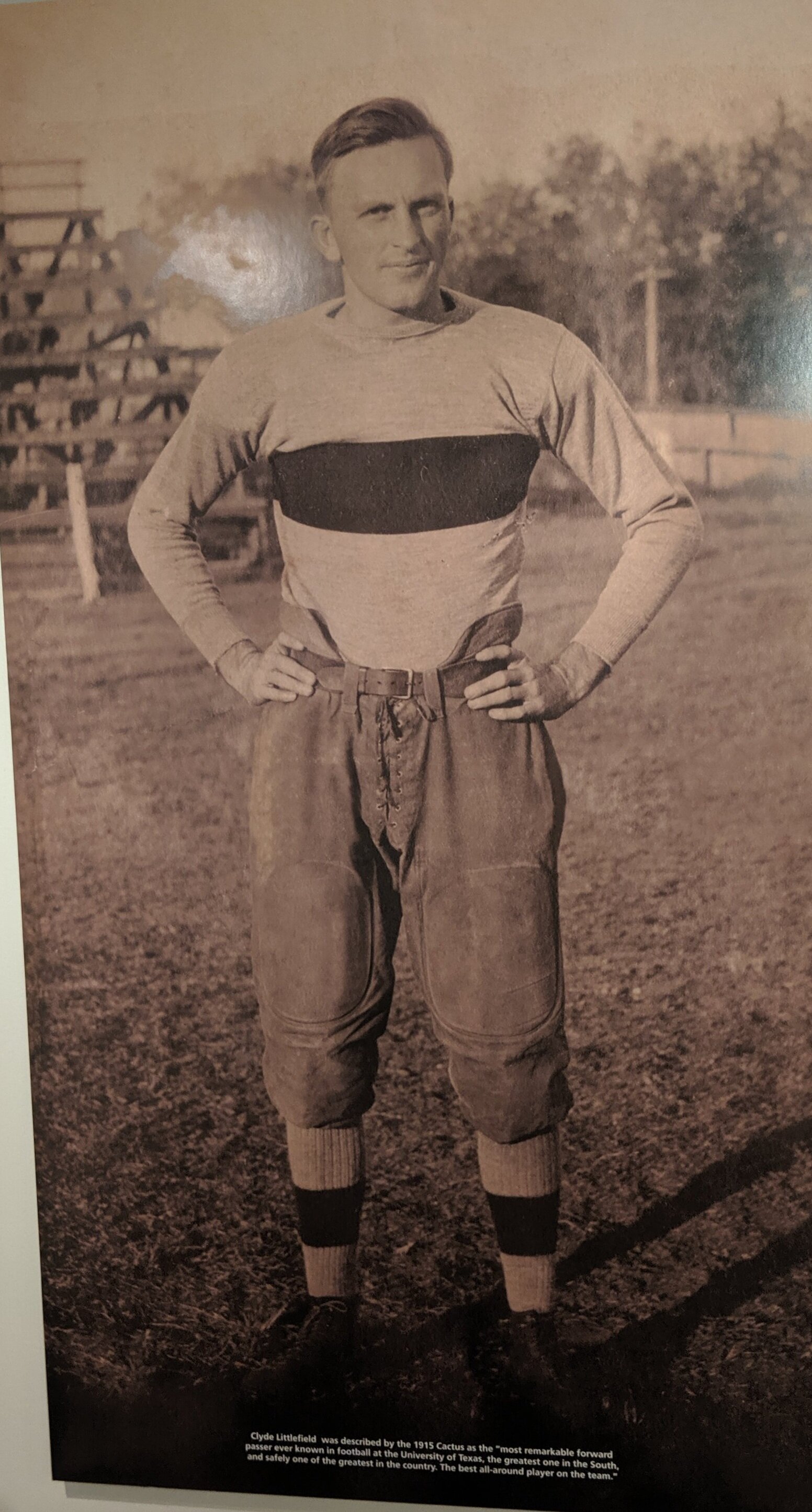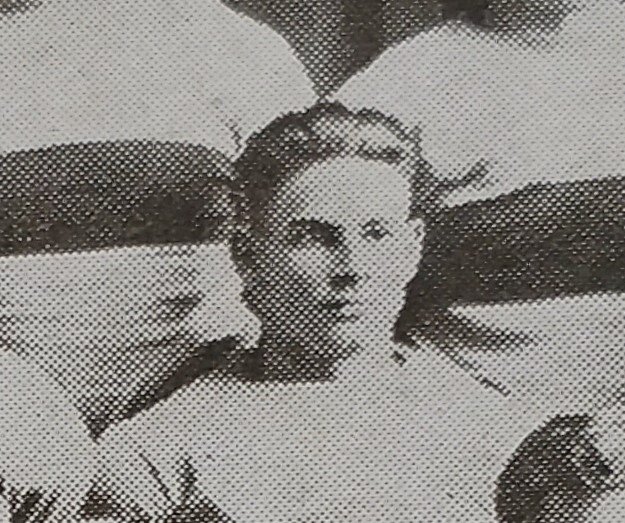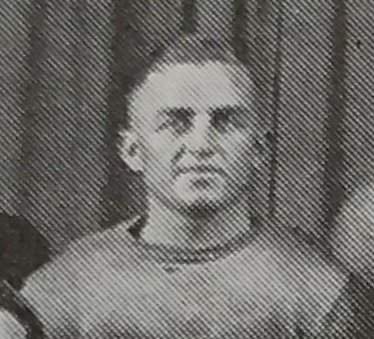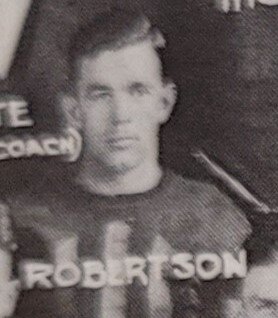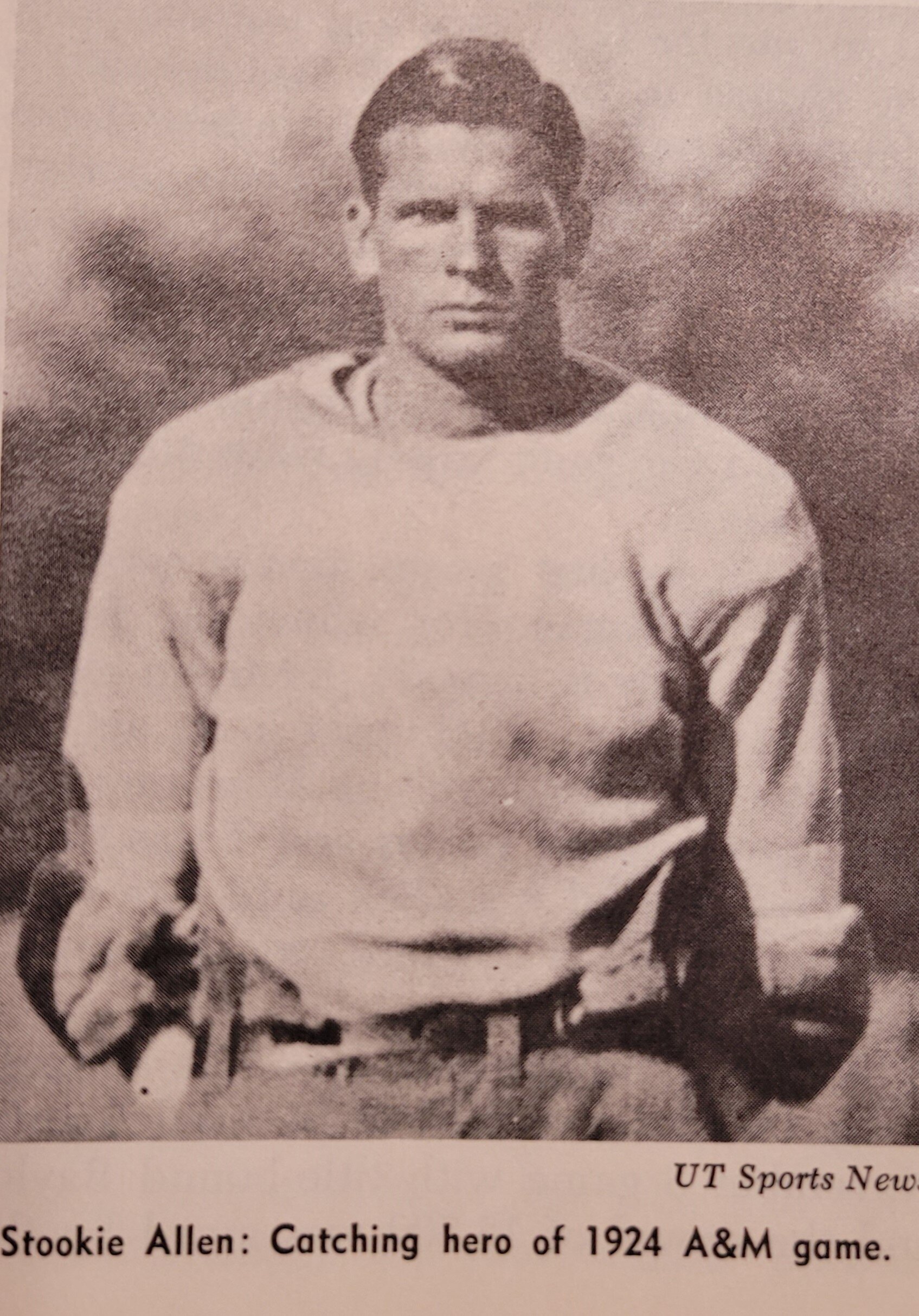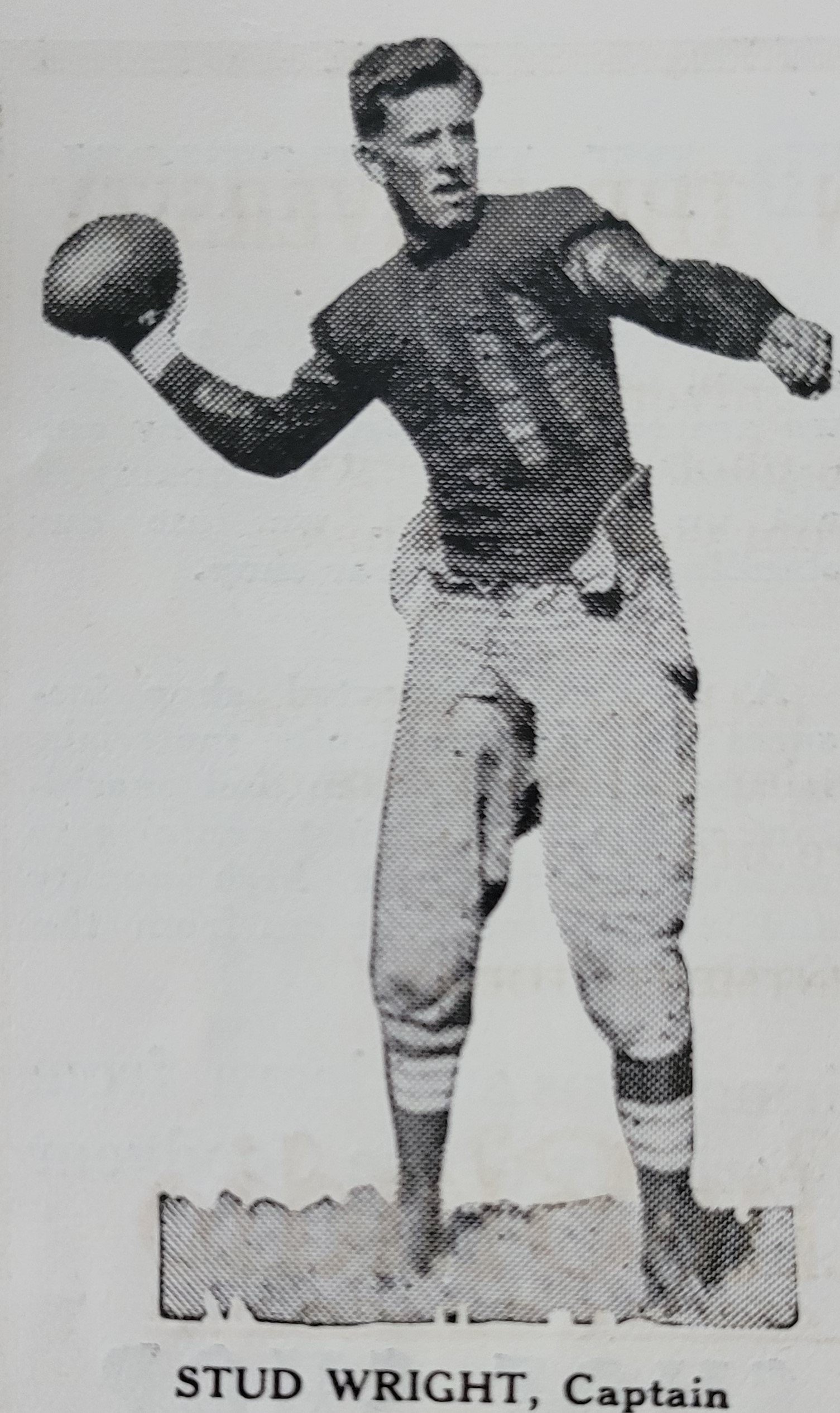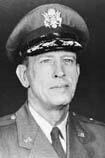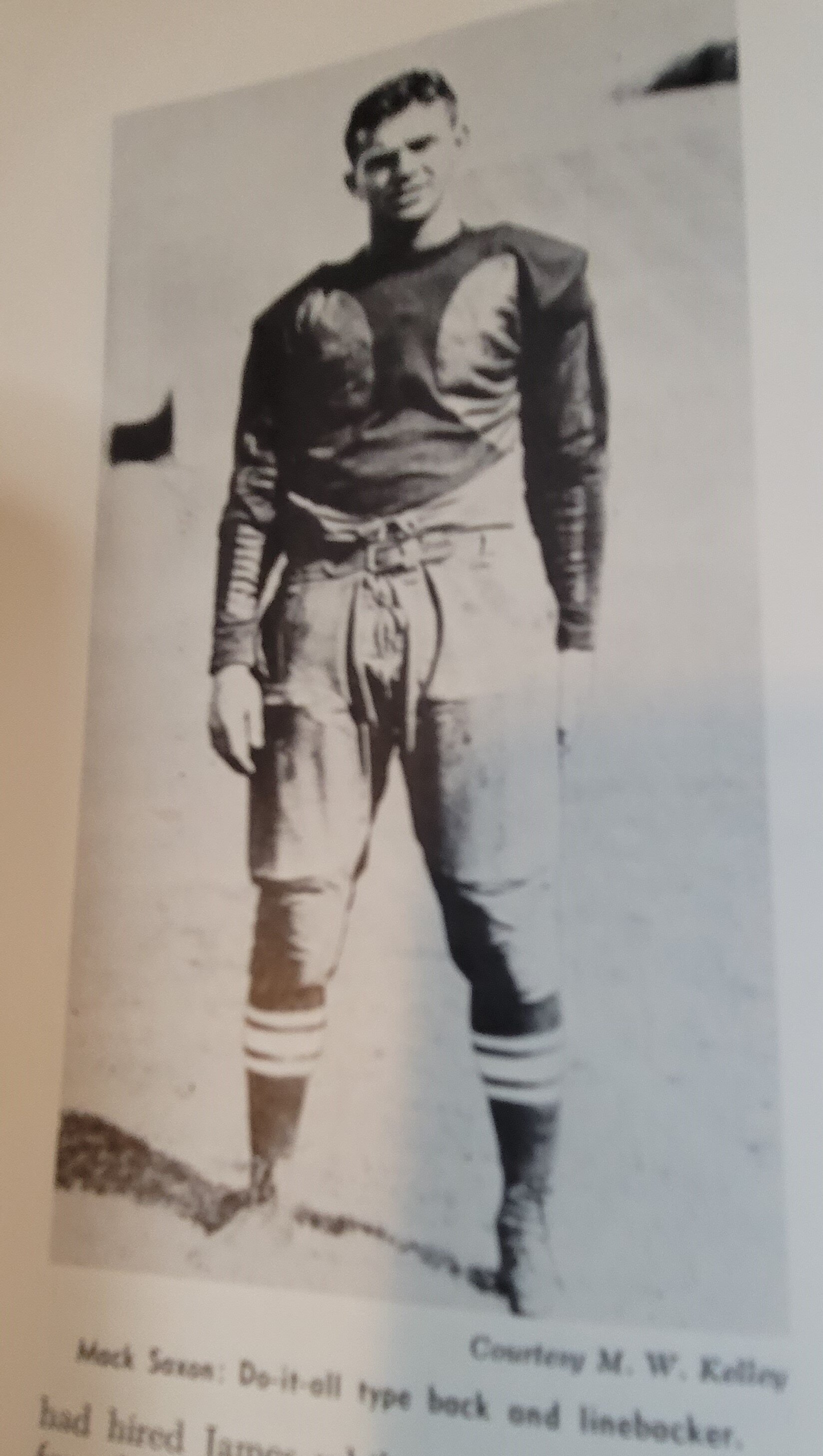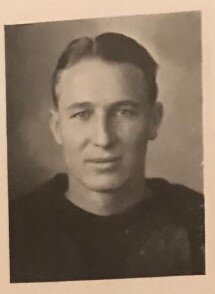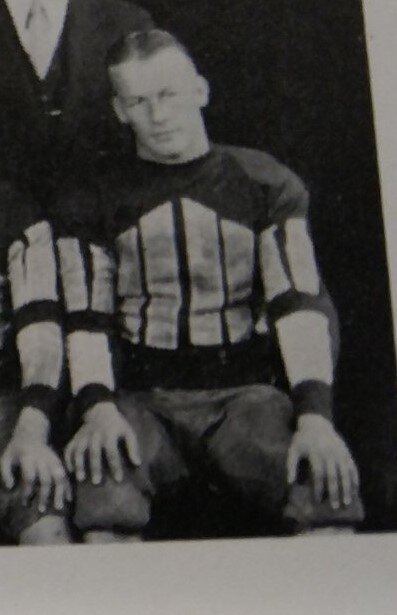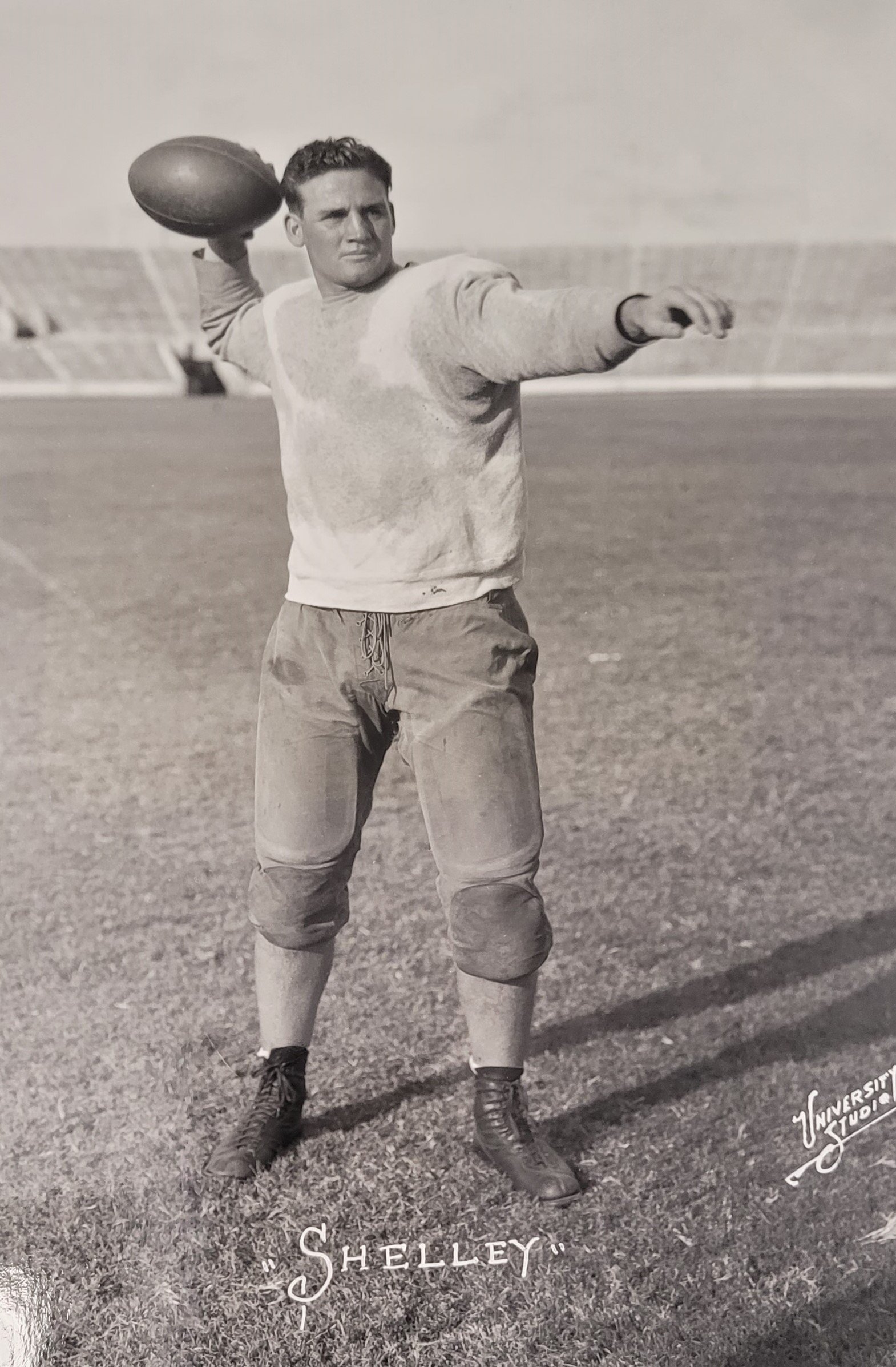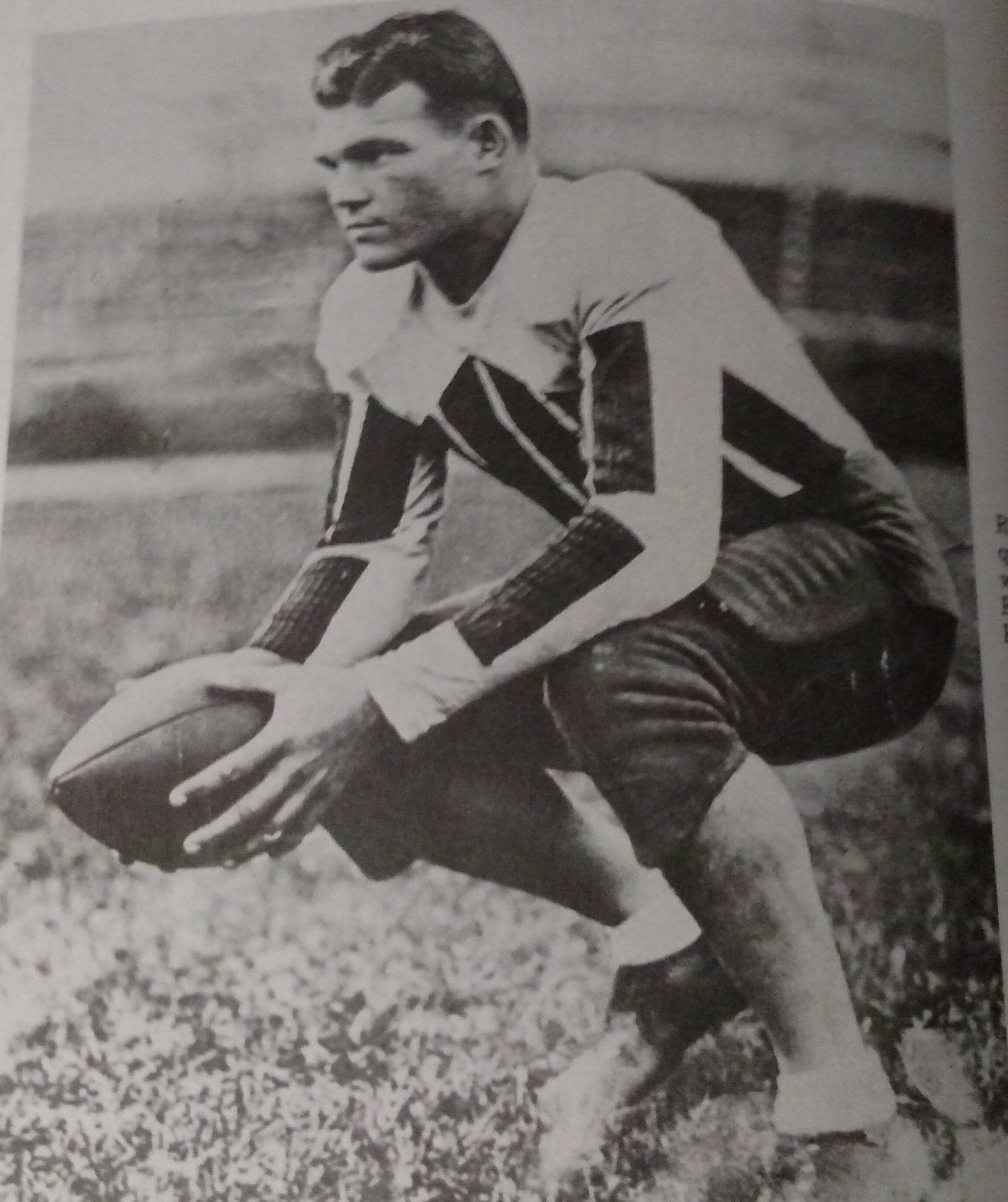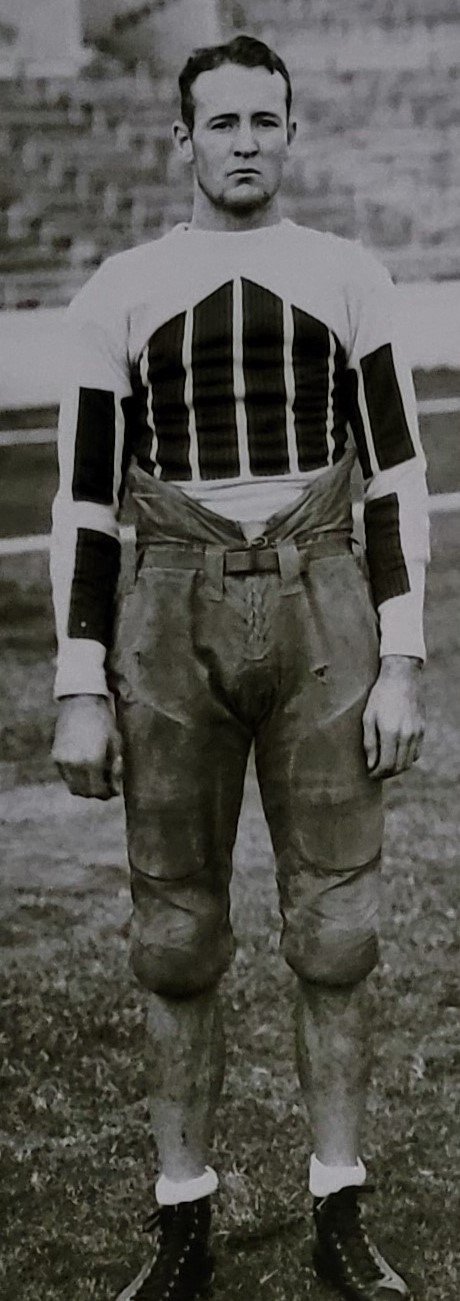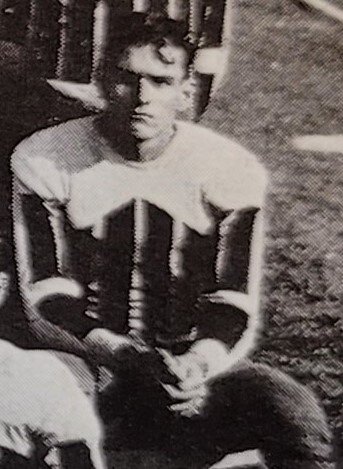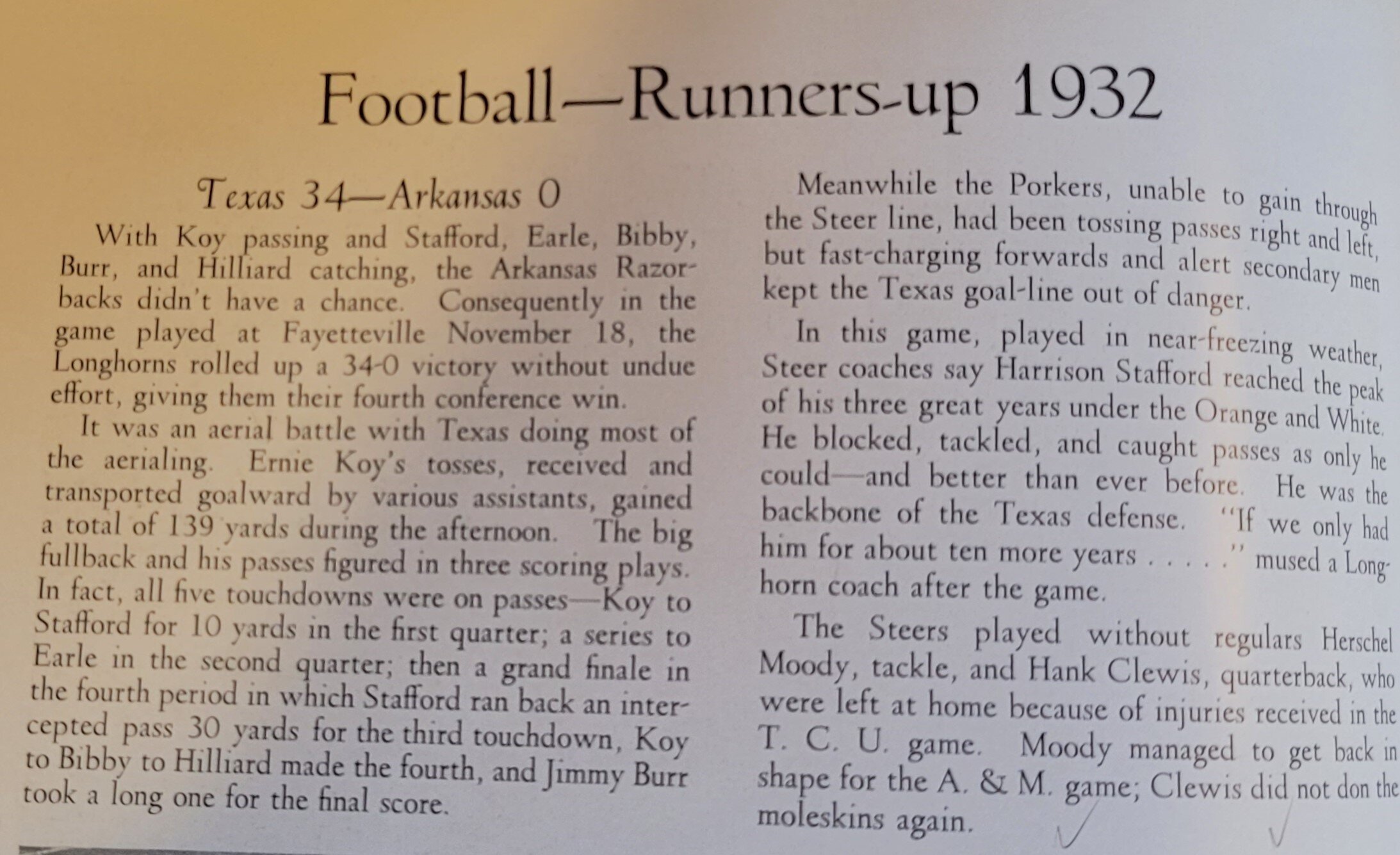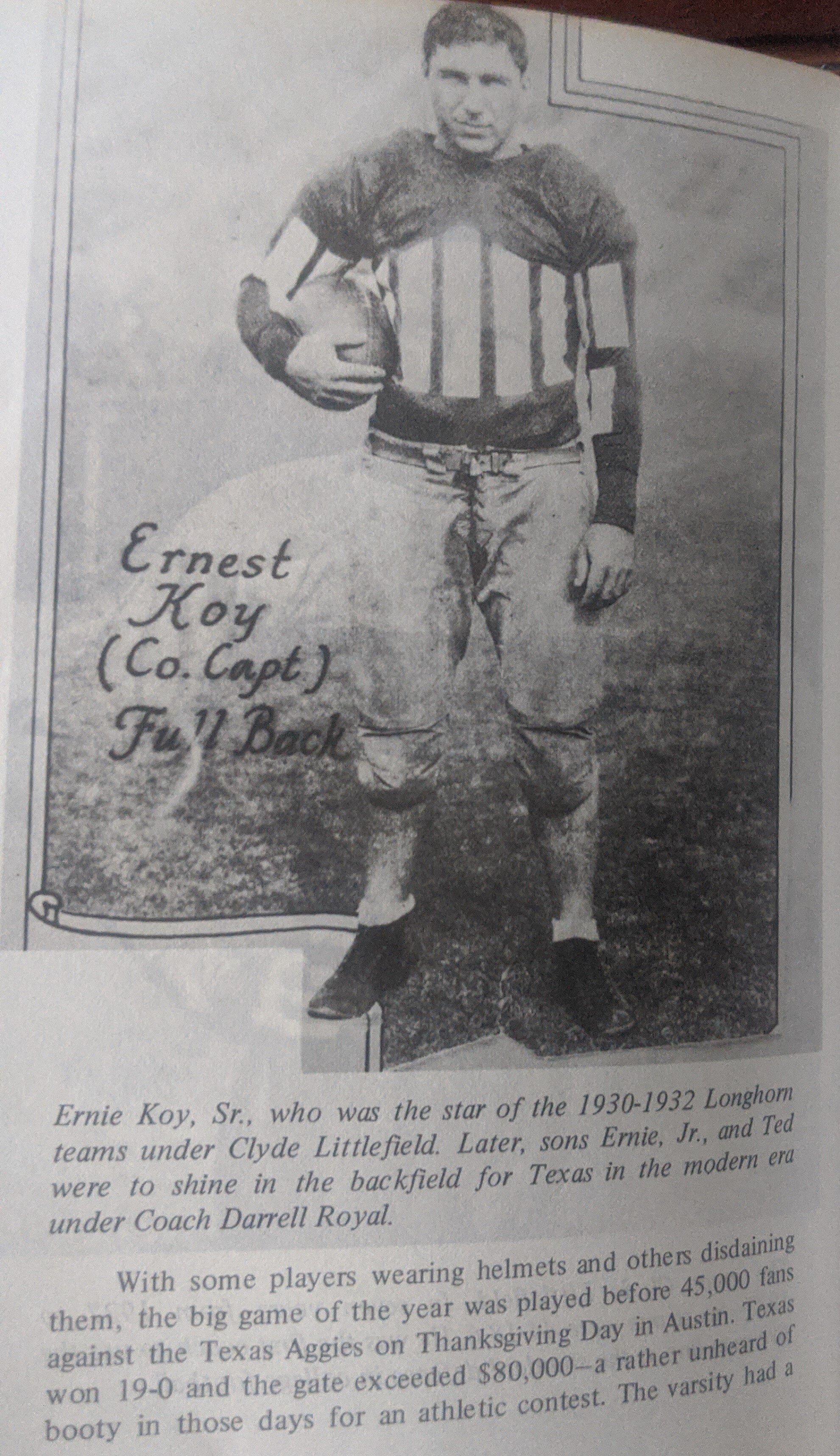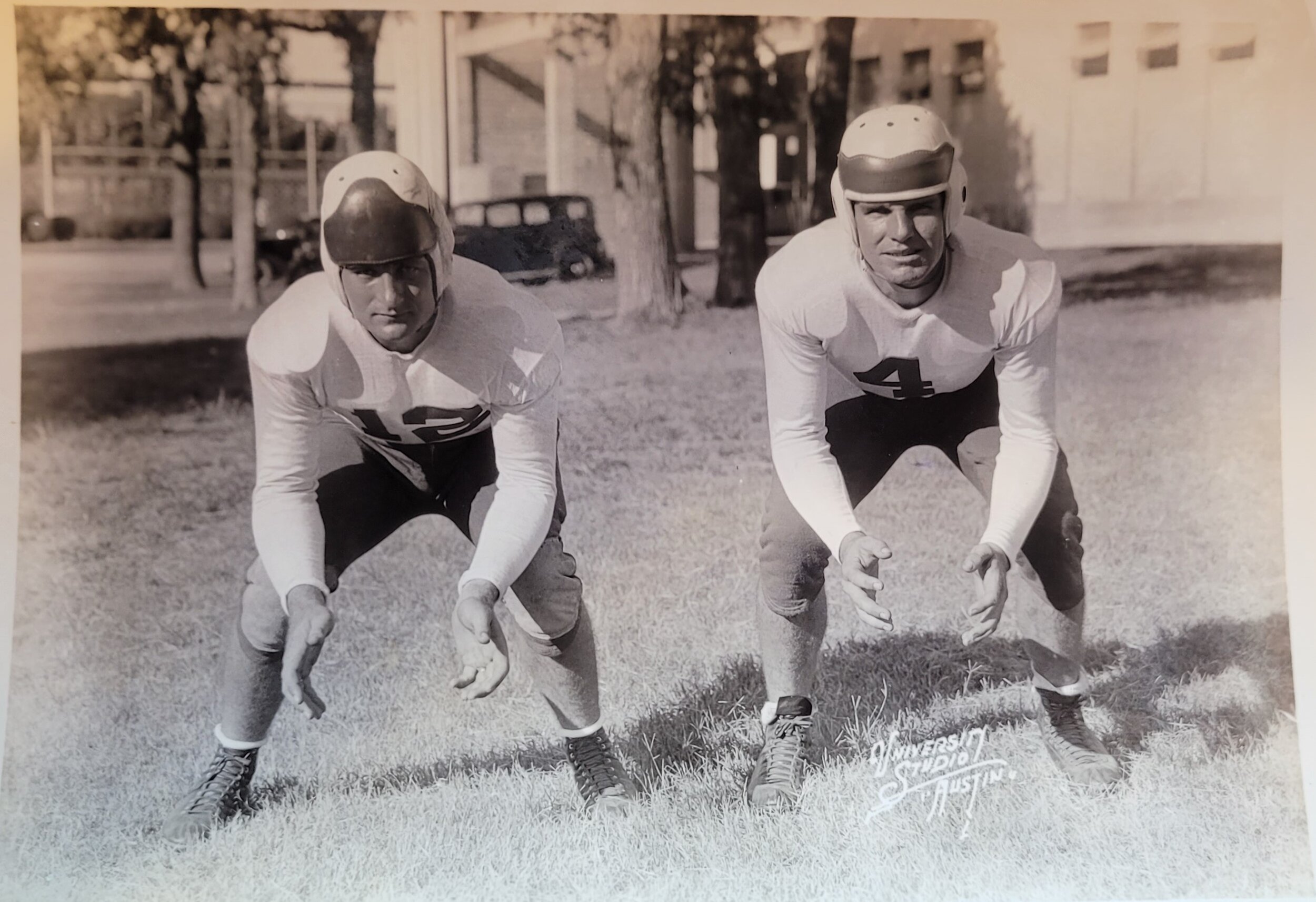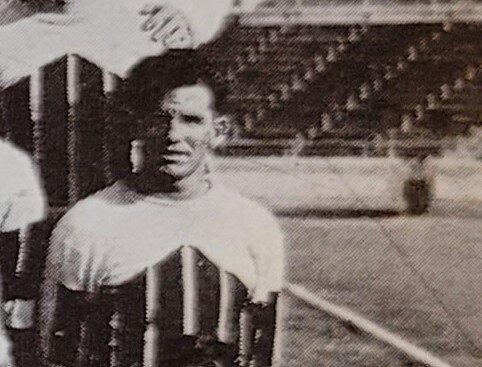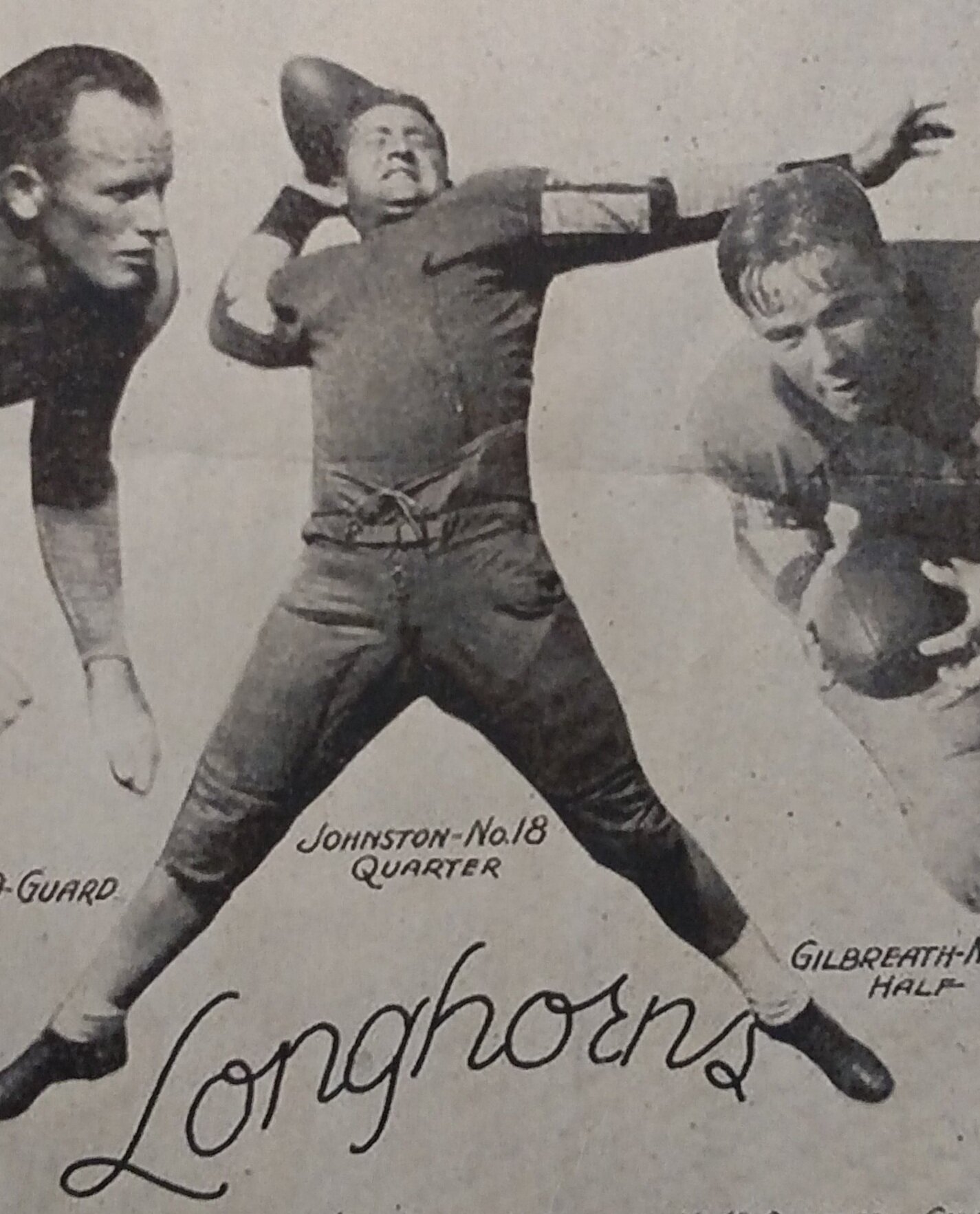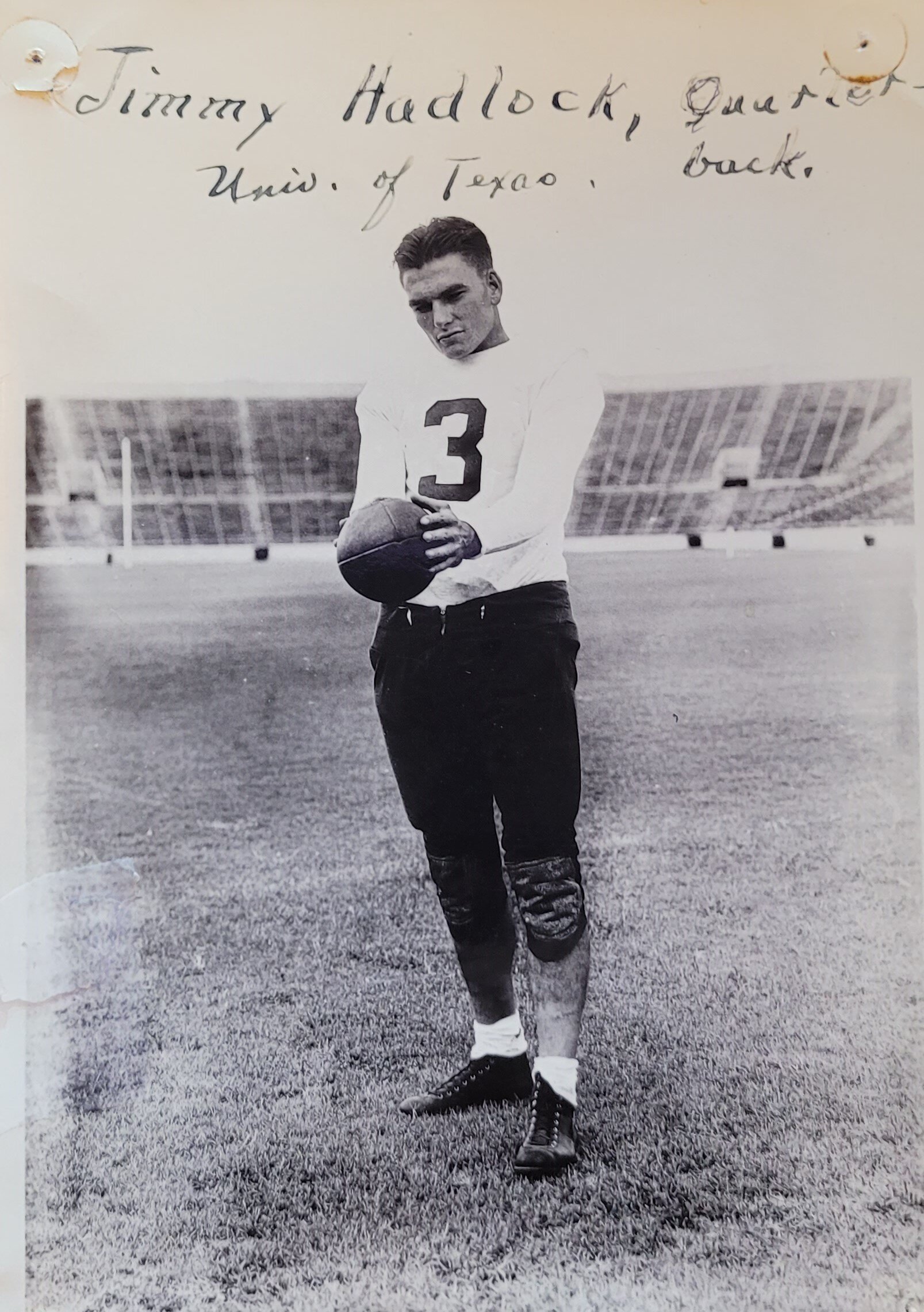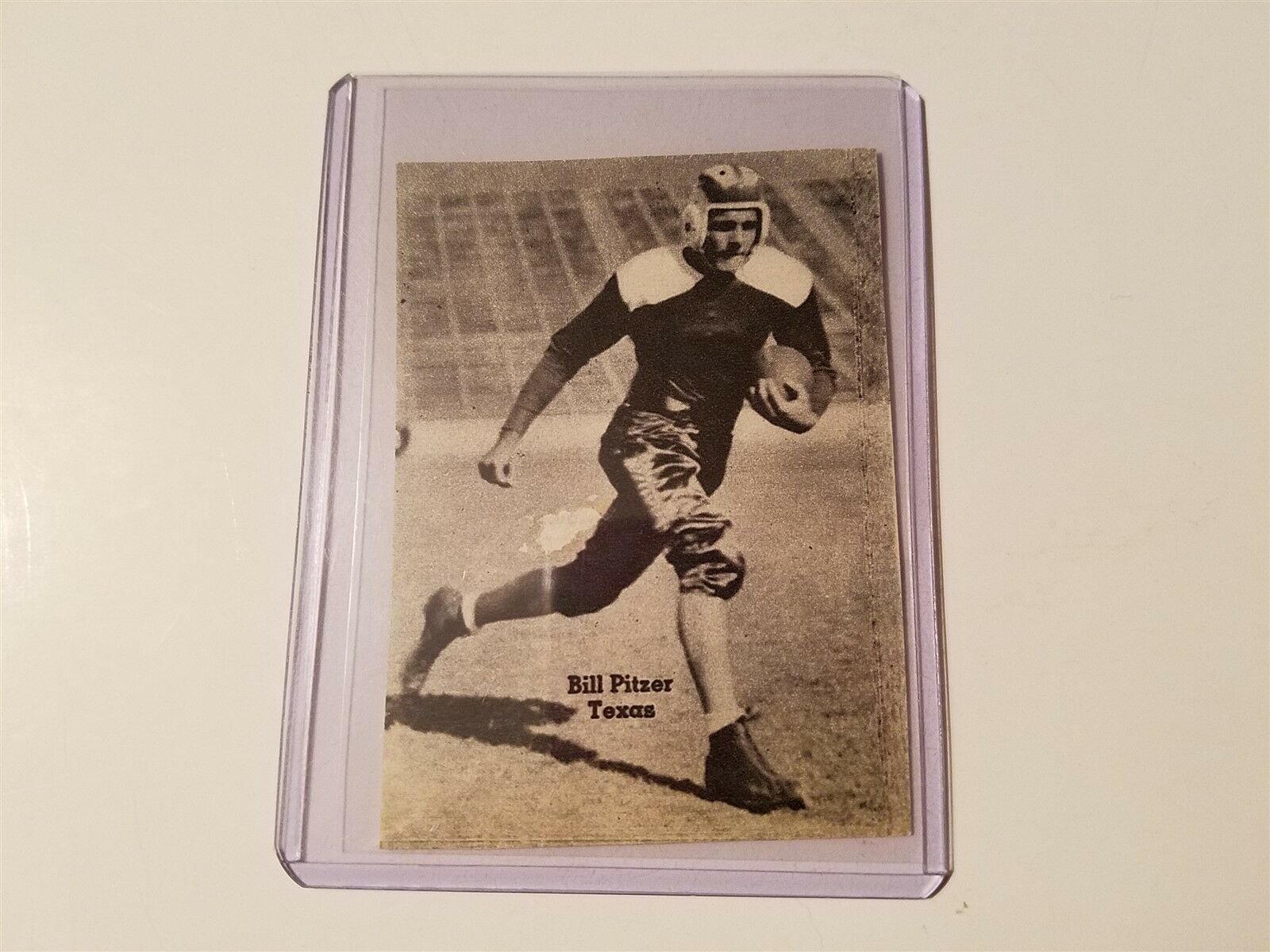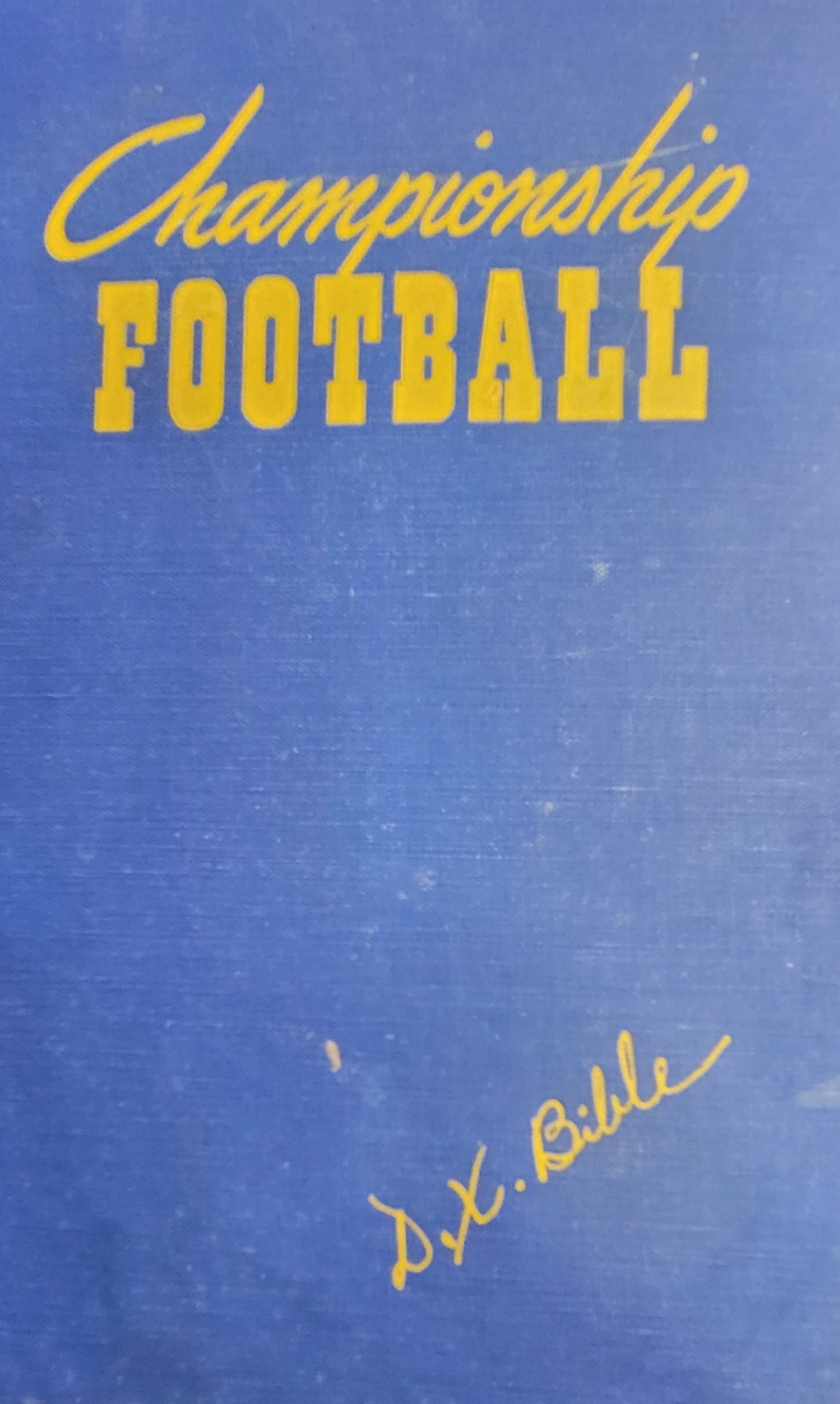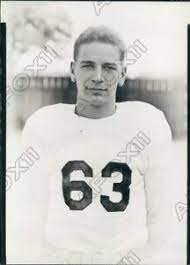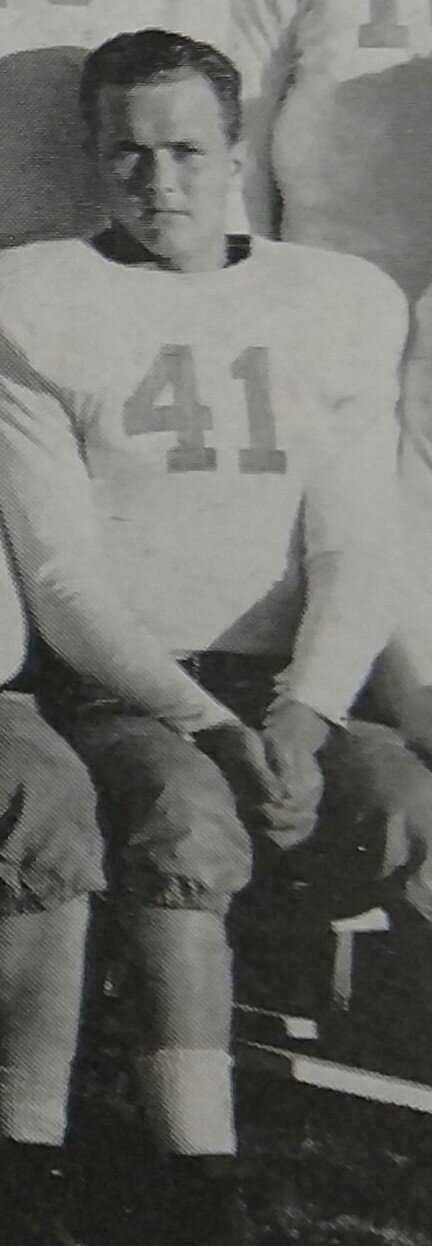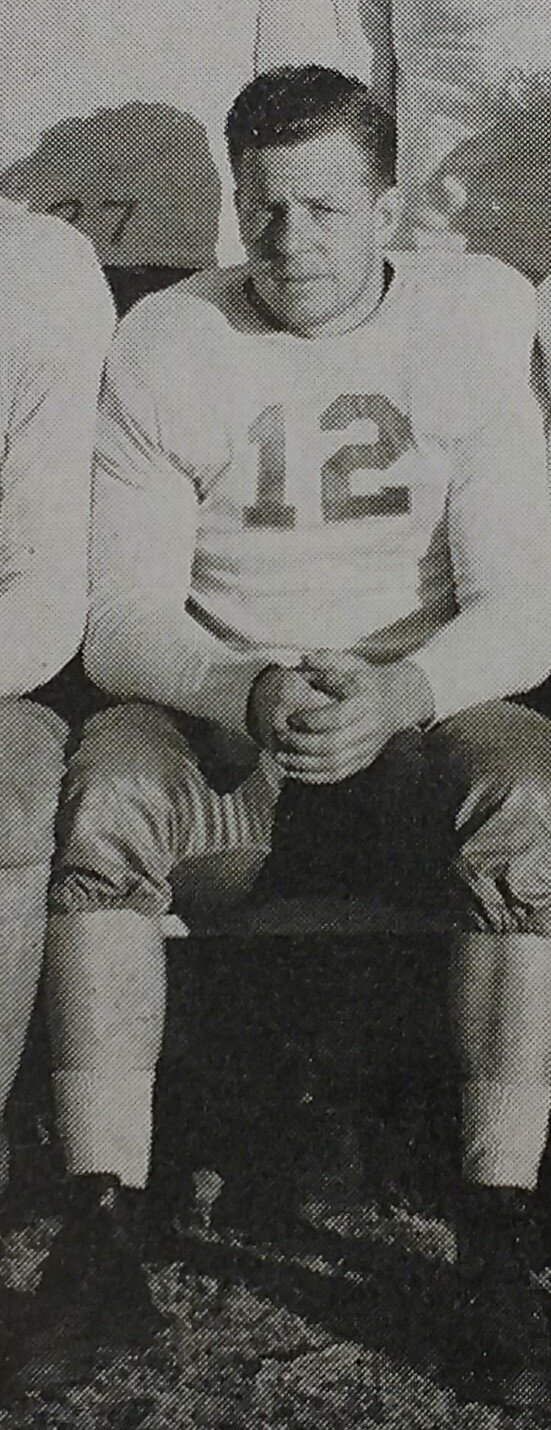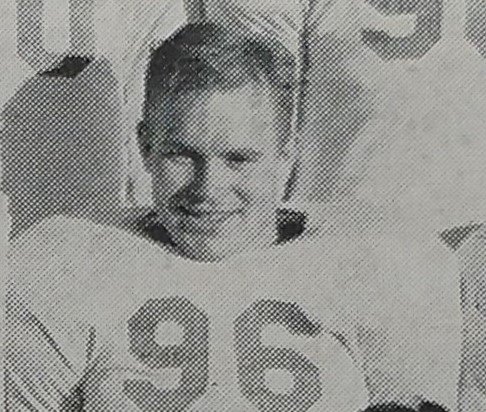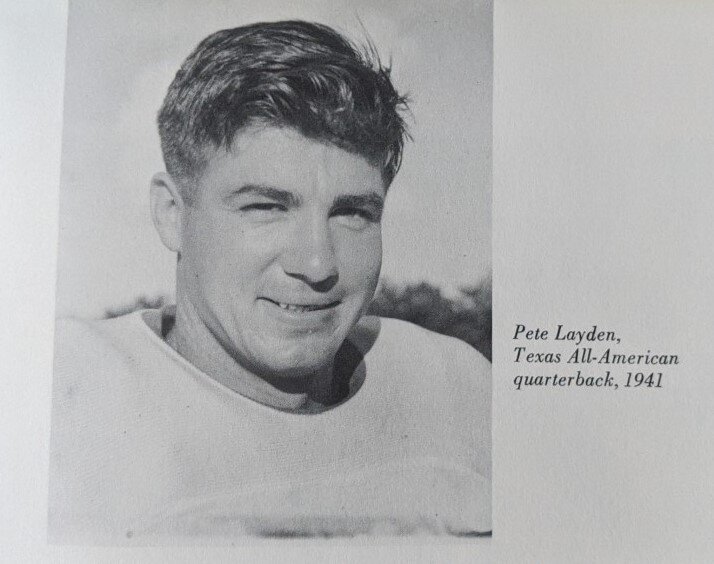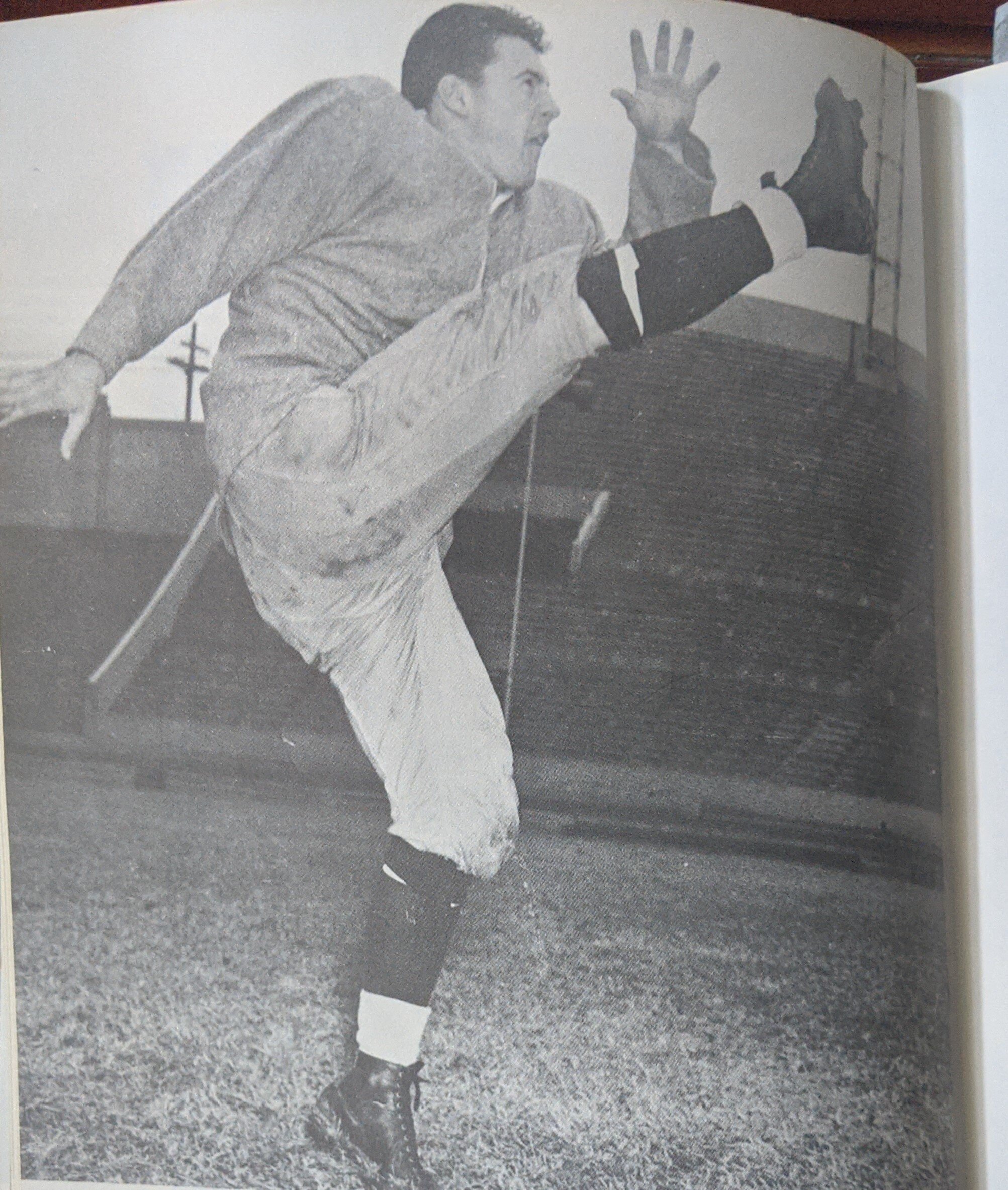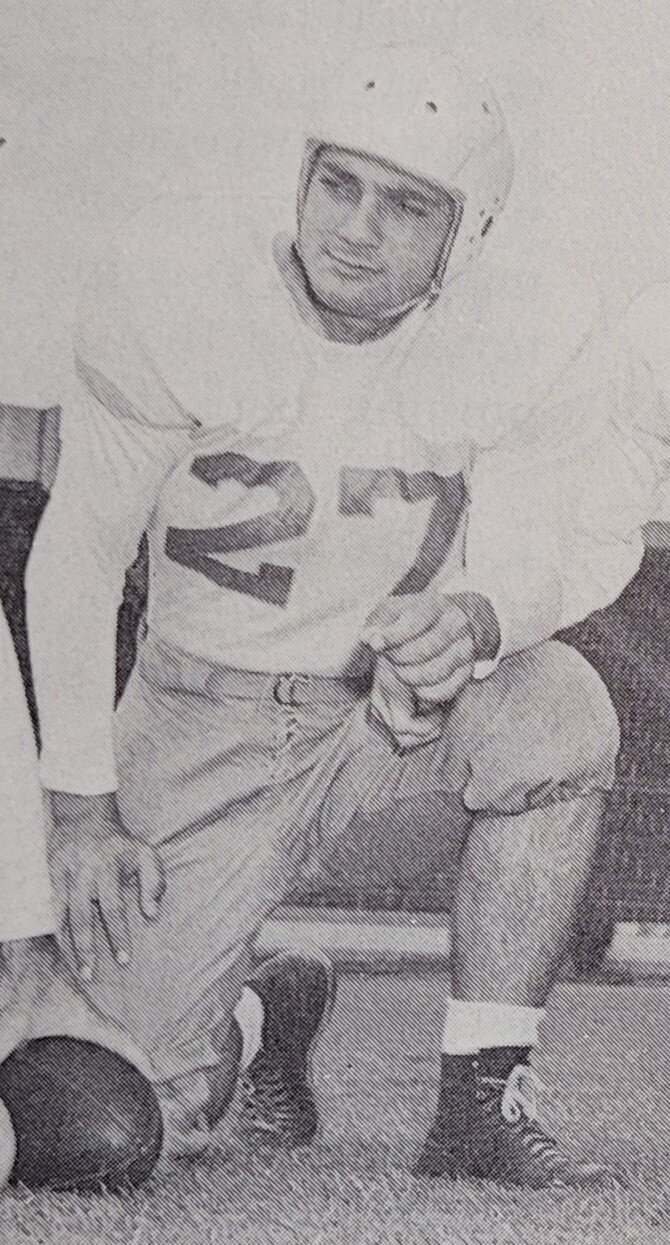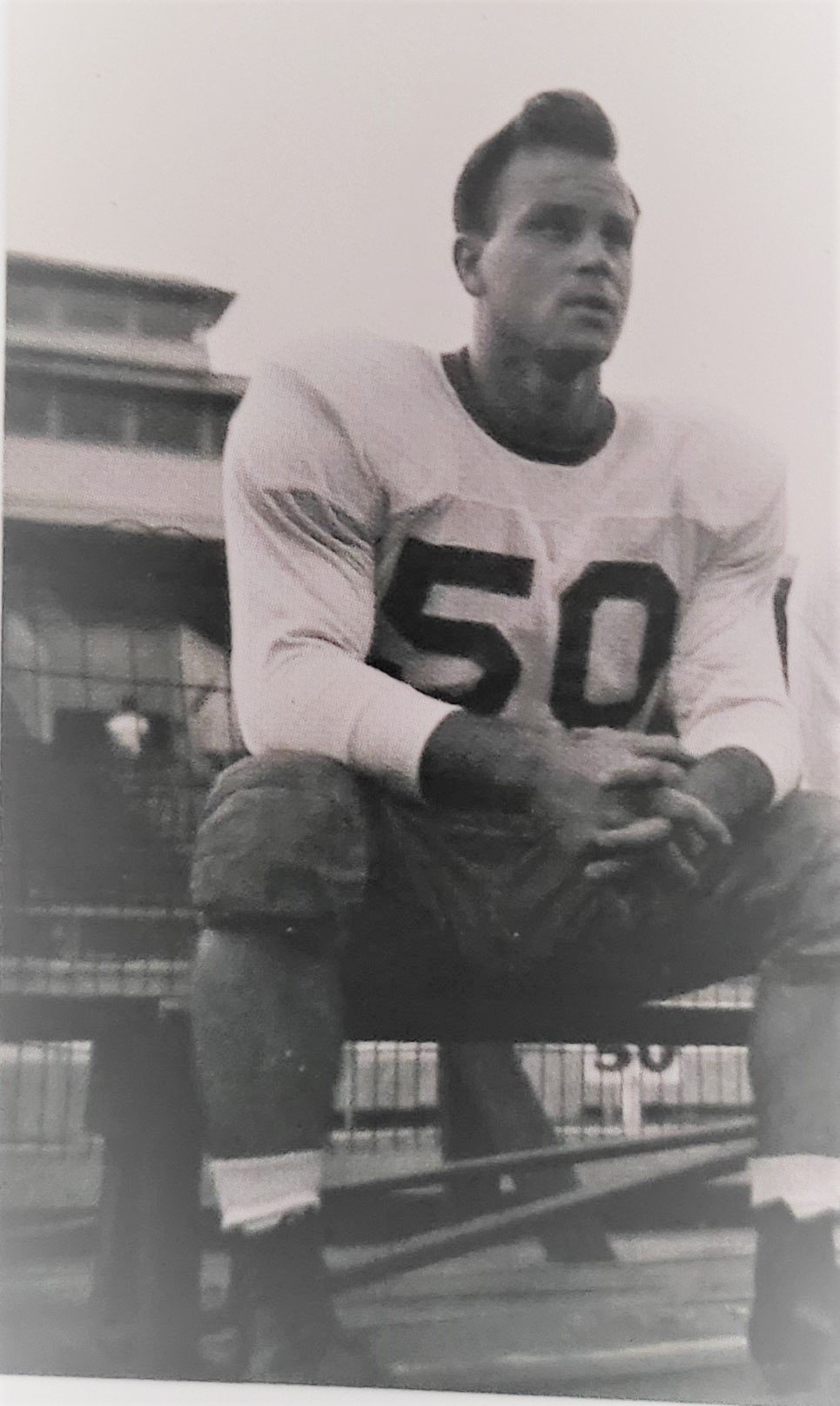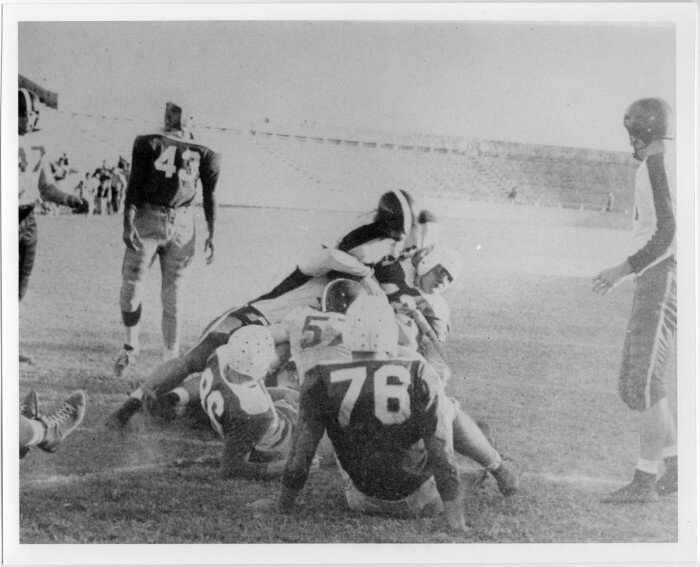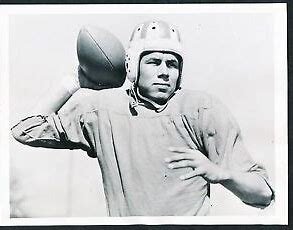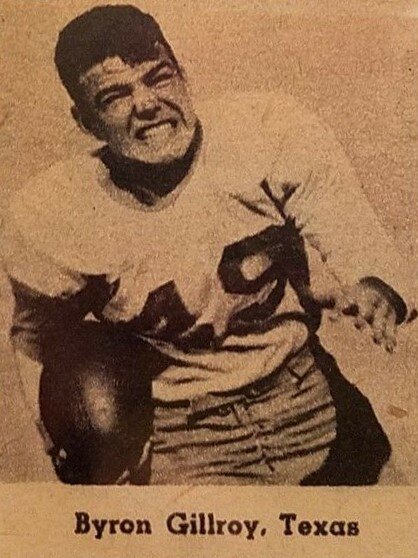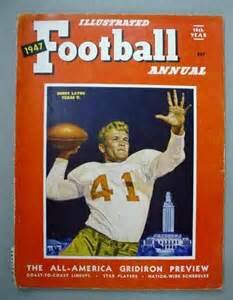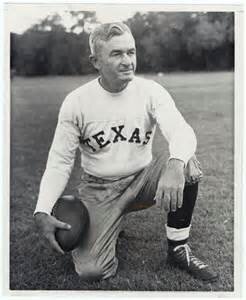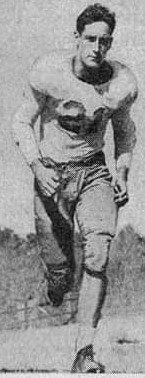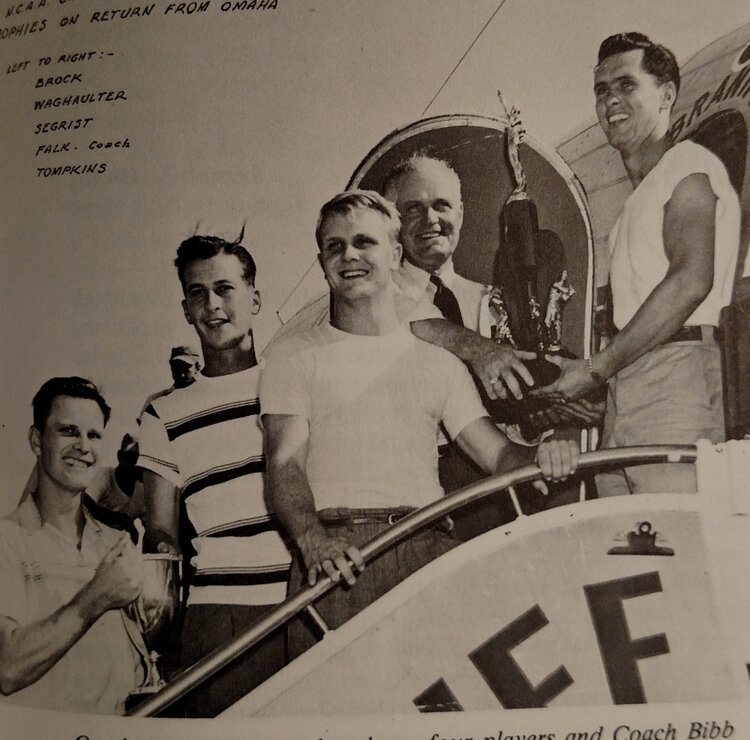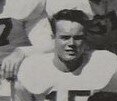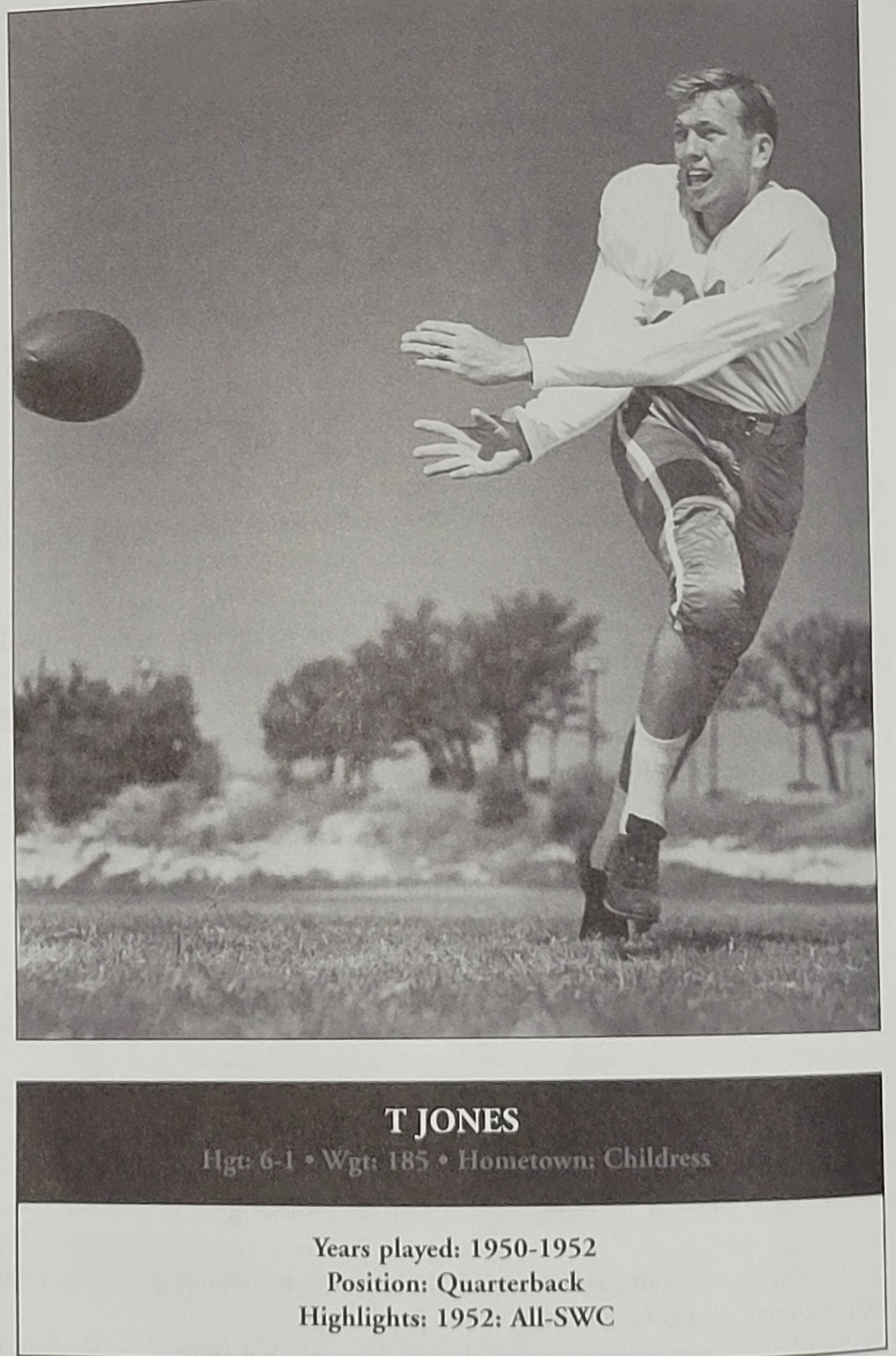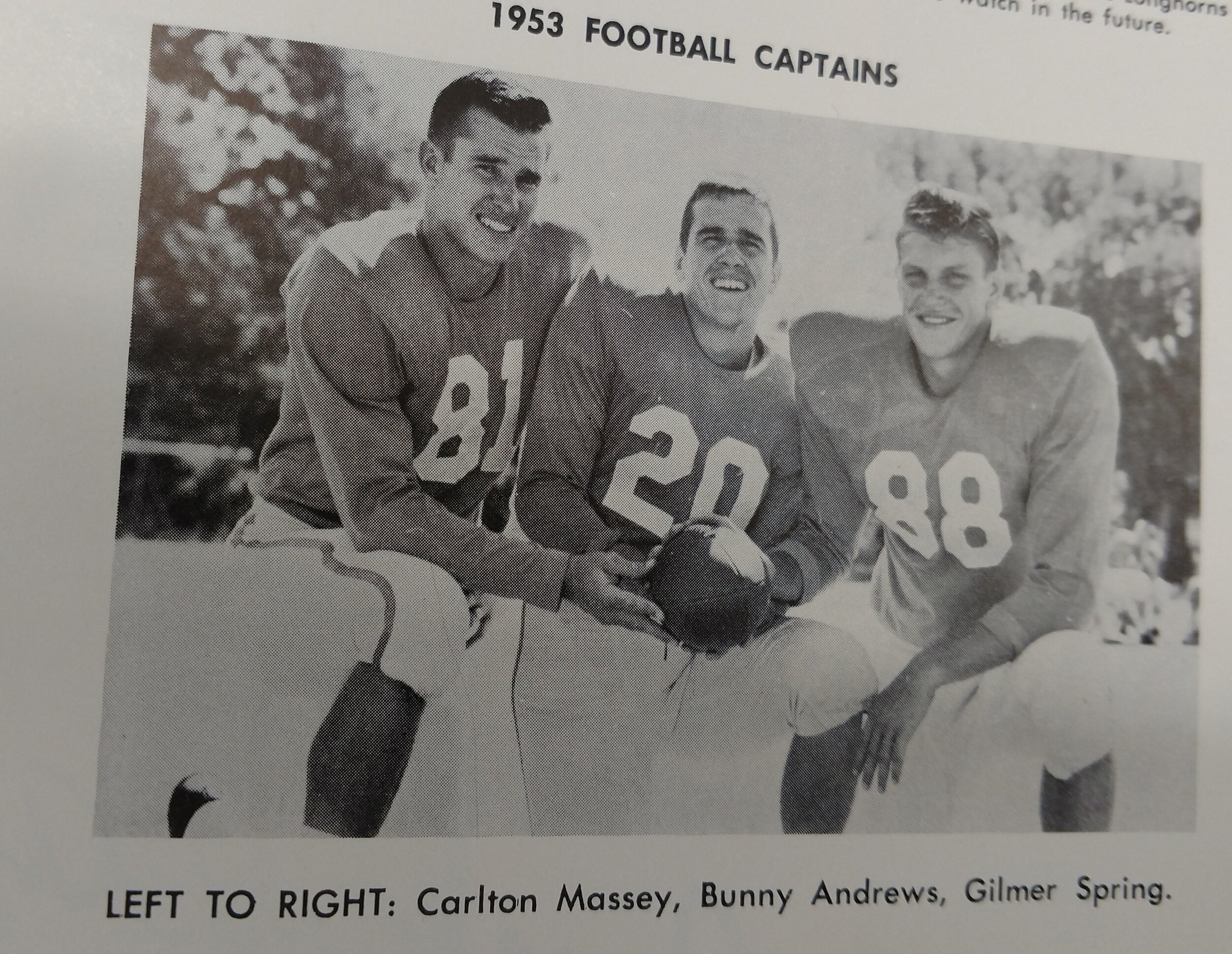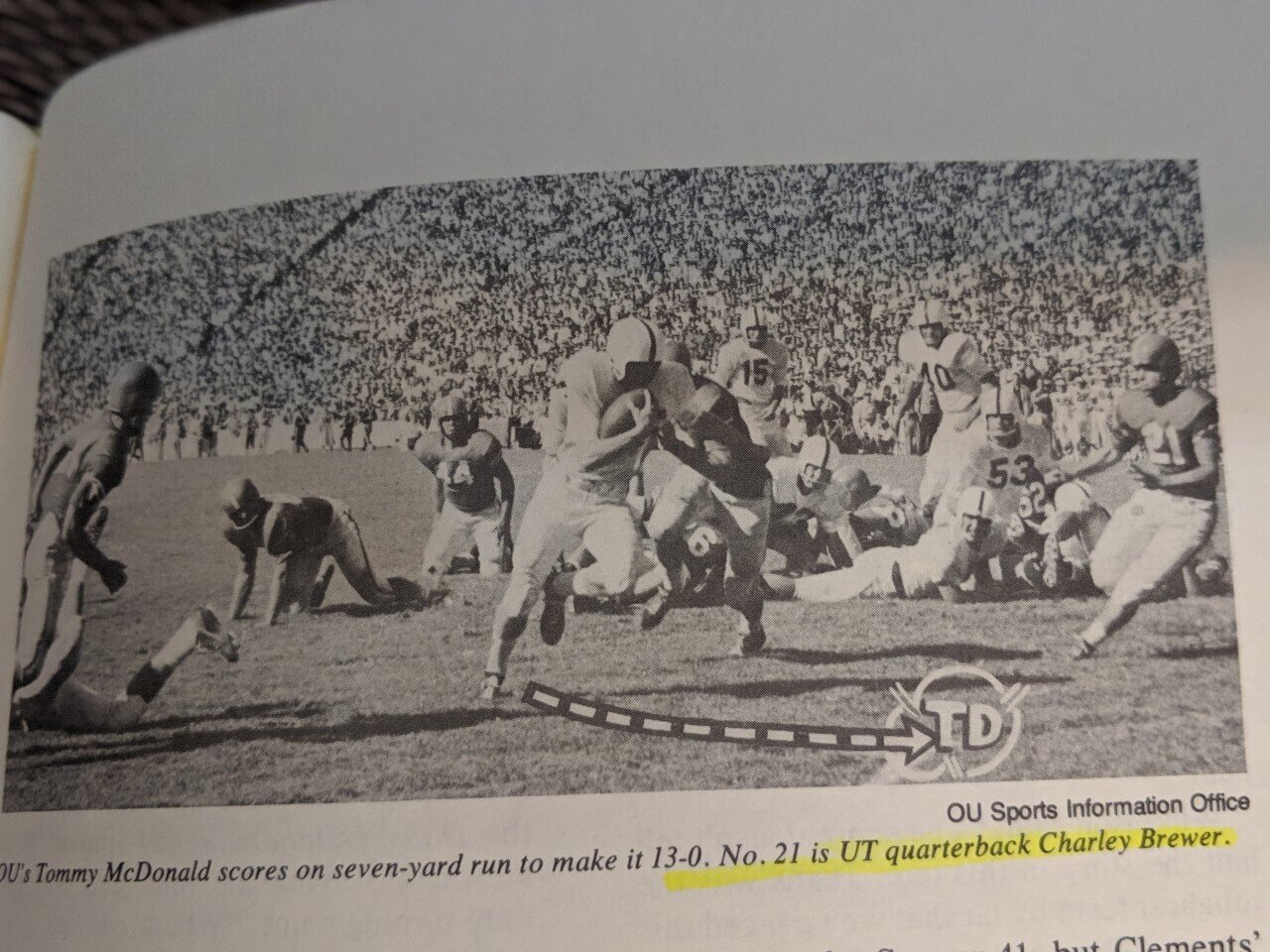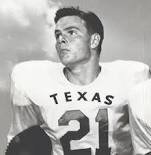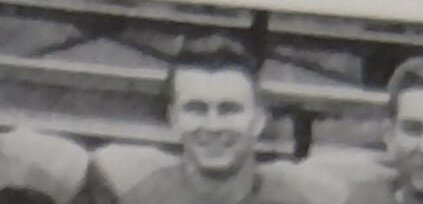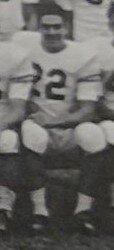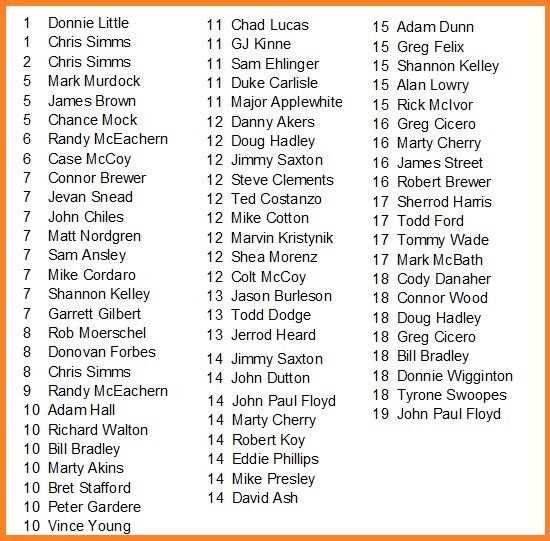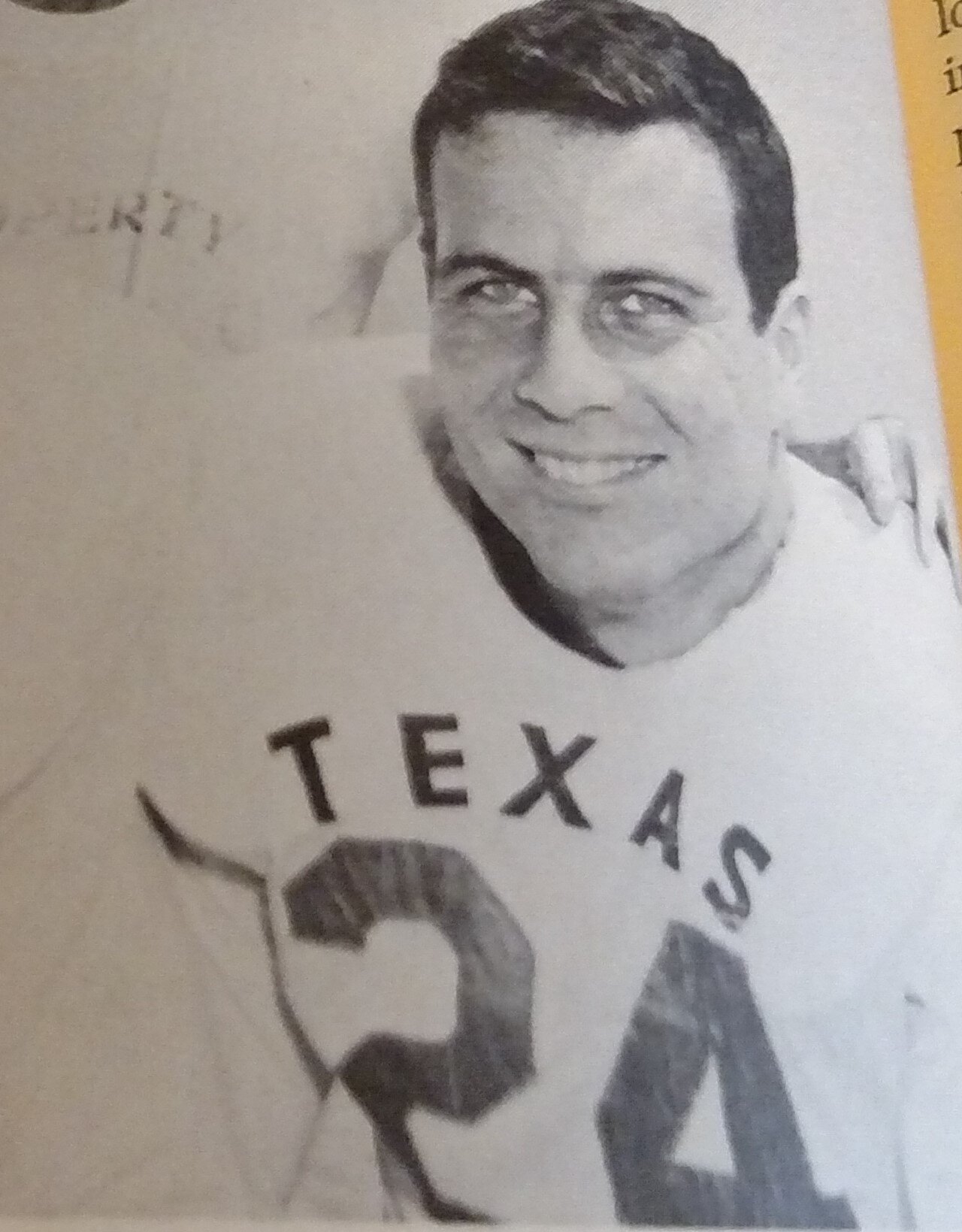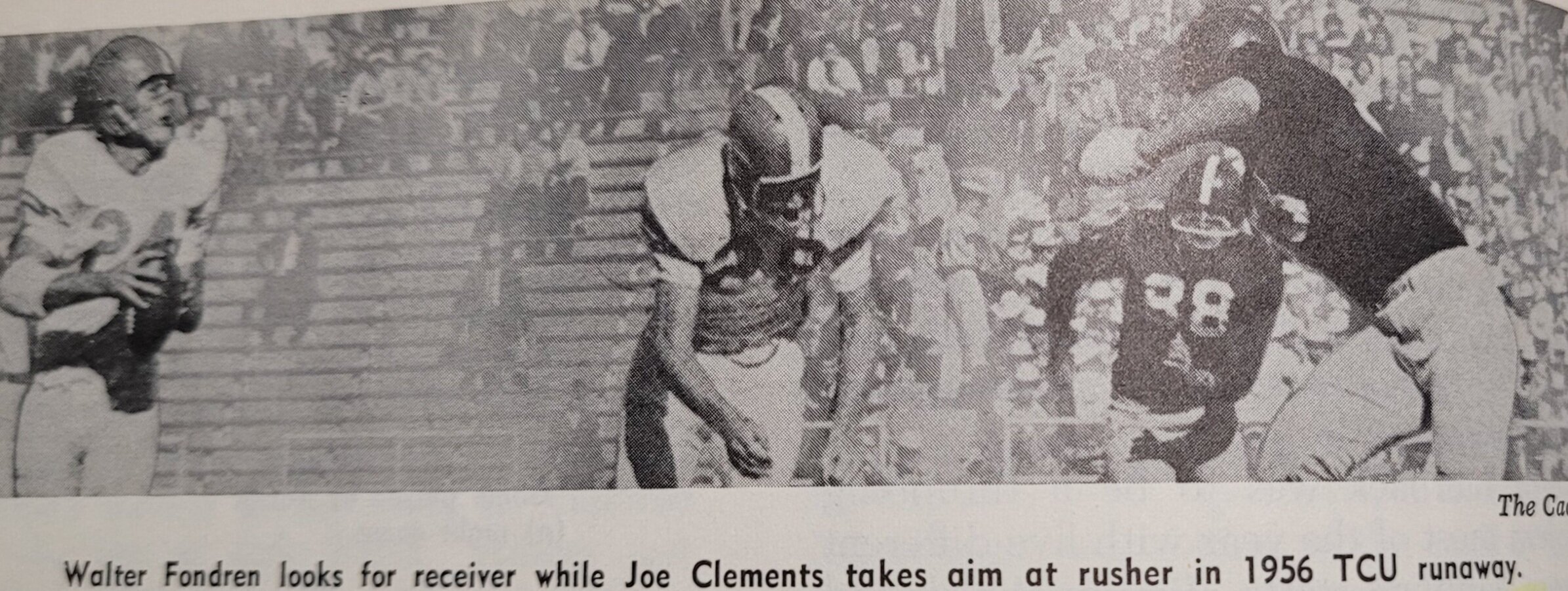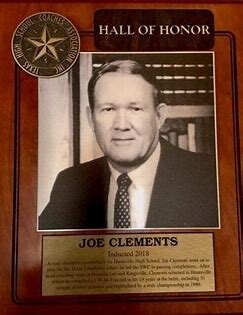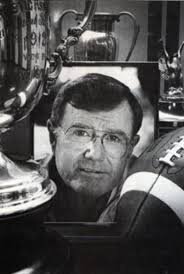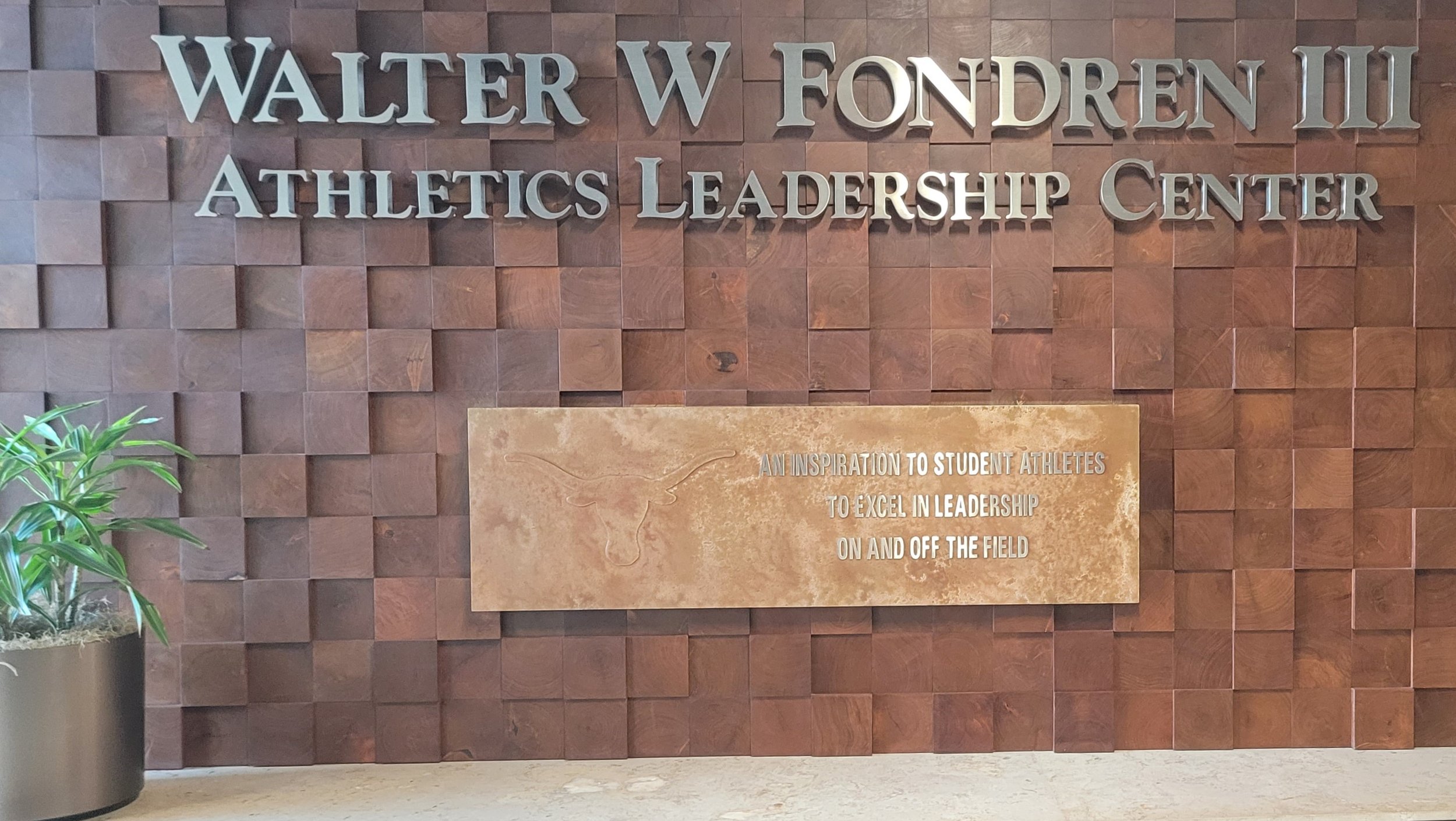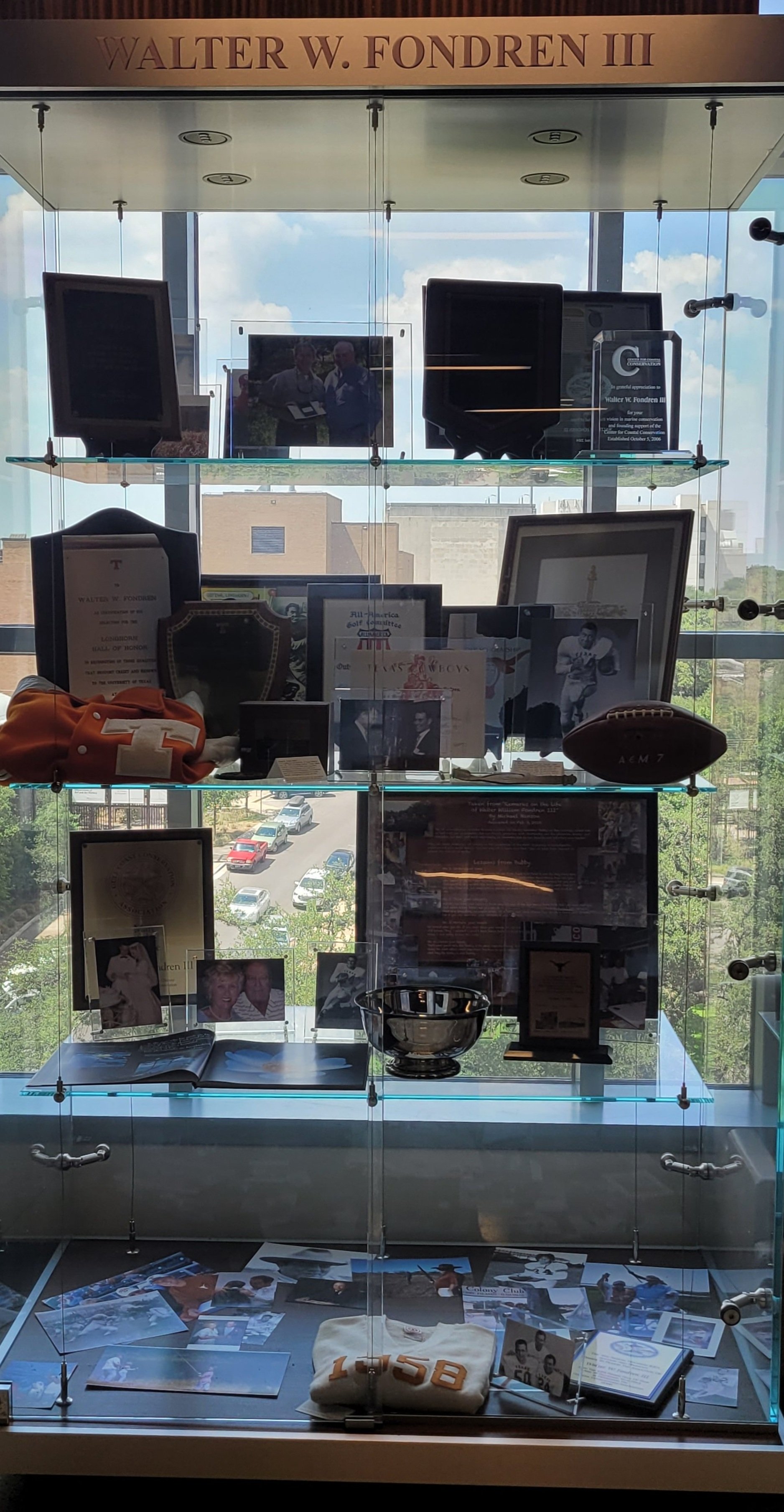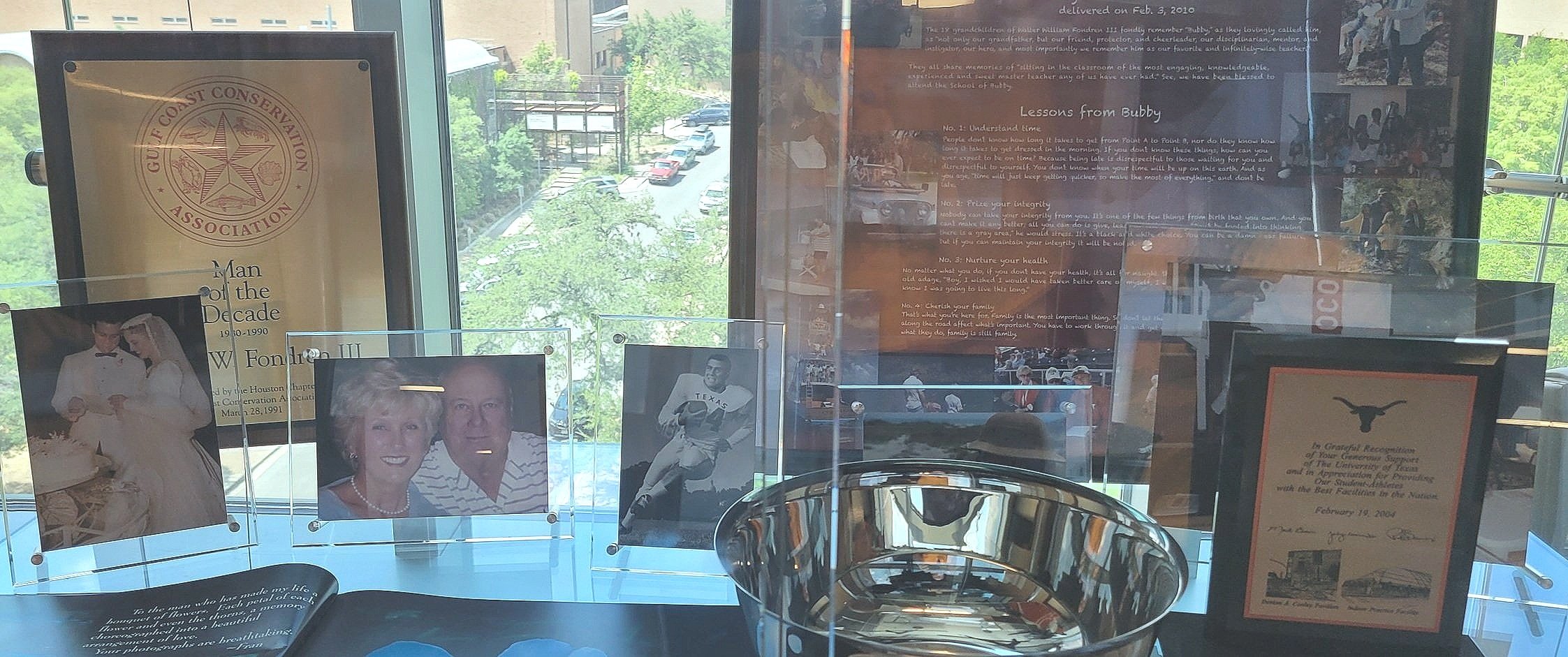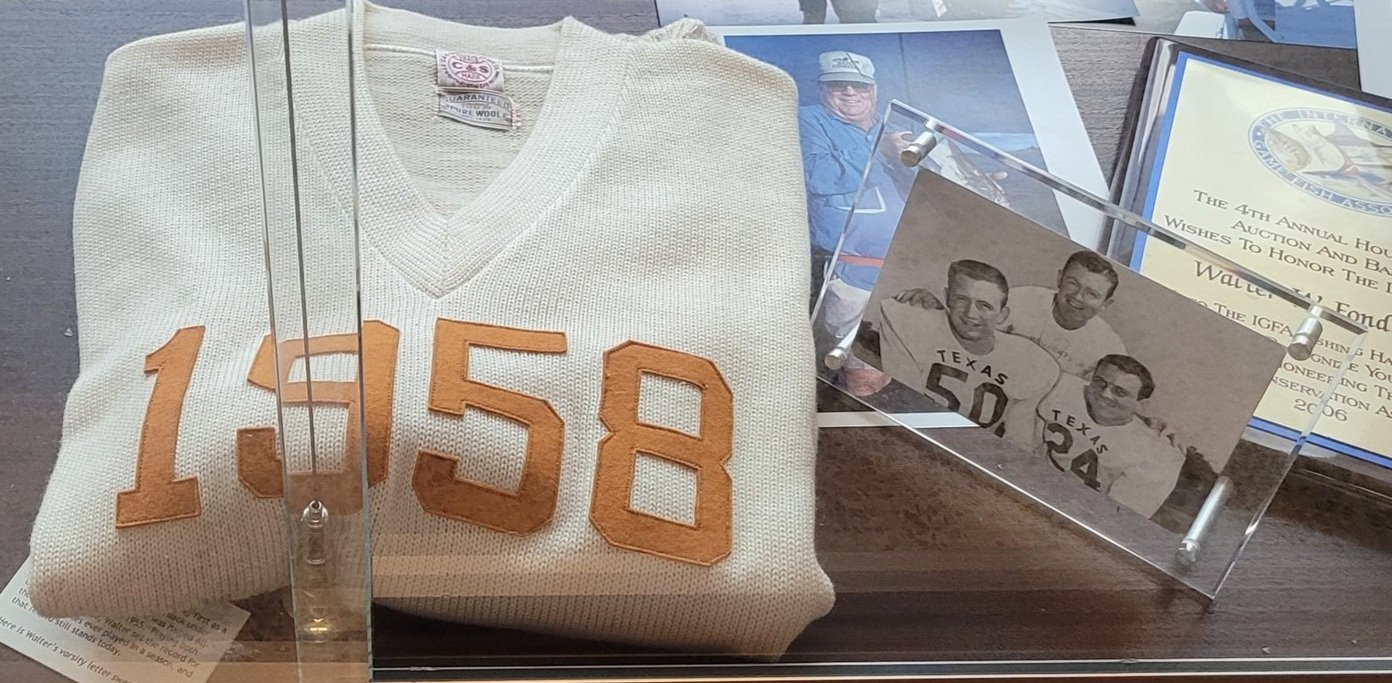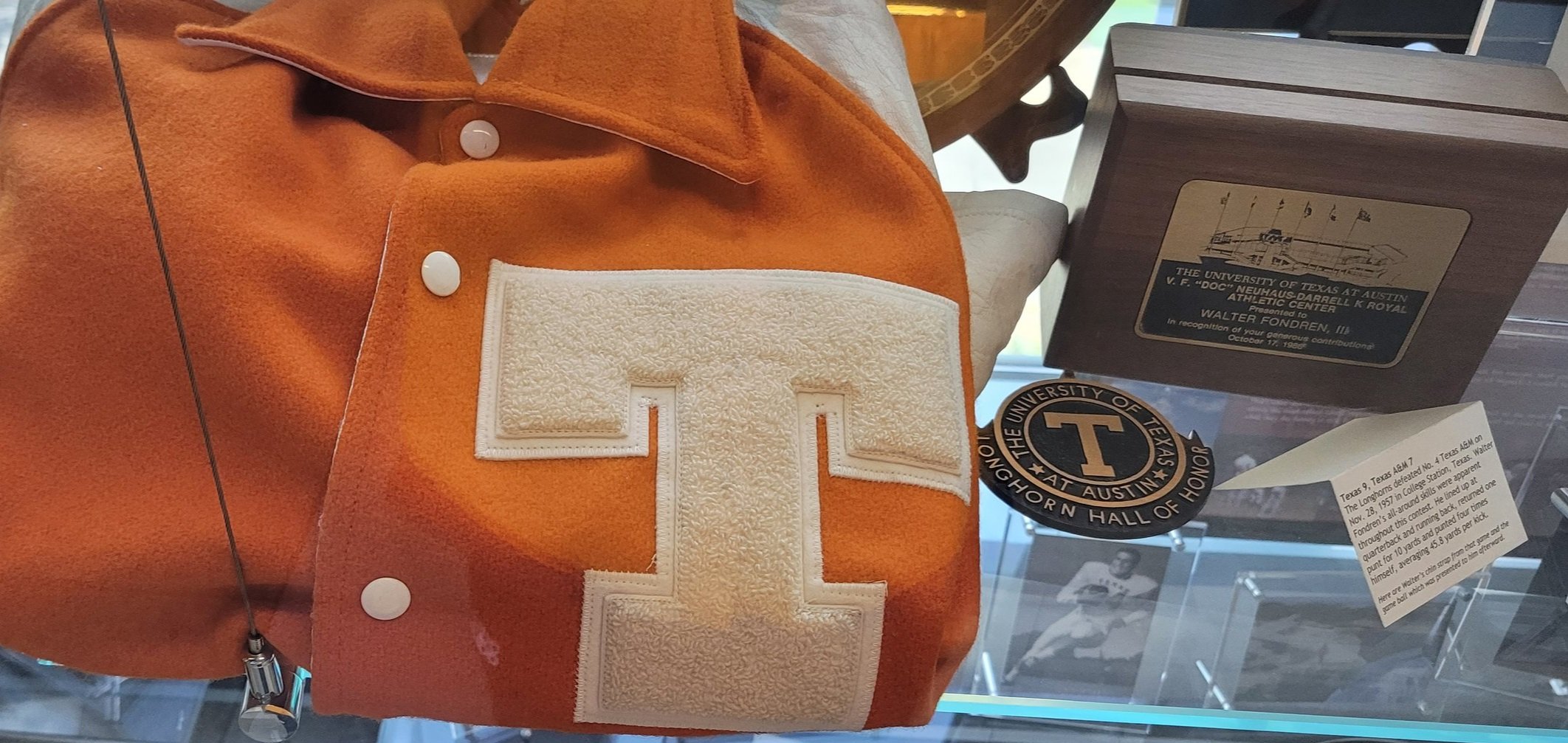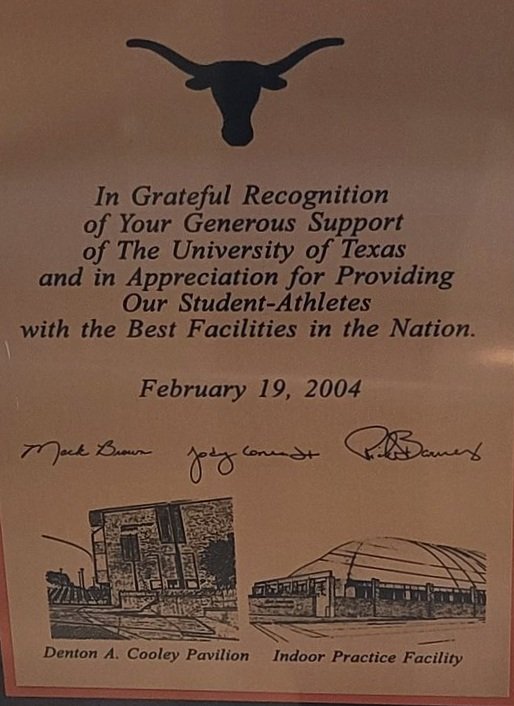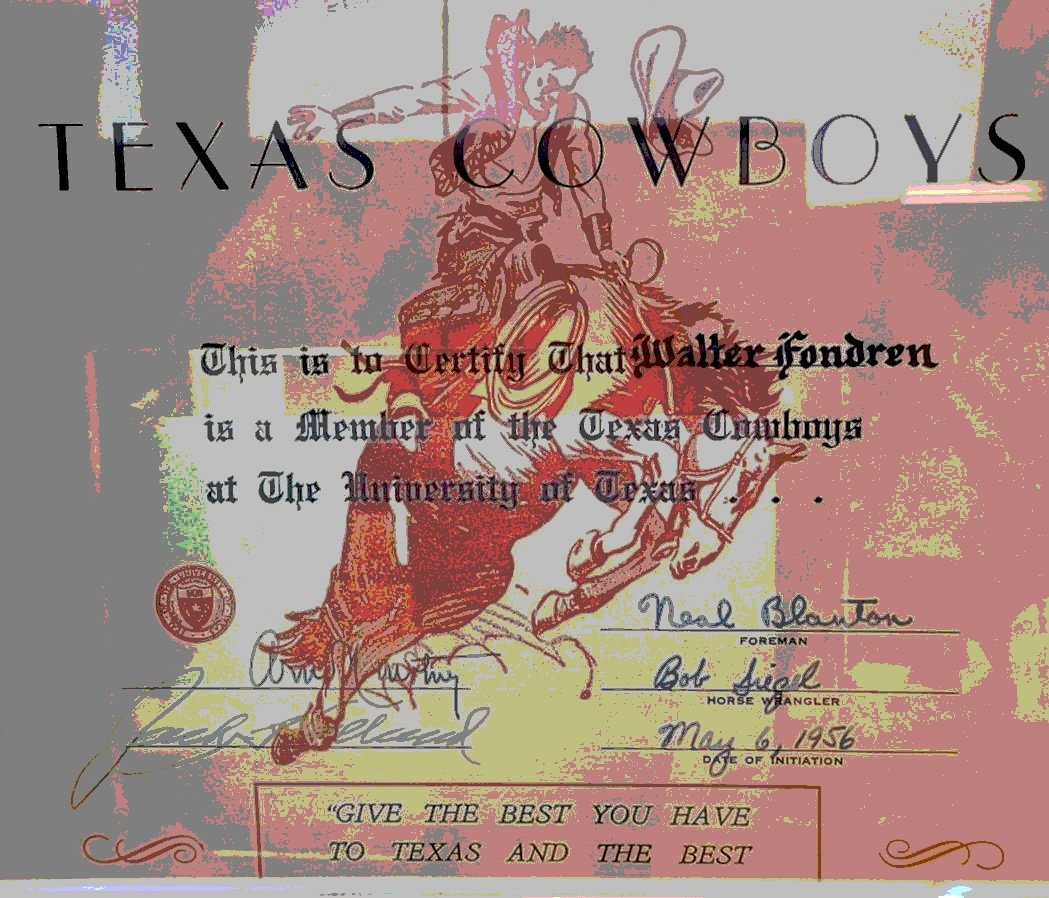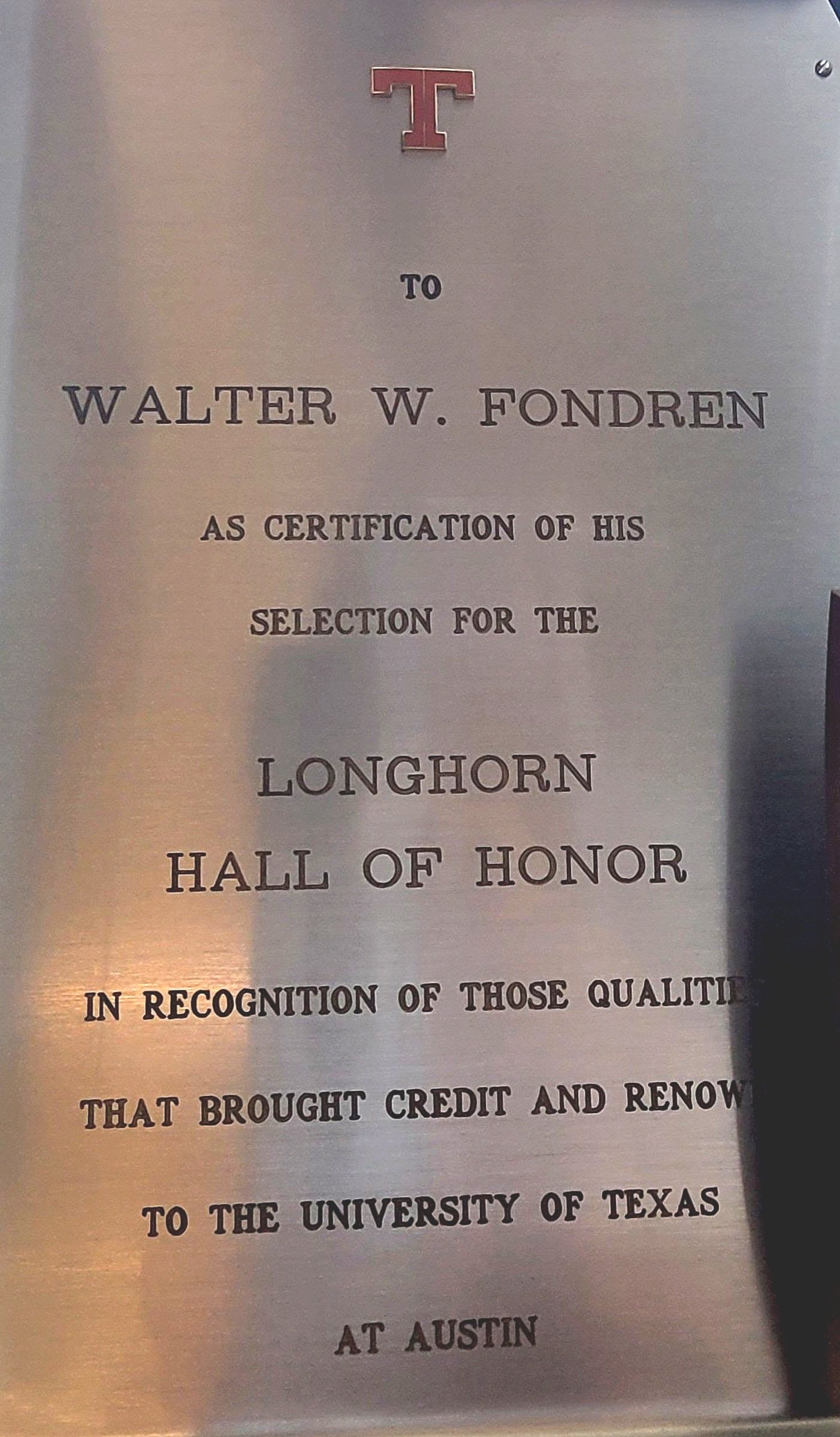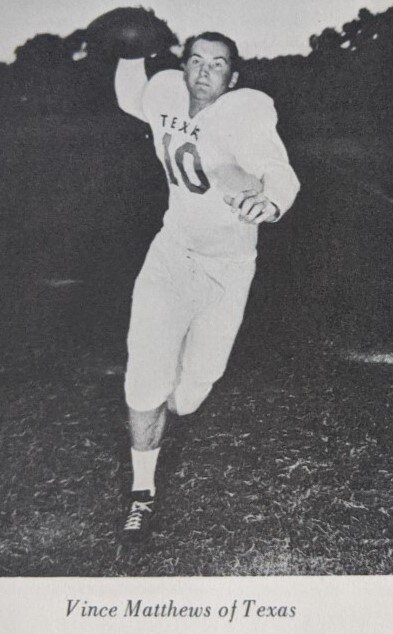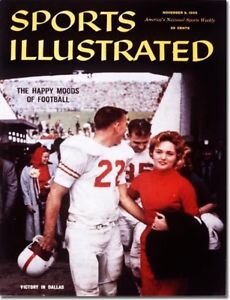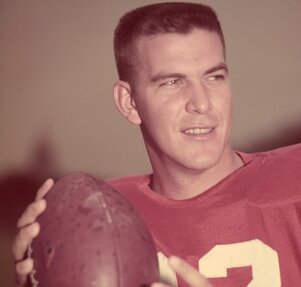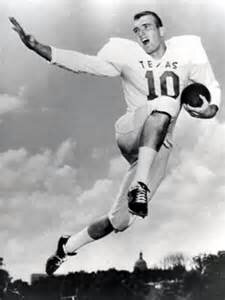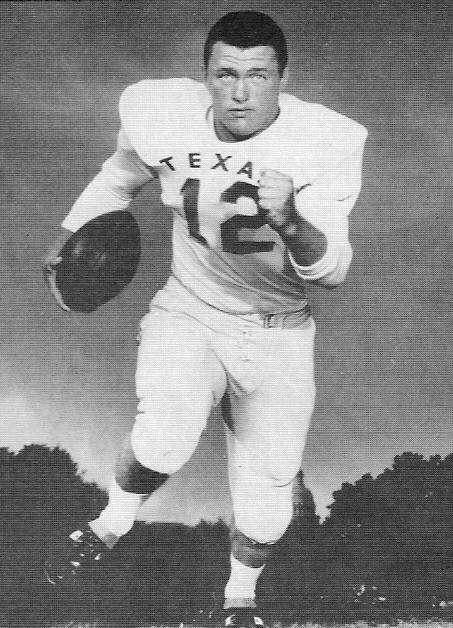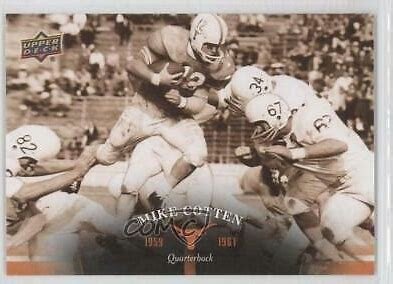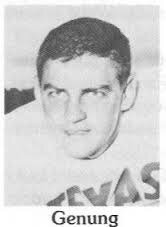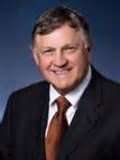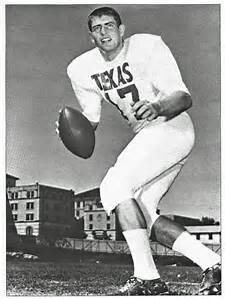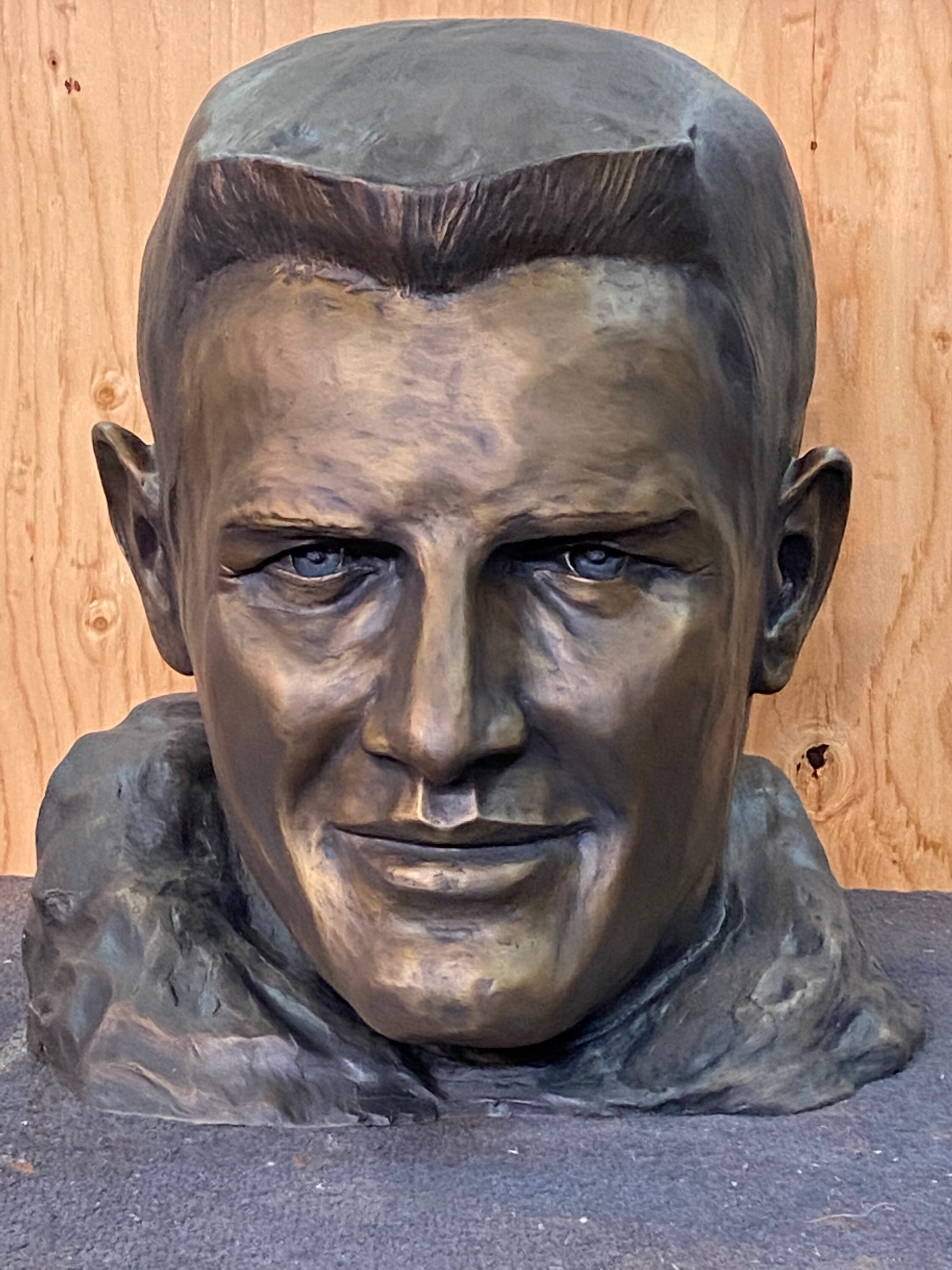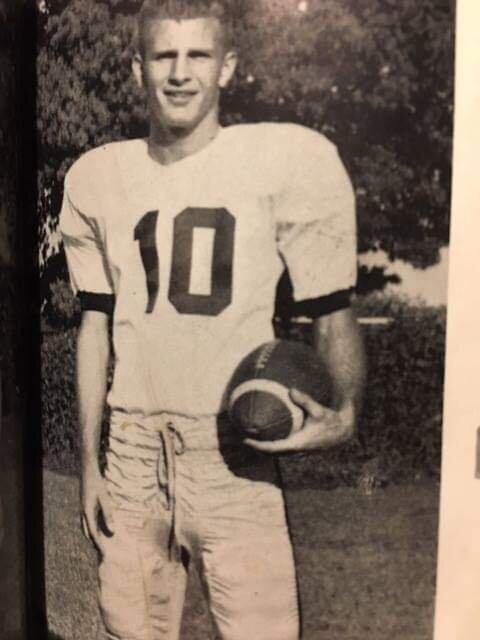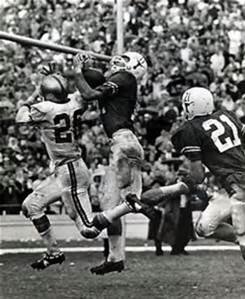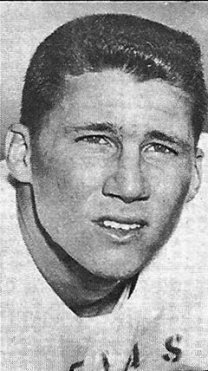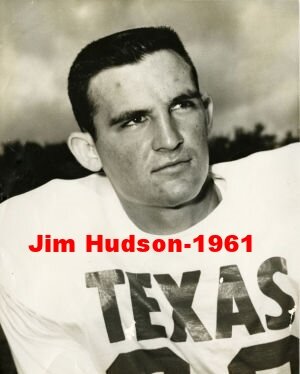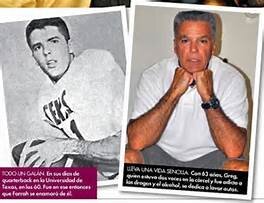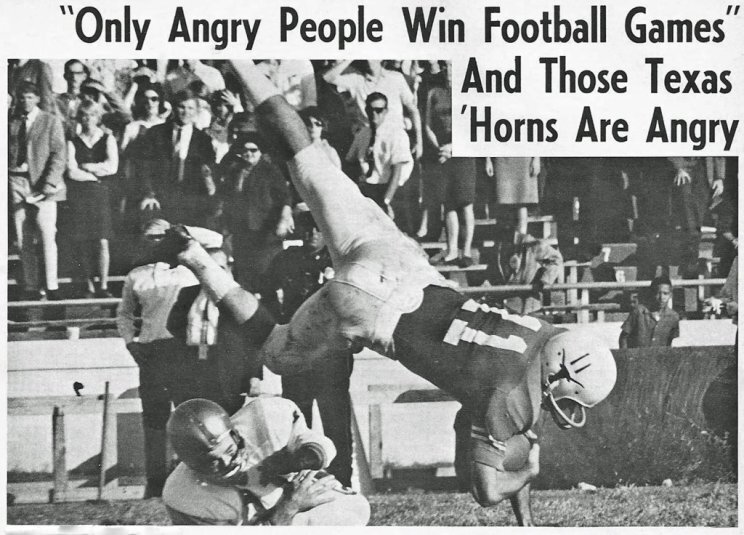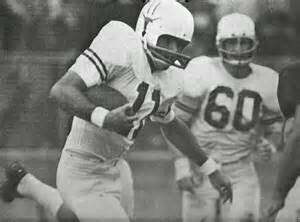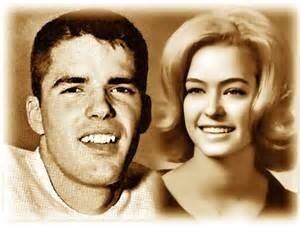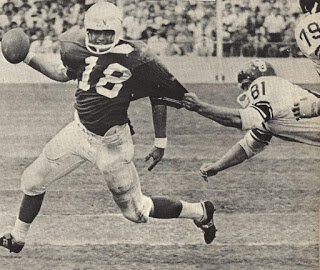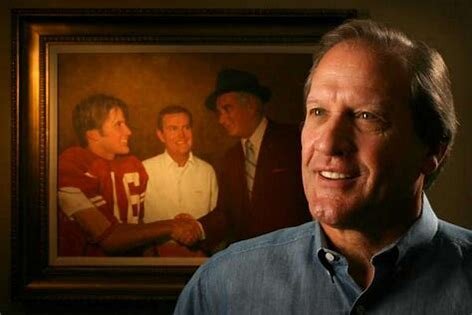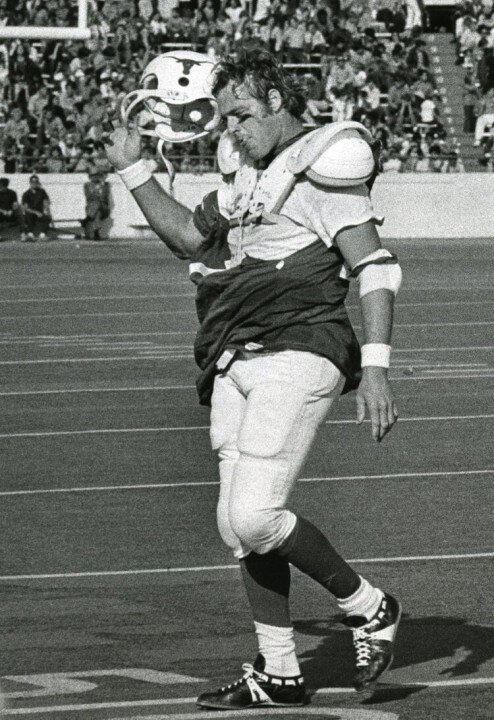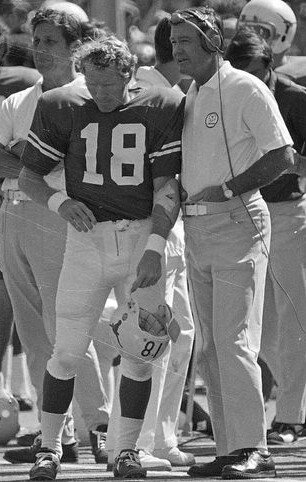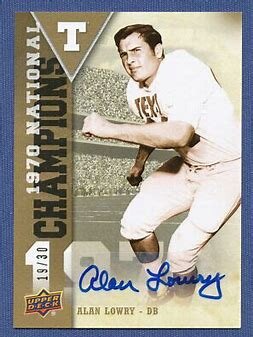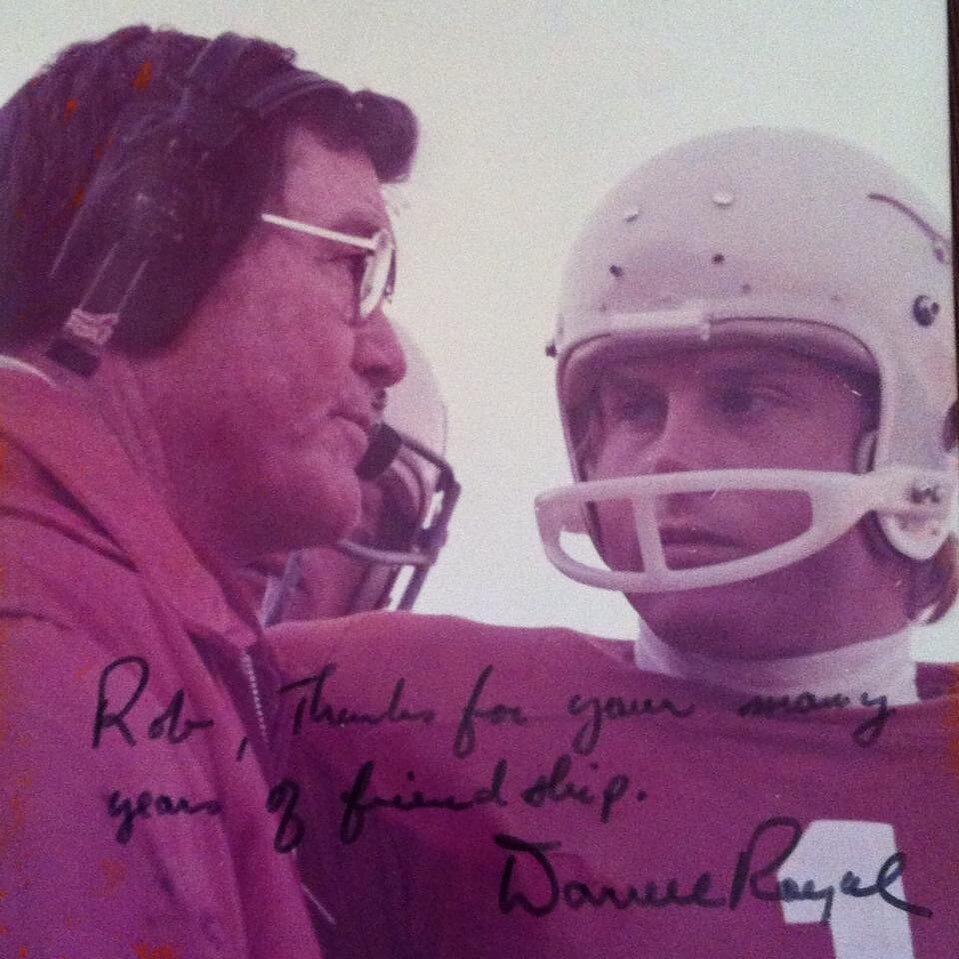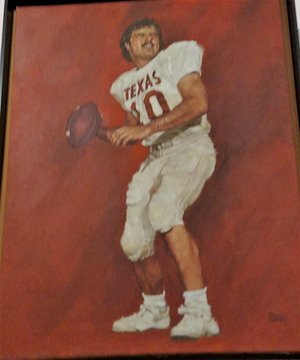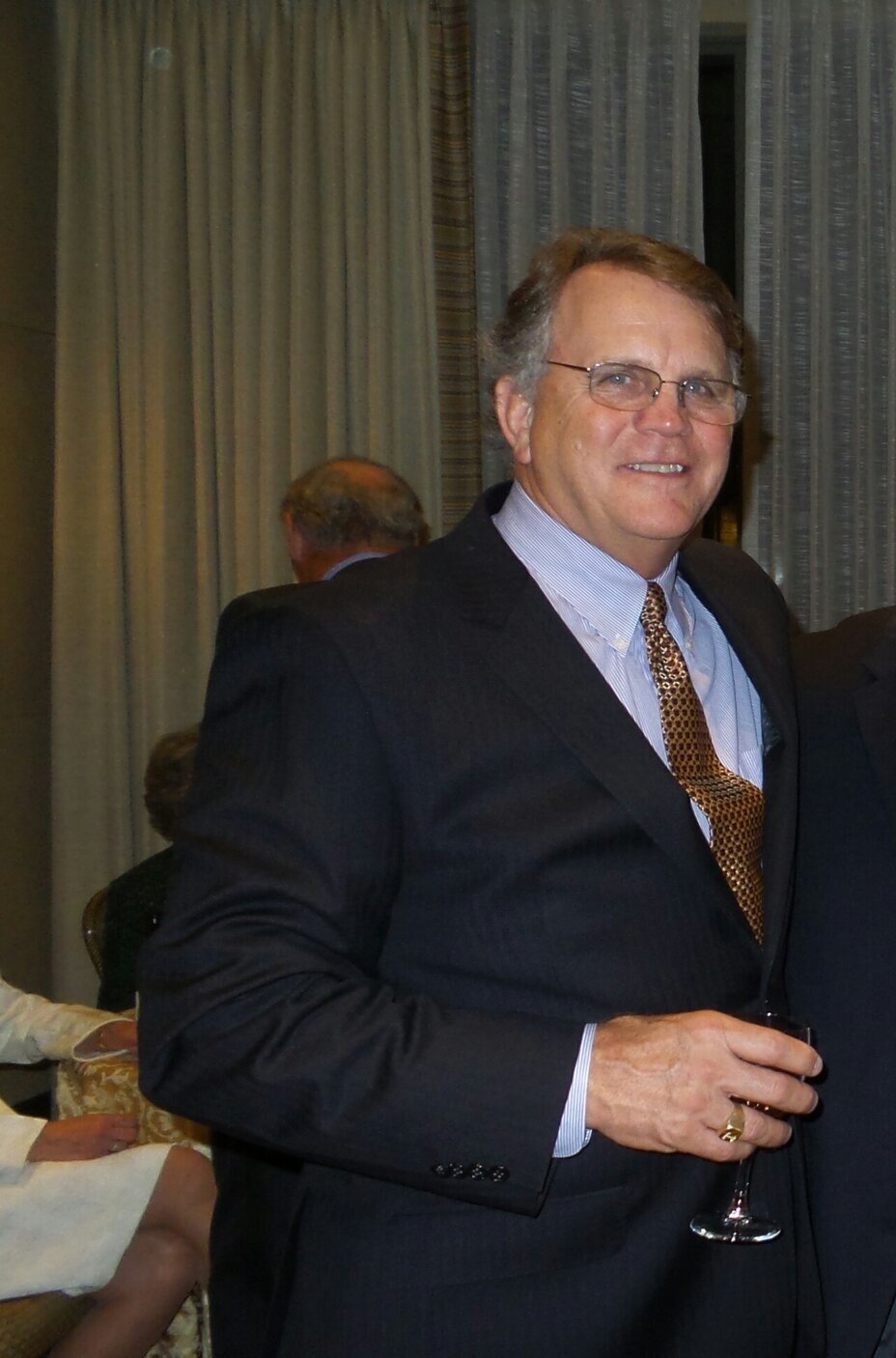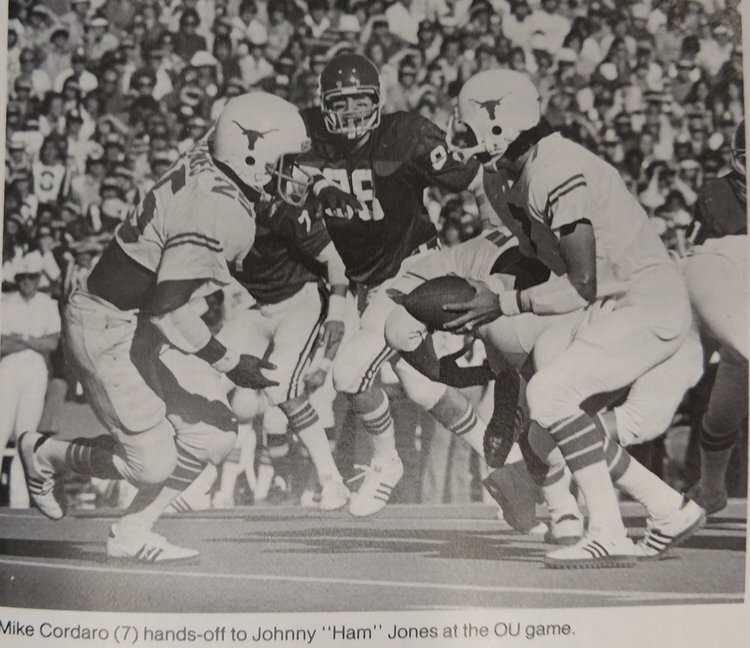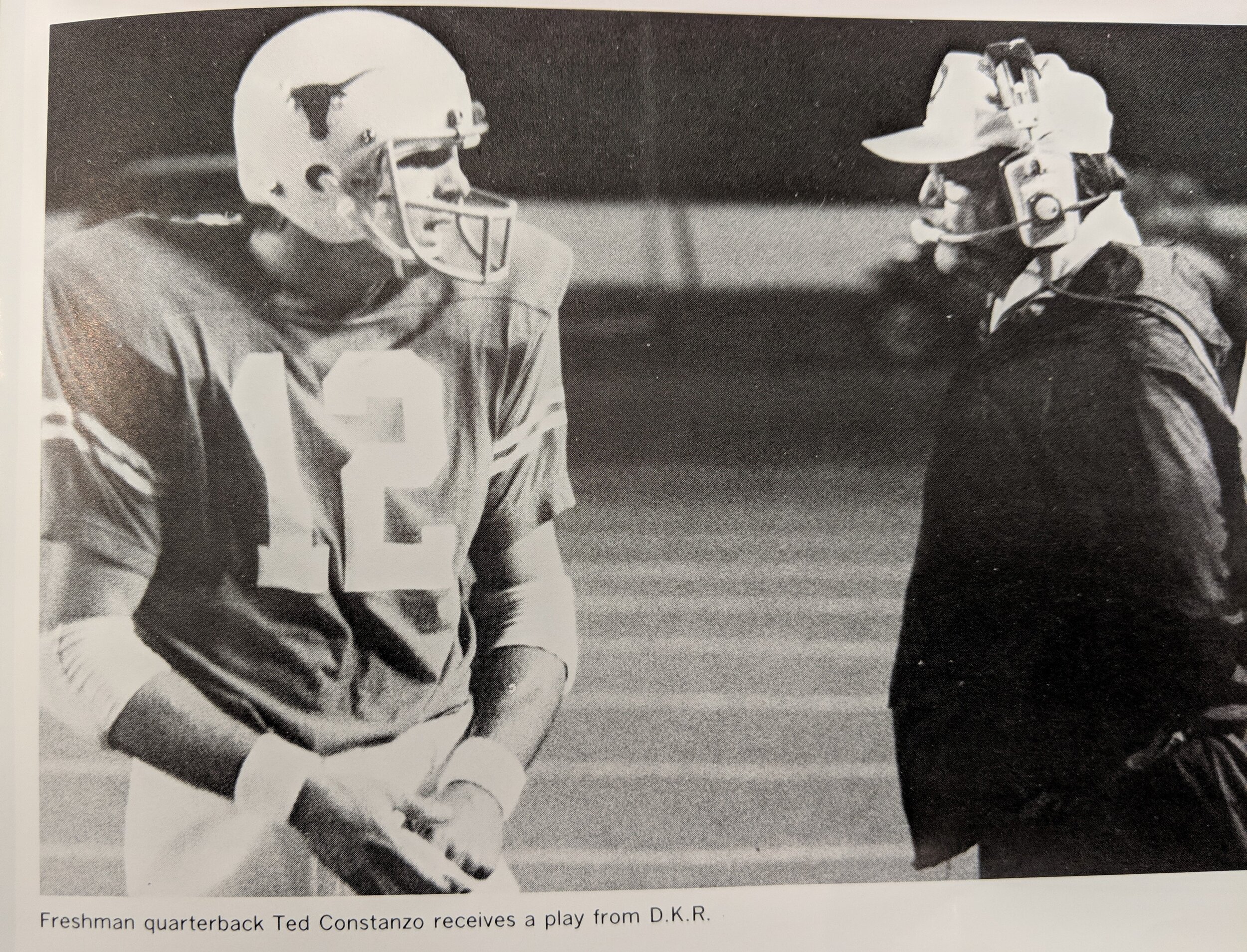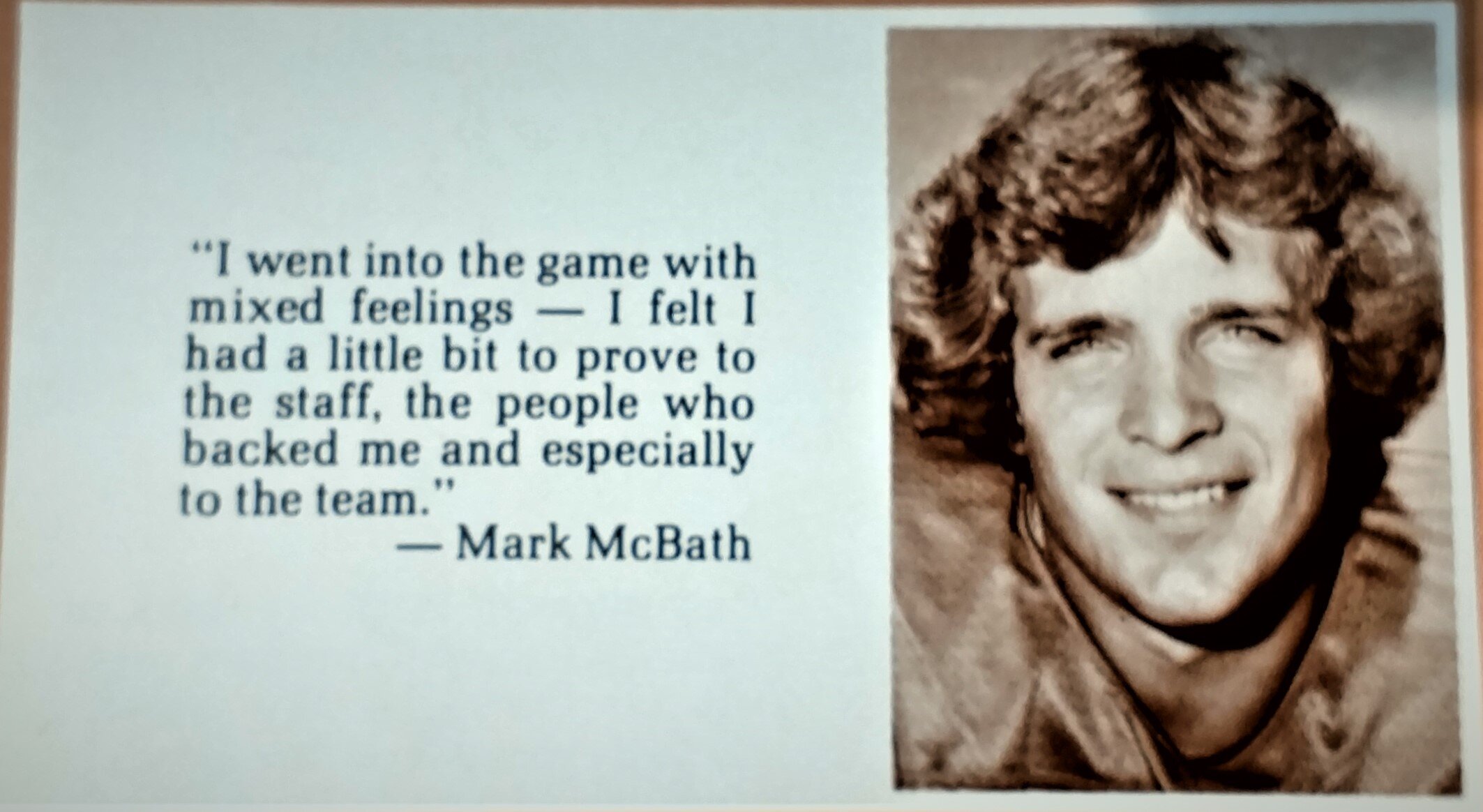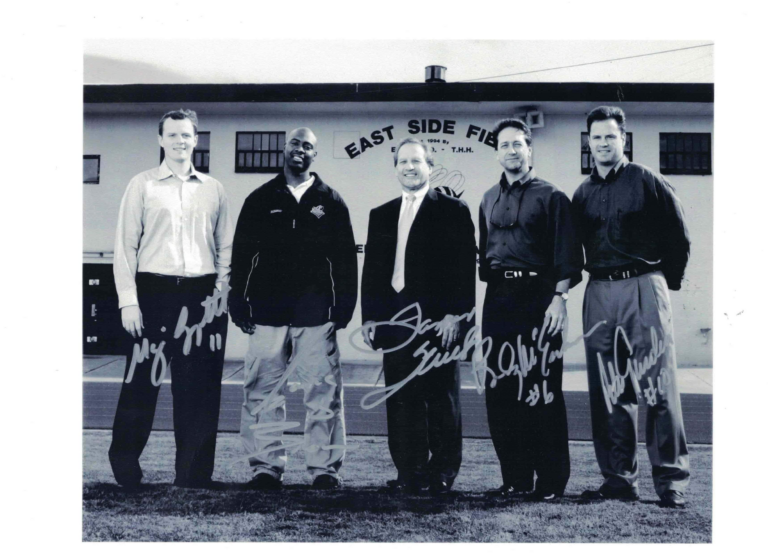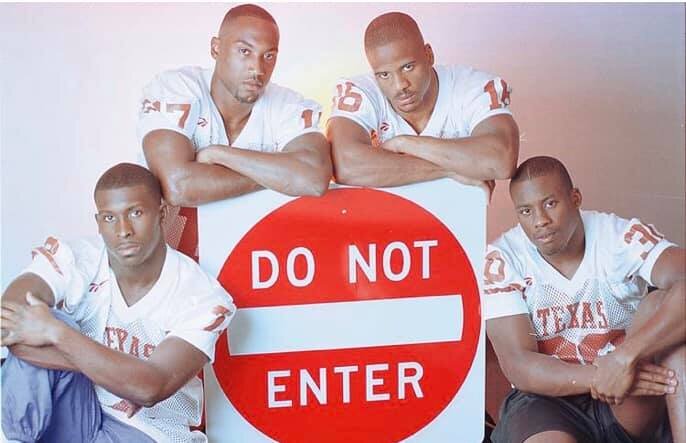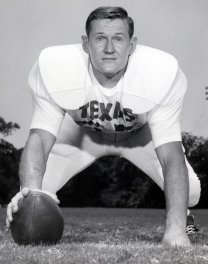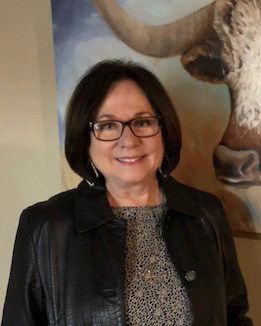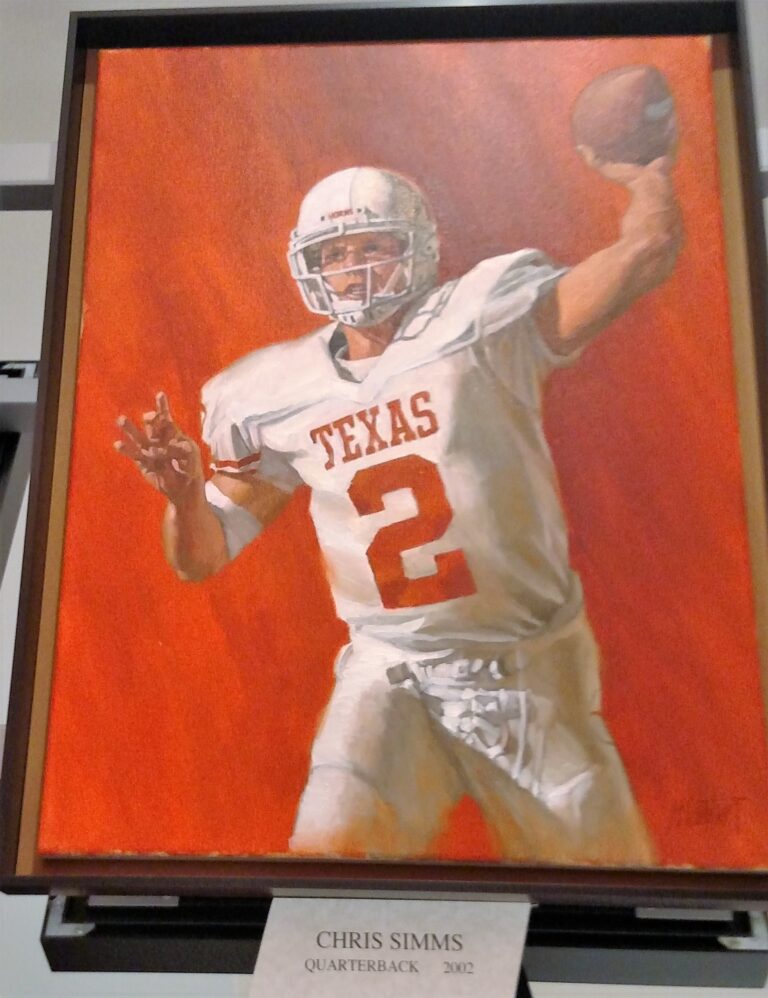1893-1976 Longhorn Quarterback Genealogy
The Genealogy of Texas Quarterbacks – 1893- 1957
Rate the Longhorn quarterbacks in the link below
ttps://www.ranker.com/list/best-texas-longhorns-quarterbacks/ranker-college-football
1893- 1905
1893- Addison Day 150 pounds and Billy McLean 135 pounds
Addison Day 150 pounds leads the 1893 Varsity to an undefeated season. He is used as the quarterback, main rusher, and first kicker in UT football sports history .Billy McLean also shared time as quarterback.
1894- Billy McLean 135 pounds
Billy McLean
1895- Snaky Jones 142 pounds
1896 – S.F. Acree 150 pounds and Lewis Maverick 150 pounds (no photos)
1897 – A.G. Blacklock 135 pounds and Sam Hogsett 140 pounds (no photos)
1898 – Sam Hogsett 146 pounds and A.H. Norton (No photos)
1898 – Sam Hogsett, A.H. Norton (no photos)
1900 – Semp RUss 142 pounds, A.R. Wooldridge, E.c. Connor
Sport: Football (1898-1900)
Inducted: 1969
Hometown: San Antonio, Texas
Named to early era All-Time Texas football team by Houston Post in 1912
UT was 17-3 mark his three seasons
Member of the unbeaten, untied team of 1900.
He was little but fast and a master at running the team.
1901 – Rembert Watson 160 pounds, Randon Porter 136 pounds (no photos)
1902- Randon Porter (no photos) his teammates said he was a great leader.
1903 – Rembert Watson 160 pounds (no photo)
1904 -Neill Masterson 141 pounds and E.L. Wilkerson 126 pounds (no photos)
1905- Bill Blocker, William Francis, E.L. Wilkerson
Veterans had graduated or had failed to return this year. Emmet Wilkerson and Bill Francis were the quarterbacks. The quarterback, Francis, told the backfield that they were the worst set of backs in Texas history.
Blocker defeated Sewanee and A & M.
1906- Winston McMahon 161 pounds – Ben Dyer 144 pounds (no photos)
This is the first year that a forward pass is allowed. Texas uses the forward pass to beat Texas A & M. Ben Dyer is the starting quarterback.
But passing with a fat and, basically, round ball was crude. Passes consisted of holding the ball between the forearm and hand, heaving the ball in a sidearm motion end over end. Ben Dyer, who was the starting quarterback, said years later, “there was very little of the accuracy we see nowadays, and passes of more than 10 or 15 yards were rarely seen. They were wild hit or miss affairs.” Winston says, “the ball was not made for passing. It was made for kicking and running because it was more rounded than the ball of today. I had rather small hands, and I could not possibly throw it any other way except sidearm. At least it was the only way we knew. I could throw it about 30 yards.”
Winston McMahon starts at quarterback for part of the season. He throws The First Touchdown Pass In Texas Football History To Bowie Duncan, but his abilities were suspect. He had never played quarterback nor had any instruction at the position. Winston lost his first game 45 – 0 with only one first down in the game and was highlighted by him getting knocked out.
Two games later, he beats O.U. 10-9.
1907 – Ben Dyer and Arnold Kirkpatrick 155 pounds
Arnold Kirkpatrick was ruled ineligible by the Texas Faculty, so Ben Dyer took over during the Missouri game and won it 27-11.
Check out the shape of the football.
Ben Dyer
1908- Ben Dyer 144 pounds and Offie Leonard 145 pounds
Dyer leads the Horns back from a Aggie lead of 12-0 at half time to a 28-10 victory.
1909- Arnold Kirkpatrick 145 pounds – pending more info.
Arnold Kirkpatrick joined the Horns from Daniel Baker College.
1910- Arnold kirkpatrick 155 pound Offie Leonard 145 pounds
1910 rule states a Pass Has To Originate 5 Yards Behind The Line Of Scrimmage And Completions Have To Be Less Than 20 Yards.
1910 Joe was listed as a halfback on the roster but he also played osm quarterback. Joe is a Hall of Honor Inductee.
1911- Nelson Puett 140 pounds Offie Leonard 145 pounds
Arnold Kkirkpatrick moved to half back to make room for Nelson Puett.
Some believe that Nelson Puett was the toughest-spirited competitor in U.T. history. In true UT fashion Nelson Puett Sr. played quarterback in 1911 and 1912 and was later inducted into the Texas Hall of Fame.
1912 – Nelson Puett , Coke Wimmer 145 pounds (no photo)
1913 -Len Barrell 140 pounds Bedford Shelmire 142 pounds, Frank Loftus 142 pounds
Texas 14, Oklahoma 6
The only Houston game in the series was played Nov. 10, 1913, as part of the Not-Su-Oh Festival. Both Texas TDs came on passes from quarterback Len Barrell to end Charlie Turner, ending OU’s three-year win streak.
1914 – Coke Wimmer 156 pounds Frank Loftus 142 pounds
Coke Wimmer was ineligible in 1913 but was back in 1914. When Wimmer fractured a shoulder Len Barrel was moved to quarterback.
Coach Allerdice is with Coke Wimmer
1915- Clyde Littlefield , Bob Simmons 165 pounds, Billy Trabue 140 pounds, and Ray Williams 155 pounds (no photos)
Clyde Littlefield threw a record 4 touchdown passes against Daniel Baker.
Clyde Littlefield-
Athletic Director (L. Theo) Bellmont does not hesitate to class Littlefield among the five best all-around college athletes he has ever known.”
In football, for example, Littlefield was one of the sport’s first dangerous passers (the forward pass had been legalized in 1906 but took a few years to become truly integrated as a weapon by most teams). Statistics from the era are sketchy and rudimentary at best. Still, Littlefield – playing fullback and halfback in the day’s alignments primarily – in 28 games spanning four seasons accounted for at least 31 touchdowns rushing and passing, including a seven-TD (three rushing, four passing) performance in 1915 against Daniel Baker College. He was named to the All-Southwest Conference team in 1915, the league’s inaugural season after being named to several informal all-state or all-region teams in previous seasons.
Bob Simmons gets hurt and freshman Ray Williams replaces him in the Texas A & M game. The Horns have 12 fumbles in the game and only lose 13-0.
1916 – Billy Trabue 143 pounds, Bob Hanger 150 pounds Pending more info.
Coach Van Gent says that Billy Traubue is the light-spirit leader of the team.
Billy Trabue
1917 Billy Trabue- 143 pounds, Bill Brennan 150 pounds (no photos) Pending more info.
Billy Trabue was elected captain for the 1917 season. Billy was knocked unconscious in the A & M game, and Texas lost 7-0. IN 1917 Trabue had a 75 yard and 63-yard punt return.
1918- Tilly Ferguson, 150 pounds Ben Brown 135 pounds, Pending more info.
1919- Bill Brennan, Rats Watson 170 pounds, Ben Brown 136 pounds, A.J. Jarrell 135 pounds (no photos) Pending more info.
Rat Watson was marked as ineligible right before the OU game. He was a star during WWI for the Texas Second Regiment team. The flashy quarterback had attended Texas briefly in 1917. However, he enrolled at Southwestern before Texas, which made it necessary for him to put in a year’s residence as a transfer before playing for Texas.
1920 – Icky (slippery) Elam 160 pounds, Rats Watson 170 pounds, Bob Murphree 158 pounds, Ben Brown 140 pounds. Pending more info.
Icky Ellam
Icky played for A & M in 1917 and 1918 before transferring to Texas. Elam was declared ineligible at Texas due to questions about his academic standing until the matter could be resolved. It took weeks during the football season to clear up Elam’s transcripts, so Rats Watson moved from half back to starting quarterback.
U.T. finally approved Icky’s eligibility, and he rejoins the team beating A & M with two 4th quarter touchdowns.
1921 – Icky Elam, rats Watson, Ben Brown, George Gardere, Tommy Townsend
This team breaks the Texas A&M winning streak with a quarterback transferred from the A & M football program to the Texas football program. Quarterback Icky Elam wins the game on a trick play.
1922- Punk Stacy, George Gardere, Shay Patton, Bob Murphree, Ben Brown (no photos)
The Aerial Circus begins. Passing dominates football until 1933. Many traditionalists thought that passing was a sissy’s way out of a confrontation with unpadded men with fists clenched who move mountains of men to make a hole for the running back.
Coach Whitaker chose Punk Stacy as the starter because Stacy knew the offensive system. However, Stacy gets hurt and is replaced by George Gardere. George leads the team to wins over Alabama and Rice. Gardere gets hurt against Southwestern and is replaced with Bobby Robertson, who leads the team to victory over O.U.
1923 – Bobby Robertson, Bertie Foster, George Gardere
1924- Bertie Foster, Tom Young, Albert Leissner, Stookie Allen
Little Bertie Foster was the starting quarterback.
Rice and the Longhorns threw 71 passes in the game. Texas accounted for a record 44 of them. Texas lost 19-6.
Memorial Stadium, still not complete, was the facility used for the Texas A & M game. 33,000 fans showed up for the game. Texas won 7-0.
1925 – Stuart (stud) Wright transferred from Dartmouth. He was captain and QB for the 1925 team. Back-up were Joe King and George Harris.
Coach moved Dartmouth transfer Stuart “Stud” Wright to halfback but also used him at quarterback. Stud was not happy about the QB decision and told the Coach so. Coach Stewart responded, “ It’s not up to you; it’s up to you to do what you’re supposed to do.” Stud played quarterback when needed.
He was a graduate of Terrill School, a forerunner of St. Mark’s School of Texas in Dallas. He ended up becoming a brig. General in the Air Force, and fought in WWII and Korea. Bud Brooks
Sport: Multi
Position: Multi
Inducted: 1984
Hometown: Dallas, Texas
BASKETBALL (1925, Guard)
FOOTBALL (1924-25, Back)
TRACK (1925-26)
-
Member of SWC championship track teams in 1925 and 1926
-
Won 1925 SWC 220-yard hurdles crown and 1926 120-yard high hurdles
-
Co-captain of 1926 track team
-
High-point winner at 1925 SWC track meet
-
Became pilot in Air Corps and transported bombers during World War II
-
Attained rank of Brigadier General
1926- Mack Saxon, Joe King no photos
Mack Saxon-QB Wright got hurt against Vanderbilt and Saxon replaced him.
1927 – Joe King, Ed Beular
Joe King threw 3 touchdown passes in one game.
Joe King had such a bad knee that he was advised to have I operated on. King ignored the advice, wrapped the knee tightly, and played ball. He dropped from 150 pounds to 132 pounds because of lack of sleep and the painful knee. Joe King “I would drop back as if to throw a long pass, and our left end, Slover, would come around in the back of the line. We’d throw him a little basketball pass, and the guards would fall out in front of him and run interference.”
1928- Nona Rees, Ed Beular
Nona Rees
1929- Nona Rees, Claude Meadows
1930- Bull Elkins, Johnny Craig, Charles Bankhead, Dexter Shelley
Dexter Shelley was a half-back who played in the SMU game as a quarterback and completed 2 touchdown passes to win the game against favored SMU.
Bull Elkins
Johnny Craig
Charles Bankhead
1931- Bull Elkins, Charles Bankhead, Ronald Fagan, Ben Lewis
1932- Hank Clewis, Charles Bankhead, Ronald Fagan
A lot of Longhorns played at quarterbacks this year. Hank Clewis was the starter, but Ernie Koy, Ronald Fagan, and Charles Bankhead got plenty of playing time.
Ernie Koy threw 3 touchdown passes in one game.
Ernie Koy
1933- Ronald Fagan, Buster Baebel, Charley Johnston
Sophomore quarterback Charley Johnson gets hurt early in the football season. Then Fagan gets hurt and played with a chronic bad knee all year long.
Photo is quarterbacks L. C. Johnston and R. Fagan quarterbacks
Ronald Fagan
Charley Johnston
1934- Buster Baebel, Jimmy Hadlock, James Phipps, Judson Chidlow,
Jimmy Hadlock
1935 – Jimmy Hadlock, Chaley Johnston, Johnny Morrow, Hank Mittermayer, and Frank O’Rourke.
1936 – Bill Pitzer – Hank Mittermayer, Bill Forney, charles Dulaney
Chevigny goes to Indiana to recruit two quarterbacks. Rough and ready Hank Mittermayer and Bill Forney from South Bend.
>
“Bill Pitzer’s 50-yard pass to Homer Tippen was the only score as the O.U. defense allowed just two yards”
1937- Bill Forney, Hank Mittermayer,
Dana X Bible reigns from 1937 until 1946. Bobby Layne is an All-American and a disciple of the passing game.
Bible discusses the qualities of a quarterback
“He must be a leader, a boy who has confidence in himself and inspires the confidence of others. Not only must he know what to do, but he must also be able to make the team do it. If a player has leadership, it follows almost in every play that he has certain other quarterback requisites such as courage, poise, and competitive instincts. “In summary …… he must have “the respect of the team, brains, initiative, and resourcefulness, and some mechanical ability.”
1938- Quarterback Bill Forney, Johnny Gill and Nelson Puett control the ball
The original to Bill Forney’s photo can be purchased on Ebay.com
1939 – R.B. Patrick called some of the plays, but this year belongs to Johnny Gill Jimmy Grubbs, Bullet Gray, and Johnny Gill
Johnny Gills’s decision to change a play in the huddle led to a victory over Arkansas in the last seconds of the game. It was the beginning of the Renaissance. Coach Bible said, “that play …. changed our outlook -mine, the players, the student body” and former students at Texas.
1940- Quarterback Vernon Martin, John Gill, Jimmy Grubbs
Vernon Martin
Vernon “Pappy” Martin pushed co-captain Jimmy Grubbs into relief work at quarterback
1941-Quarterback Vernon Martin, Walter Heap, Pete Layden
Peter Layden gets hurt and Harkins replaces him and defeats Arkansas 48-14. R.L. Harkins finished 3rd in the SWC in passing topping Layden.
Captained 1941 football team (8-1-1)
Led UT in scoring (1940), passing (1939-40), and rushing (1940-41)
He was a better baseball player than a football player playing professional baseball for many years.
1942 – quarterback Spot Collins, Joe Magliolo, Don Fambrough, Roy McKay
Lot’s of quarterbacks played this year. Joe Magliolo was first used as the quarterback, but later Coach Bible moved Harold “Spot” Collins to that position. Roy McKay also played the quarterback position but got injured during the season.
Roy McKay leads the team to a victory against Georgia Tech in the Longhorn’s first bowl appearance.
1943 – Joe Magliolo, Jimmy Canady, Ed Schutze, Robert Poor
Joe Magliolo
1944 – Harold Fischer, Jack Halfpenny, Ed Schtze, Zeke Martin
Harold Fisher quarterback
1944-Zeke Martin – Bobby Layne missed his second game due to an injury and was replaced by future North Texas transfer Zeke Martin. Cecil Francis “Zeke” Martin was a college and pro athlete, high school coach, businessman, and mayor of Denton, Texas. He was a two-time all-conference quarterback at North Texas State College from 1947 to 1950. He was drafted by the Washington Redskins in 1951 and played professionally for the Hamilton Tiger-Cats in Canada during the 1951 season.
1945 -Jack Halfpenny , Guy Nunnelly, Jerome Buxkemper.
Puppy Gillory shared a backfield with Marshall, Texas great Y.A. Tittle, breaking records in 1944.
Joann remembers how things could have been different, but they wound up exactly the way her husband wanted. “LSU wanted Y.A. very badly so they’d do anything to get him so they were working on Puppy. We’ll get you a scholarship if you get Y. A to go, but he said I can’t go I’m only 15 years old. I’m still in high school.”
While Layne was in the merchant Marines the first part of the season, Gillory got some playing time as the starting quarterback beating O.U. and Arkansas.
Back in the ’40s, they played both sides of the ball so he played offense and defense and they had to order him new shoes for every game so he had to be moving very fast and doing some pretty crazy stuff. He played in the 46 and 47 Cotton Bowl then the 48 Sugar Bowl and the 49 Orange Bowl and in the 1940s those were the only bowls that Texas had the opportunity to play in. He got to play in every bowl that was a possibility.”
1946- Jack Halfpenney, Walter Heap Joe Magliolo, Ed Schutz, Paul Campbell
Bobby Lane – starts 34 games wins 28 loses 6 – .824 winning percentage
Comedian Bob Hope says of Bobby Layne “ Layne, you know, was the innovator of the x-rated huddle- He’s the only football player who had a water bucket on the sideline with a head on it.”
1947- Bobby Layne, Paul Campbell, Travis Raven , Bobby Coy Leet
Bobby Layne threw 3 touchdown passes in one game.
In 1947, Blair Cherry replaced Dana X. Bible as head coach at Texas, and he decided to install the T-formation offense. Cherry, Layne, and their wives spent several weeks in Wisconsin studying the new offense at the training camps of the Chicago Bears and Chicago Cardinals of the National Football League. The change was a success, as Layne led the Southwest Conference in passing yards, made the All-Conference and All-American teams, and finished sixth in Heisman Trophy voting to John Lujack of Notre Dame. Against SMU, Layne engineered a fourth-quarter touchdown drive that would have tied the game, but kicker Frank Guess pushed the extra point wide, and the Longhorns lost 14–13. They fell to eighth nationally and finished behind SMU in the Southwest Conference but received an invitation to the Sugar Bowl, where Layne and the Longhorns beat number-six Alabama. As a result of his 10 for 24, 183-yard performance, Layne won the inaugural Miller-Digby award presented to the game’s most valuable player. The Longhorns finished ranked fifth, the best finish in Layne’s career.
Layne finished his Texas career with a school-record of (through 1970):
-
3,145 passing yards and 28 wins
-
Most passes (400)
-
Most touchdown passes (25)
-
Most offensive plays (642)
1948 – Paul Campbell, Bobby Coy Billy Allen
Replacing Bobby Layne, Paul Campbell took his team to the 1949 Sugar Bowl.
Six minutes into the second half, the Longhorns had driven to the Georgia 24. This time, the ball was faked to Samuels and instead thrown by Campbell to Procter, who caught Campbell’s “beautiful bullet pass, right on the button and chest-high” (as described in the Jan. 2 Austin American) on the run and raced through the end zone, narrowly missing the goalpost. Clay again nailed the kick, opening up a 27-14 UT lead.
Paul as a starter record was 13-7 for a winning percentage of .643.
At one point Coach, Cherry considered starting Billy Allen, but Cherry finally decided to salvage Paul’s year. No photo of Billy Allen
1949- Paul Campbell, Bobby Coy Lee, Ben Tompkins
Bobby Coy Lee was on the team in 1943 but eventually joined the service. He returned to Texas in 1946, but injuries plagued him in 1947 and 1948. In 1949 he was competing against Campbell for the starting quarterback job.
Bill Allen also competed for the QB starting job, but he broke his finger in early Fall 1949.
Cherry played both Lee and Campbell the first three games. Paul Campbell eventually won the starting job.
Records for Paul Campbell from inception of Longhorn football and 1970.
-
1949 most passing yards in a game (340)
-
1949 most yards passing in a season ( 1372)
-
1949 most passes completed ( 91)
1950 Ben Tompkins, Dan Page, T. Jones – Team was #3 in the nation
The 1950 baseball National championship photo below includes left to right Bob Brock, Irv Waghalter, Kal Segrist, Coach Falk, and Ben Tompkins. Ben’s record as a pitcher was 9-2. His football record was 9-1. The Horns lost to Tennessee in the Cotton Bowl 20-13.
Ben Tompkins led the Horns to the SWC football championship in 1950. He took the Horns to the Cotton Bowl to play LSU, but it was obvious he had other things on his mind.
In 1951 Ben signed a $25,000 baseball contract with the Philadelphia Phillies. He spent 6 years playing professional baseball, then went back to school and received a law degree from SMU. He was an NFL official for 20 years, working two super bowl games and many playoff games to make extra money.
T-Jones only took 3 offensive snaps in 1950, but that changed in 1951. He married his high school girlfriend and Texas cheerleader 3 hours after the Cotton Bowl game was over.
Head Coach Ed Price takes the reigns 1951 through 1956.
Danny Page – 1951 Dan Page, T- Jones, (No photos)
Danny Page’s record as starting quarterback is 2-2.
In 1950, Page was the backup quarterback to Ben Tompkins but managed to play in every game as either quarterback or defensive back.
Dan Page holds the Texas game record for the highest gain per passing attempt (25yards).
Dan Page
In 1951, the first season with coach Ed Price, Page was set to compete with T Jones and Tompkins for the starting role. But when Tompkins left to play professional baseball in the winter, Jones got the start in the opener. The
Page saw some playing time in the early games as Texas climbed to #4 in the rankings. Then they were upset by Arkansas, a team they had not lost to since 1938. In that game, Jones and Page combined for 1-12 passing, with Page making the only completion and lost by 2 on a Pat Summerall field goal.
Jones started the following game against Rice, but Page led the Longhorns to the win. Page led Texas to an upset of #12 TCU, throwing for 175 yards and 2 touchdowns, setting two school records. Danny still holds the game record for most yards gained per pass attempt. Texas needed to beat Texas A&M for a share of the conference title and a trip to the Orange Bowl in the final game of the season, but despite 150 yards passing by Page, Texas was upset 22-21. Beaten by A&M for the first time since 1939.
1952 T Jones, Bunny Andrews
Early in Spring training, defensive back Bob Raley challenged T-Jones for starting quarterback (no photo).
T-Jones says that under Coach Price, the quarterback had complete control of the offense and actually called the blocking assignments. T-Jones led the Horns to victory over Tennessee in the 1952 Cotton Bowl.
1953 – Bunny Andrews,(Rooster Andrews brother), Charley Brewer, Pat Tolar, Glen Dyer, Dick Miller
Chatterbox Andrews is elected as one of the captains of the football team. Coach Price used 4 quarterbacks at the start of the season. – Andrews, Brewer, Pat Toala, and Glen Dyer but none proved themselves. Brewer broke out as the best QB after the OU game. Bunny came off the bench for the Arkansas and SMU game to win it.
1953-Bunny Andrews starts with Charles Brewer as the backup. Rooster’s link is https://www.texaslsn.org/rooster-andrews-deceased-one-of-a-kind
In 1953 Brewer was promoted to the starting quarterback role. Charley Brewer started 16 games, won 9, and lost 6 with 1 tie.
1954- Charley Brewer (Robert Brewers dad ),Glen Dyer , Pat Tolar, Dick Miller, Bobby Bowmer
After earning the starting job on the Longhorns freshman team in 1952 and leading them to three late-season victories, Brewer had a chance to compete for the varsity’s starting job in his sophomore year. In the 2nd game of the season, he carried the ball twice for two touchdowns and returned a punt 59 yards to set up a touchdown. Brewer led the team to wins in 5 out of their next 6 games, including upsets of #11 SMU and #3 Baylor, and a share of the Southwest Conference Championship. He led the team that season in passing, kick-off return yards, and punt return yards. Against Baylor, Brewer threw the game-winning touchdown pass, and against Texas A&M, perhaps Brewer’s best game, Brewer set up or scored all three touchdowns. Their only loss that season with Brewer as the starter resulted from a last-minute touchdown by co-champion Rice.
Brewer remained the starter in the 1954 season when the Longhorns started the season ranked #4 but struggled to a 4-5-1 record. Texas lost games to #1 Oklahoma, #2 Notre Dame, #12 Arkansas, and #20 Baylor. Brewer ended the season with another spectacular game against Texas A&M, the first for Texas in the Paul “Bear” Bryant era, throwing for 121 yards – his career-high – and 2 touchdowns to win 22-13.
In 1998, Brewer was inducted into the Texas Football Hall of Fame in Waco.
Brewer has a bad game against Notre Dame so Coach Price replacing him with Dick Miller.
Late in the half , Glen Dyer came off the bench and was unsuccessful breaking the tie against SMU. Dyer also played against Baylor and lost.
The chart below is compliments of Mike Barnes- The names represent Starters before 1990 and all QBs since 1990”
1955 Charley Brewer, Joe Clements, Dick Miller, Joe Clements, Walter Fondren
1955 – Walter Fondren starts 2 games and Joe Clements starts 8.
Joe Clements threw 3 touchdown passes in one game.
In spring training in 1955, Brewer was struggling at quarterback and Walter Fondren replaced him. Coach Bible struggled with the right quarterback throughout the year Fondren was ineffective in that game, leading coach Ed Price to rotate through his quarterbacks until Brewer, Joe Clements, Walter Fondren, and Dick Miller had all taken the field. Bible thought he finally had the right combination by moving Clements to quarterback and Fondren to halfback. The next week Clements had a career game, and was promoted to starter for the rest of the season. Brewer still played in every game replacing Clements when he suffered a concussion.
Joe Clements throws a record 17 completed passes in 31 attempts against OU, In the Tulane game he also threw for a record of 17 completed passes. and Tulane. He had 19 completion of 33 thrown against O.U.
1956 Quarterback – Joe Clements starts all 11 games, Vince Matthews, LaNoal Castleberry, Jim Moffitt
1955 Clements is the backup quarterback to Walter Fondren. But, in the second game of the year, Joe replaced Fondren. Joe threw for 215 yards and three touchdowns in a game, becoming the second Longhorn to ever throw for more than 200 yards in a single game and tying the school record for touchdown passes in a game.
In 1955 and in 1956 he led the Southwest Conference in passing. At one time in 1955, Clements was the nation’s leading passer. He started every game when not hurt for Texas for the next two years. Clements suffered a concussion against USC early in the game and was replaced by Walter Fondren and third-string quarterback Dick Miller.
After the 1956 season, Darrell Royal was hired and replaced the pocket pass-oriented offense that Clements did well in with the Split-T option that played more to the strengths of Fondren. Clements fell down the depth chart and, as a result, only saw limited action in four games during his senior season. But the Longhorns had one of the program’s worst teams and finished with a 1–9 record. The worst record since 1938. passes completed, completion percentage, and interceptions.
Royalty begins in 1957
1957 – Walter Fondren, Bobby Lackey, Joe Clements, James Moffitt
Fondren was the starter, but when he had trouble moving the offense, DKR replaced him with Bobby Lackey. Lackey actually got the starting job for the SMU game, but Fondren still got the call to play many times.
1958 – Bobby Lackey, Larry Cooper, Vince Matthews, Tommy Newman
Vince Matthews has a special day against O.U.
Vince Matthew replaces Clements in the USC game and starts against Tulane but is pulled during the game and replaced with Clements. Clements starts the remainder of the season.
In 1956 Vince got hurt in the SMU game, and Fondren replaced him.
In 1958 quarterback Bobby Lackey with a little help from Vince Matthews leads the Horns to a victory over OU and a stellar season.
1959- Bobby Lackey, Mike Cotten, James Saxton, Tommy Newman
Bobby Lackey started but was replaced by a both Mike Cotten and James Saxton on several occasions. Lackey was dazed from a blow to the head in the O.U. game and replaced by Ramirez , Cotten, and Saxton.
Bobby Lackey
James Saxton
1960 Mike Cotten , Bobby Oliver, Johnny Genung, Joe Ed Smith
Royal was concerned who would replace Bob Lackey. At first they tried Roger Rienstra but he had a injured knee and a split finger. Mike won the starting job but Johnny Genung replaced him when Cotten pulled his hamstring.
As a freshman, Mike Cotten led the freshman team – the Yearlings – to their first undefeated team since 1941.
In Mike Cotten’s sophomore year, he was the primary backup to starter Bobby Lackey. He also played defensive back and returned punts and kickoffs on a team that went 9-2 and finished #4 in the nation before losing to #1 Syracuse in the Cotton Bowl.
For the next two years, Cotten was the starting quarterback for Texas and, in the second year, ran Royal’s first great innovation – the Flip Flop offense, a winged-T formation that simplified the offense.
1961- Mike Cotten, Johnny Genung, Duke Carlisle, Tommy Wade
Mike Cotten – starts 22 games wins 17 loses 4; ties 1- .795 winning percentage
1962 – Johnny Genung, Duke Carlisle, Tommy Wade
In 1959, Genung played on the undefeated freshman team and during the 1960 and 1961 seasons at Texas, he was the backup quarterback to Mike Cotten. His most important play of 1960 came in the final seconds of the Bluebonnet Bowl. Tied at 3-3, Texas got the ball on their own 48-yard line with 28 seconds left and Royal sent Genung in. He had already caught a 38-yard pass in that game (the only reception of his career) and now had a chance to win it. He threw two Hail Mary passes, both of which were incomplete, but the second drew a pass interference call. With no time left on the clock, Texas had a shot at a game-winning field goal from Alabama’s 18, but the kick was wide left.
Genung saw increased playing time in 1961, especially in games against California and Texas Tech, but he suffered a setback when he missed the last three games of 1961 with a back injury. In the same year, he was an Academic All-American nominee.
In spring training prior to the 1962 season, he broke his arm while vying for the starting quarterback job; but a preseason injury to Tommy Wade moved Genung into the position. He started the first four games, all victories, and led Texas to the #1 ranking. But a close call against Oklahoma led Darrell Royal to replace him with Duke Carlisle against #6 Arkansas the following week. Down by 3 in the 4th quarter, Texas took over on their own 10 with Carlisle leading the Longhorns to midfield. Duke was then replaced by Genung who led the Longhorns down to the 3 yard line before handing the ball to running back Tommy Ford for the win. Carlisle sealed the game by intercepting Arkansas on the subsequent possession, but Genung was the hero and reclaimed the starting role. A 14-14 tie to Rice the following week would cost Texas its #1 ranking and the National Championship. Two games later Genung was replaced by Wade as the starter. But Genung’s season was not over. In the last game of the season, Genung replaced Wade in the 3rd quarter of the Texas A&M game and led the team to a come-from-behind victory to win the Southwest Conference Championship and complete their first undefeated regular season since 1923. As a result of his play in that game, Genung was named the starter in his final against #7 LSU in the Cotton Bowl. It was a tough game for Genung and the Longhorns. Genung drove Texas into scoring position on the 2nd drive, but the field goal attempt failed. The Longhorns fell behind and Genung was replaced by Wade to make the offense more pass-oriented. Texas lost 13-0.
After his senior year, he was the quarterback of the Southwest All-Stars football team in the first, and only, Southwest Challenge Bowl in Corpus Christi. That All-Star game pitted players from the Southwest Conference and other Texas teams against a team made up of players from around the nation. Genung was a last-minute replacement for injured Arkansas quarterback The Southwesterners lost 33-13.
Genung graduated with a 5-1-1 record as a starter.
After a year on the undefeated Texas freshman team in 1960 and a year on the 1961 Texas Longhorn baseball team, Tommy Wade became the back-up quarterback to Mike Cotten in 1961, and played a few downs on defense. During his sophomore year Darrell Royal wanted him to take part in spring practice, so Wade gave up on being a pitcher in college, though he continued to play semi-pro ball in the summer.
In 1962, despite a broken ankle suffered in the spring, Wade was expected to be the starter but was sidelined by a preseason injury. He didn’t get his first start at quarterback until November, though he did play some quarterback and defense in the early games. In his first game as starter he set the school record for most attempts in a game and threw for 195 yards. He led the team to three straight wins against Baylor, TCU and Texas A&M and helped Texas win the 1962 Southwest Conference Championship and finish its first undefeated regular season since 1923. He also tied the school record for fewest interceptions thrown in a season. In the Cotton Bowl, which Wade did not start, the ineffective Texas offense was held scoreless and Wade tied the Cotton Bowl record for most interceptions in a game(3) as the Longhorns lost 13-0. He threw more interceptions in the Cotton Bowl than he did in the entirety of the season.
In 1963, Wade lost the starting quarterback job to classmate Duke Carlisle and saw his playing time significantly curtailed. He played in most games, getting in when Royal wanted to emphasize the pass, but he specialized in the two-minute offense.
Wade, however, played a key role that year in helping Texas to beat Texas A&M and win the National title. When Texas fell behind late in the 4th quarter, Carlisle was pulled in favor of Wade. Starting on Texas’ 20, Wade drove Texas to the 50 yard line before throwing an interception that seemed to seal defeat. But the Aggie defender attempted a lateral that Texas recovered thus preserving the drive. Wade then took Texas to the 2-yard line of Texas A&M, but after he nearly threw the ball away again, Carlisle came back in and scored the game-winning touchdown with a little more than a minute left. With their perfect season preserved, they were crowned National Champions.
Wade finished with a 3-0 record as the Texas starting quarterback.
1963- Duke Carlisle, Jim Hudson, Tommy Wade, Marvin Kristynik
When Carlisle arrived on the UT campus in the autumn of 1960, he joined a talented class of freshmen who were about to embark on one of the greatest runs of success in Longhorn history. Freshmen were not eligible for the varsity then, but they played a five-game schedule against first-year players from other schools. Carlisle and his crowd won all five.
Carlisle worked at both quarterback on offense and safety on defense in both 1961 and 1962.
He was a backup signal-caller to Mike Cotten in 1961 and 1962 sharing the quarterback duties with Johnny Genung and Tommy Wade.
1962 Duke starts one game and wins it. 1963 he starts 11 games and goes 11-0.
Duke Carlisle Started 12 games and won all 12
1964- Marvin Kristynik, Jim Hudson, Gary Moore
1964- Jimmy Hudson is the starter but gets hurt early in the season. Kristynik started the first game of the season. Kristynik started for the rest of the season and led the team to within 1 play of repeating as National Champions. In 1965 Kristynik started every game in a disappointing 6-4 season. When the season was over, Kristynik played in the 1966 Hula Bowl backing up Tommy Wilson on the losing South team.
When DKR retired from football in 1976 a reporter said “how about picking out some players who got the very most out of their ability. “Coach Royal said “Marvin Kristynik damn sure would be an entry.”
Marvin Kristynik is the starting quarterback, and Royal says, “the only thing that keeps Marvin from being a good runner is a lack of speed”. Regardless of speed, Marvin was a winner.
A story worth retelling -In the locker room before the Arkansas game, Marvin discovers he left his contacts in Fort Smith, Arkansas, at the hotel. He is afraid to tell Coach Royal, so Jack Perry volunteers to fly his private jet back to Fort Smith to retrieve the contacts. Police escort Perry to and from the airport. Coach Royal only learns about this in the paper the next day.
Marvin Kristynik -starts 20 games wins 15 and loses 5- .750 winning percentage
Jim Hudson played at various times wide receiver, running back, defensive back and quarterback at Texas and also returned punts. He began at Texas in 1961, and in 1962, his first year on the varsity, he played wingback and defensive back.
The following year, he played defense on the team that won the 1963 national championship.[4] That season, he led the team in interceptions and recorded 5 tackles in the 1964 Cotton Bowl win over #2 Navy.
At the start of the 1964 season, Hudson was moved to quarterback, but he was injured before the season started and replaced by Marvin Kristynik. Hudson’s one and only start at quarterback came in the 2nd week against Texas Tech. He was injured on the first scoring play at the end of the first quarter and replaced by Kristynik for good. He saw little play for the rest of the season, until the 1965 Orange Bowl against #1 and National Champion Alabama. Kristynik struggled early, and Hudson was put in after a penalty turned a punt into a first down. He hit George Sauer for a 69-yard touchdown pass and helped lead Texas to victory. In the process, he attracted the attention of Jets scouts who had come to watch Crimson Tide quarterback Joe Namath.[5]
-
UT Record – Longest pass in a bowl game, (69), surpassed by James Street in 1969
-
UT Record – Longest touchdown pass in a bowl game, (69), surpassed by James Street in 1969
1965- Marvin Kristynik, Greg Lott
Marvin Kristynik threw 3 touchdown passes in one game.
Greg Lott
Pat Culpepper said, “Greg Lott had Hollywood looks and what was important to me, outstanding speed!” He also played kick returner with some success. I was long gone from the University of Texas when Danny (Abbot) and Greg Lott played, but I tried to keep up with them as best I could.
Greg says, “ I must admit that I often picked out future “dates” from the University of Texas yearbook during my playing days in Austin. Those were the days…, and it wasn’t until my senior year that I settled down my dating activity to just one girl. No, it wasn’t what you think; they were movie dates, dancing dates, or double dates with my teammates to events in Austin’s downtown or one of those great Mexican restaurants.” His girlfriend was none other than what would later become Hollywood blonde bombshell Farrah Faucett!
1966- Bill Bradley and Andy White
https://247sports.com/college/texas/Article/All-Time-Top-10-Quarterbacks-32599/
1966 Andy White Is the first quarterback in the history of Longhorn Sports to make his debut as the starter against O.U. (no photo). He started 1 game won 0 games loss 1; winning percentage .000
https://www.kvue.com/article/sports/commentary-here-is-the-texas-longhorns-toughest-job-on-the-football-team/269-570397288
1967 Through 2013
1967- Bill Bradley, James Street, Paul Kristynik
Bill’s knee surgery is a success, but Bradley had lost a step of quickness and cutting ability. Less speed resulted in the most passing records during Royal’s years as head coach. Bill Bradley started 22 games, winning 13 and losing 8 for a .614 winning percentage. He holds the Longhorn record for most total offense in a season (1,624 yards) for the first 100 years of Longhorn football.
Street, who excelled at spring training, was sidelined due to a hamstring injury from summer baseball. The 3rd quarterback Paul Kristynik had a deep bruise on his thigh.
James Street played his first game against Rice. In the Baylor game, James throws a touchdown pass to Ken Ehrig.
1968- James Street, Bill Bradley, Joe Norwood
Joe Norwood leaves the team.
1969 – James Street, Eddie Phillips, Donnie Wigginton
From 1967 through 1975 James Street and Alan Lowry were the only quarterbacks who did not miss a game due to injury. Billy Bradley, Eddie Phillips, Donnie Wigginton, and Marty Akins all suffered serious injuries with surgery required for Bradley and Akins. 1971 was the worse year with either Donnie Wigginton and Eddie Phillips hurt or in one case both were hurt.
Bradley did his best in 1966 (7-3) and 1967 6-4 ), in 1968 he started 2 games and was 0-1-1 before moving to defensive safety and setting a record for 4 interceptions against Texas A & M. In 1966 Andy White was Bradley’s back-up.
Bradley remembers it fondly.“Every news media outlet, including Time, Newsweek, Sports Illustrated, and all the locals from Dallas and Fort Worth wanted to see the reaction from the team,” says Bradley. “I talked to James and we were doing some jogging routes with little skinny posts. I said no matter what I do, throw the ball where I could catch it. James was my best friend. He did and I had undone the sweats. As I caught the ball and was on the ground, I looked back and saw Coach Royal drop down and throw his clipboard on the ground. I thought ‘Oh my God, what’s going to happen now” and he was laughing his rear end off.”Having the support of the other quarterbacks seems to be a key to college football success and it helped Texas in 1968
“Being the first guy in the wishbone, [I] didn’t operate it very well to be honest with you,” Bradley told KVUE. “They made some changes and I was one of them they made changes with.
In 1968 the skin is handed to James Street who leads the wishbone attack to 20 straight victories. James is unbeaten and a national champion quarterback.
He could run the option. He could pass. If asked, he probably could have played lineman. Street ran for 441 yards and passed for 699 for the 1969 national championship team. He was most known for his personality, which demanded everybody’s attention the minute he walked in the room. That’s part of what made him a great quarterback. He was hyper, loaded and ready to go at all time, and he was like that both on and off the field.
Street hands the football to Eddie Phillips.
Eddie started 16 games winning 14 and losing 2 for a .875 winning percentage.
Phillips continued the unbeaten trend through the 1970 season to win the 3rd National Championship of the Royal reign.
Phillips was difficult to defend as both a runner and a passer. In 1970 the Longhorns went 10-1 as Phillips threw for 695 yards and rushed for 666 while combining for 16 touchdowns. One of his most famous passes defeated UCLA with seconds remaining in the game.
In 1971 Eddie started 5 games winning 4 and losing 1.
1971-1973 Rob Riviere
1971- 1973 Rob Riviere shared playing time under starters Alan Lowry and Marty Akins.
Marty Akins – 1973-1975
Alan Lowry hands the ball to Marty Akins.
There was a quarterback controversy in 1973 on who would start- Mike Presley or Marty Akins.
1973-1975 Marty was a tough quarterback who was extremely difficult to stop running the football. He rushed for 1,963 yards and 26 touchdowns during his four-year career. He was one of those players who epitomized determination. You were going to have to carry him off the field (and they did). One thing few people really know is his command of the huddle. He was one of those guys who stepped into the huddle and everybody immediately got quiet and waited to hear what Marty had to say.
Record as a Longhorn was 25-9.
In 1973, Mike Presley was the back-up to starting quarterback Akins, but the two shared the quarterback position in most games, with Presley getting about 1/3 of the snaps.
Royal stated that “I think it’s a nice situation where you have even competition and both “boys” have talent enough to win with. Royal eventually decided to start Marty but Mike still got about 1/3 of the snaps. In 1973 Mike suffered some minor injuries during the season, including a pulled muscle and broken nose, but was able to keep playing. After both quarterbacks struggled in the 1974 Cotton Bowl, Presley took over in the 4th quarter, because he was seen as the better passer.
After Presley played well in the Cotton Bowl, he came into spring practice with a real chance to earn the starting position. But, on the third day of practice, he suffered a strained ligament in his ankle and missed the remainder of the spring. Given another chance in the fall, he injured his groin, again ceding the starting position to Akins. However, in the first game of 1974 Akins suffered a concussion in the 2nd quarter, and Presley, a favorite with students, replaced him, leading the Longhorns from a 3-0 deficit to a win over Boston College. The following week, Presley got the first start of his career and quarterbacked the team to a 34-7 win over Wyoming. Presley played well, and so was given the start the following week against Texas Tech, but when the Longhorns fell behind 26-3 and Presley was sacked after holding the ball too long, Coach Darrel Royal pulled him from the game and replaced him with Akins who was unable to bring the Longhorns back. Akins returned as the starter the following week and he and Presley shared quarterbacking duties for most of the season.
After the 1974 season, Presley decided to leave football to focus on his education. Presley finished his career with a 1-1 record as a starter.
Randy McEachern was Marty Akins’s backup in Spring practice after Presley left but he relinquished that position to Ted Constanzo in the Fall of 1975 and Randy was red-shirted.
Marty gets hurt in the TCU game and Ted Constanzo replaces him. Royal said “Constanzo played well, but it was a lot of pressure to put a freshman under. Constanzo plays the majority of the game against Texas A & M in a losing cause.
Walk-on Mike Cardaro earned a scholarship and was prepared to play if Constanzo got hurt.
1976 – A struggle between three quarterbacks for the starting position
Marty Akins’s departure created a huge quarterback vacuum that ended up just as complex as the “‘Quarterback by committed “ players in 1983 with McIvor, Dodge, and Moerschell.
Constanzo was the quarterback to beat in the Spring of 1976 and his competition was redshirt sophomore Randy McEachern and walk-on Mike Cordaro. By the Fall of 1976, those competing for the starting position were Constanzo, Cardaro, McEachern, and Mark McBath. Jon Aune and McBath were freshmen and judged to be not ready to start.
Cardaro proved himself the best in Spring training and got the starting job in the Fall of 1976. During the 5th game of the season against SMU Royal use both Cardaro and Constanzo. In the Texas Tech game, Cardaro was struggling so Royal replaced him with Constanzo. He had a great game and Royal recognized his performance saying “Constanzo probably the best one we’ve had out of our quarterbacks this year.”
In the Houston game, neither Constanzo nor Cardaro could move the offense so Royal decided to use McBath. He had a good game handling the Wishbone and got the starting call for the TCU game. Mark McBath led the Horns to a 34 -7 win against TCU. In the book Here Come the Texas Longhorns Vol. 2 1970-1978 the author Lou Maysel says Royal says “McBath is a pretty good operator”.
